- CIPR
- Petroleum Engineering Research
- Petroleum Engineering Teaching
- Geosciences Research
- Geosciences Teaching
- Support Laboratories
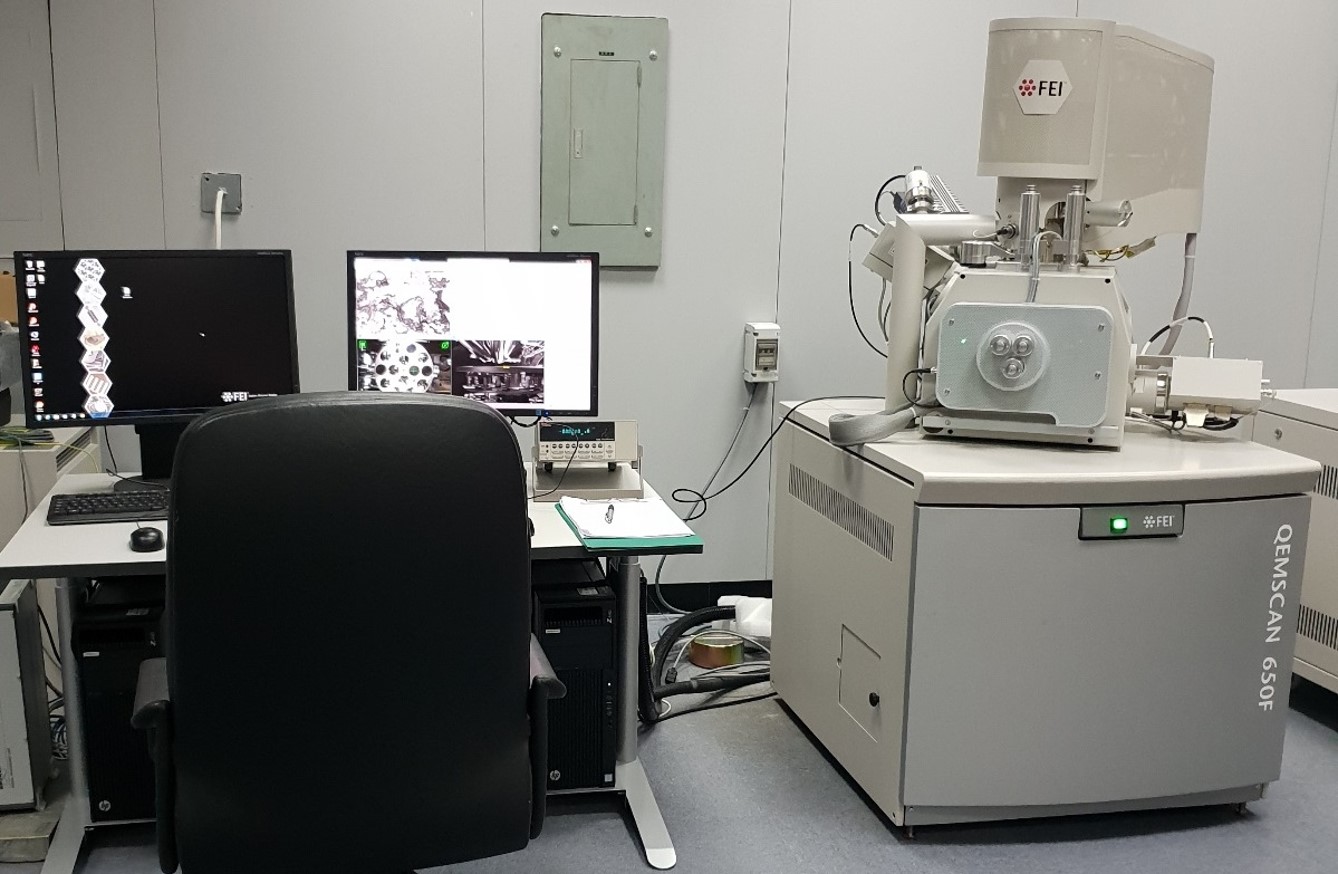
Automated Mineralogy Laboratory
Location: Building 15, Room 3205
The Automated Mineralogy Lab (AML) was built to map and quantify minerals for various applications. The AML has a complete set-up of instruments used in several stages. For instance, for sample preparation, Struers Accutom-50 is used to cut samples, Struers Tegramin-30 for polishing, and Q150T Quorum for carbon coating. The samples can be thin sections (typically 27 x 46 mm) or polished epoxied plugs (30 mm diameter). For the data acquisition and processing, the AML includes QEMSCAN 650F (Quantitative Evaluation of Minerals by Scanning Electron Microscopy) of FEI (Thermo Fisher Scientific) that is equipped with Quanta x50 FEG microscope, Dual Energy Dispersive X-ray Spectroscopy XFlash 6/30 Detectors of Bruker, multiple Species Identification Protocols (SIP), and several acquisitions and processing software (iMeasure, Esprit 1.9, iDiscover, iExplorer, and Maps). The SIP files are usually designed to analyze sedimentary, igneous, and metamorphic rocks for various applications. The QEMSCAN 650F is mainly operator-independent, time efficient, and generates reproducible and statistically valid results.
Contact: Abdullah M. Alqubalee for more info.
CT Scan Laboratory
Location: Building 78, Room 0015
The lab has the capability to perform scans for whole rock cores using the latest Medical CT scanner: Toshiba Alexion TSX-032A medical X-ray CT scanner (resolution > 1 mm). The scans help to identify major fracs / wormholes inside the cores to better understand the features of the rocks. Images obtained from Medical CT scanner and Micro-CT in lab 6209 can be visualized in specialized software (Avizo, PerGeos) on a devoted workstation (Dell Precision Tower 7910; Dual Intel® Xeon®; 256 GB of RAM; NVIDIA® Quadro® K6000 12GB video card) to further segment and characterize the rock samples.
Contact: Syed R. Hussaini & Hani S. AlMukainah for more info.
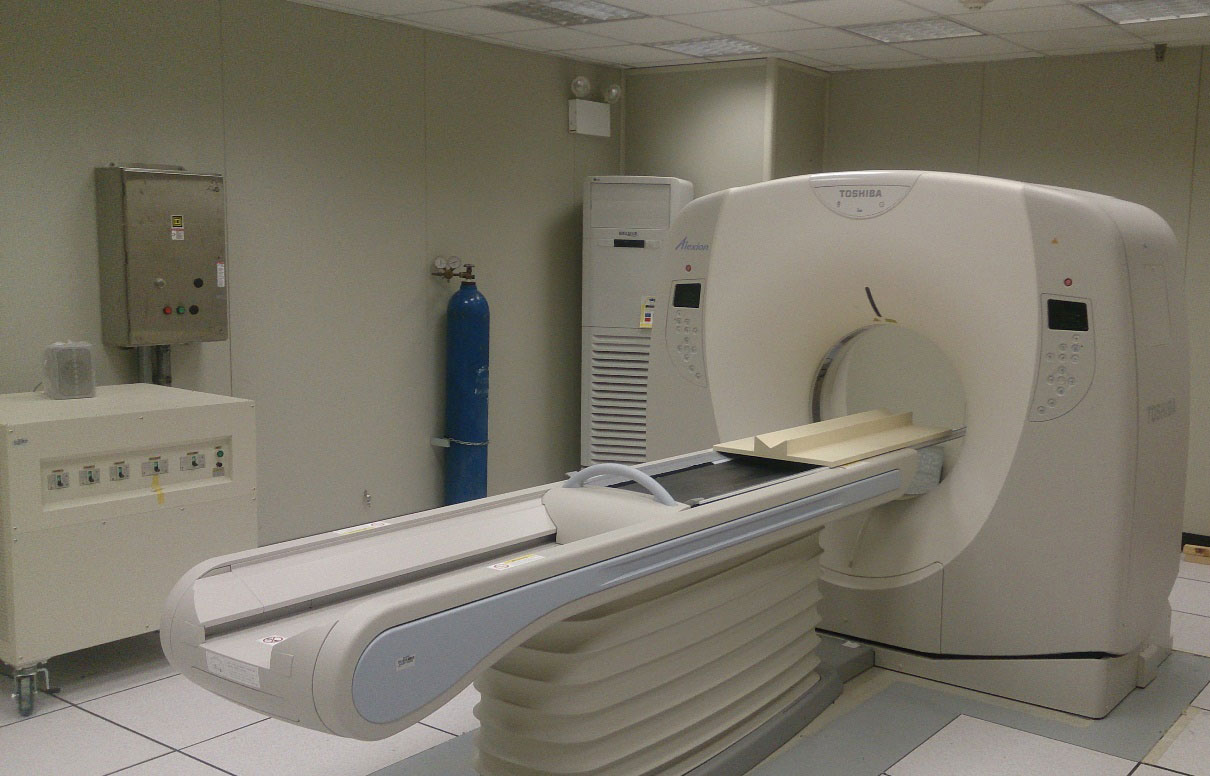

Petrography & Scanning Laboratory
Location: Building 78, Room 0012
The petrographic laboratory houses multiple state-of-the-art binocular stereo- and optical-petrographic microscopes (Olympus). All microscopes are equipped with high-definition cameras linked to imaging software for capturing thin-section photomicrographs. Such facilities allow geologists to study rock slabs, core plugs, and petrographic thin sections to study rock fabrics, mineralogical composition, textures, microstructures, and pore types and conduct pore visual estimates. Such information can be applied in hydrocarbon source rock, reservoir and aquifer characterization, and mineral exploration.
Contact: Dr. Lamidi O. Babalola & Abdullah M. Alqubalee for more info.
Fluid Thermo Physical Properties Laboratory
Location: Building 78, Room 2010
This is an oil and gas laboratory for the measurement and analysis of advanced fluids such as crude oil, and supercritical CO2 (scCO2) or modified supercritical CO2. Experimental studies on complex fluids in this laboratory are targeted toward characteristics of conventional and unconventional reservoir fluids and scCO2, at high temperatures and high pressure for heavy oil recovery and scCO2 storage in depleted oil reservoirs and a good understanding of the reaction kinetics and mechanism between the stimulation fluid such scCO2 and reservoir rock. The PVT and RDA systems are the two major pieces of equipment for characterizing fluid samples in this laboratory. In addition, an HTHP viscometer can be used in this Lab to measure the viscosity of crude oil, scCO2, and the mixture of crude oil and scCO2
Contact: Xianmin Joe Zhou for more info.
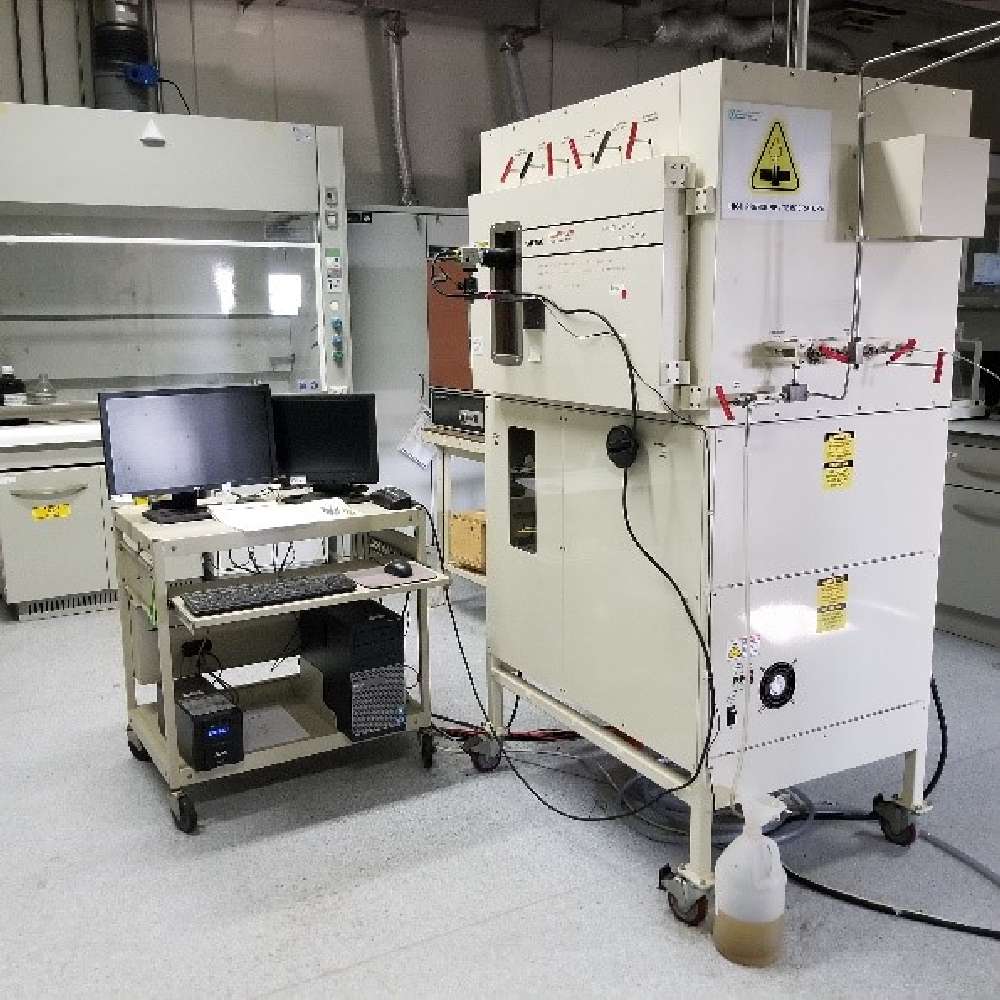
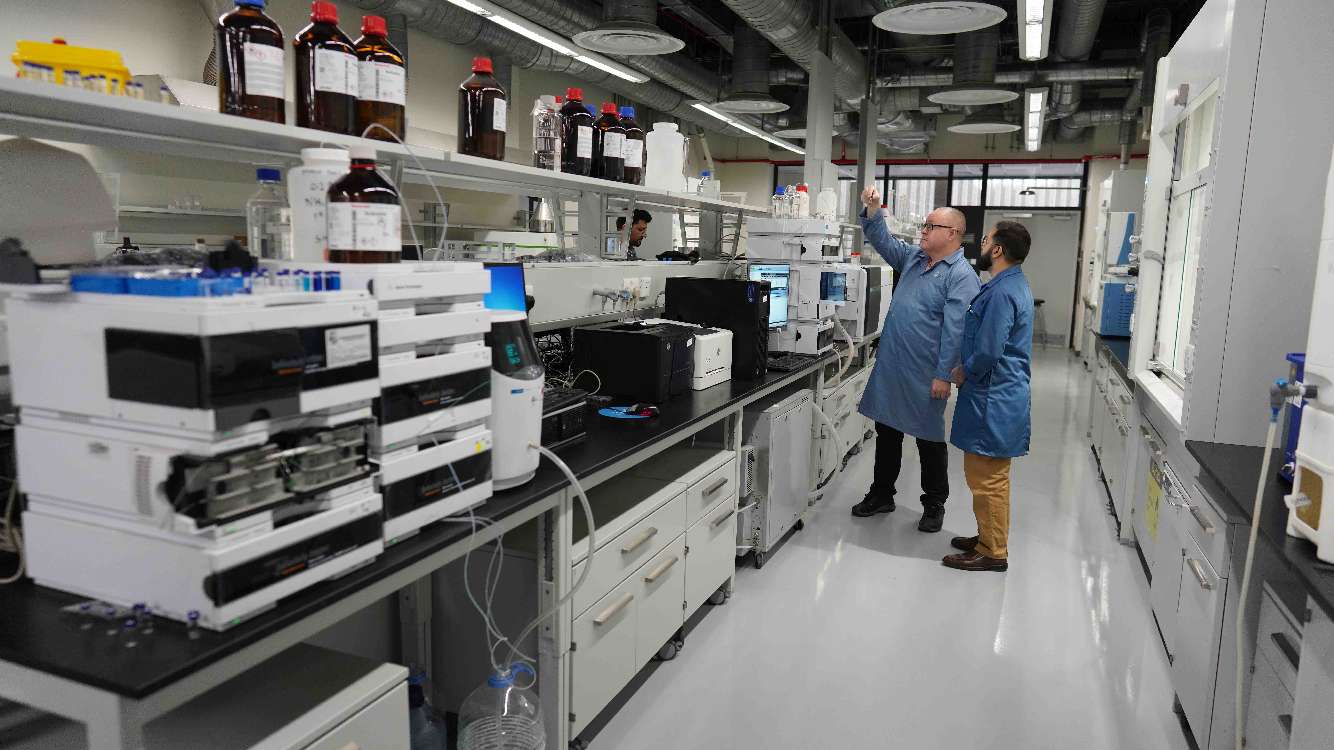
Analytical Laboratory
Location: Building 78, Room 1015
The Analytical Laboratory provides expert analytical testing and characterization services to the CPG-CIPR research community using a wide range of advanced analytical instruments. Available facilities include an ICP-OES, GC-MS, LC-MS, HPLC-ELSD, FT-IR, particle size analyzer, TGA, and a refractometer. These advanced techniques are employed to analyze a broad range of materials hereunder petroleum (crude oil and other hydrocarbon products), gas, oil field chemicals (polymers, surfactants), rock/clay, and petroleum fluids (brine and produced water).
Liquid Chromatography-Mass Spectrometry (LC-MS)
LC-MS is an analytical technique that combines the physical separation capabilities of High-Performance Liquid Chromatography (HPLC) with the additional capabilities of MS/MS mass spectrometry. The latter enables the determination of molecular weights and complex structures via the mass selection with one mass analyzer and mass characterization with a subsequent one (MS/MS). The chromatographic columns in place can separate multicomponent mixtures and there it is possible to provide the structural identity of the individual components on a molecular level.
HPLC-Evaporative Light Scattering Detection (HPLC-ELSD)
Another HPLC system in the laboratory is connected to an Evaporative Light Scattering Detector (ELSD) that enables all materials to be detected that can pass through the HPLC column. This setup is being used to quantify surfactants in experiments involving various forms of adsorption to rocks.
Contact: Dr. Kion Norrman for more info.
Fluid Characterization Laboratory
Location: Building 78, Room 1016
This laboratory is equipped with state-of-the-art equipment required to assess the performance of chemicals and their interactions used in enhanced oil recovery such as surfactants and polymers at reservoir conditions. Drop shape analyzers and interfacial equipment are available for the characterization of solid-liquid and liquid-liquid interfacial properties at different conditions. The lab facility is also equipped with state of art HPFA High-Pressure Foam Analyzer from Kruss. This is the world’s only measuring instrument for simultaneously analyzing the amount and structure of liquid foams under high pressure high temperature. The instrument provides various options for investigating foam behavior under the real process conditions of foam-assisted flooding methods in EOR as well as hydraulic fracturing.
Contact: Dr. Muhammad S. Kamal, Ahmed Mahboob & Mobeen Murtaza for more info.
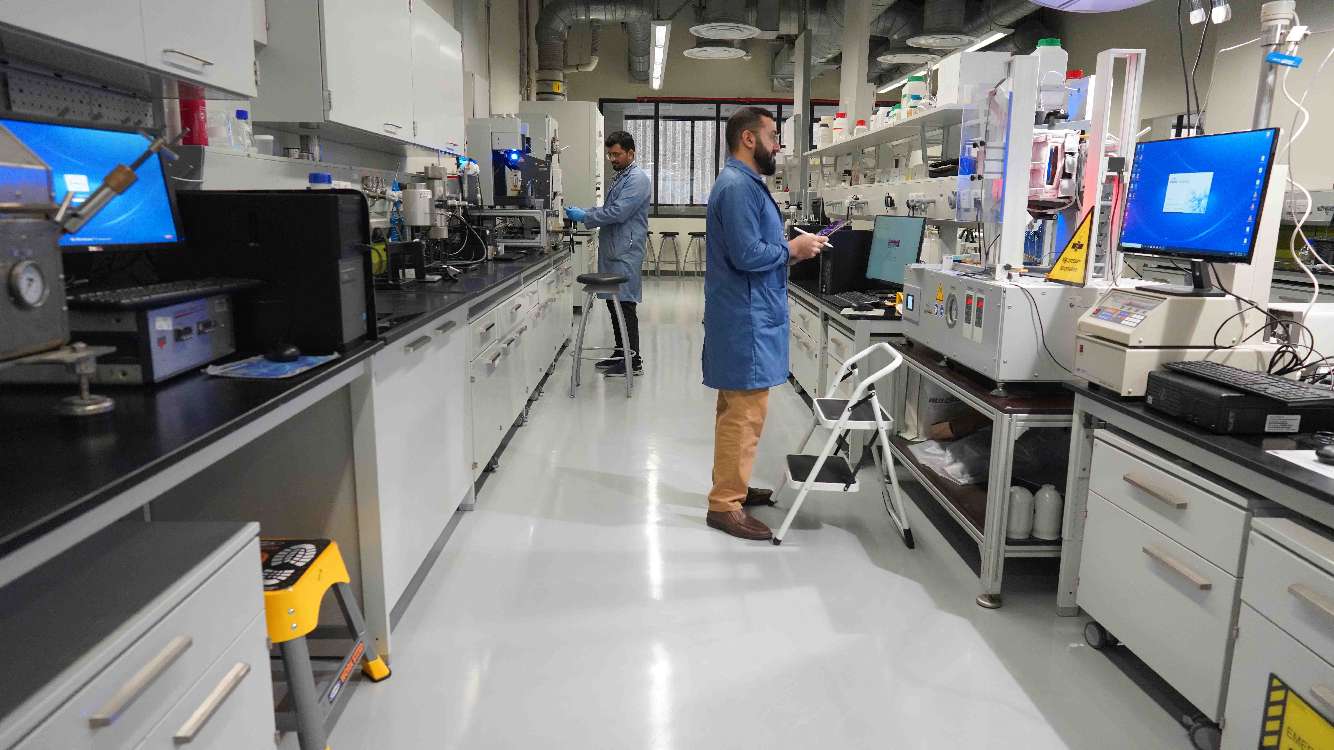
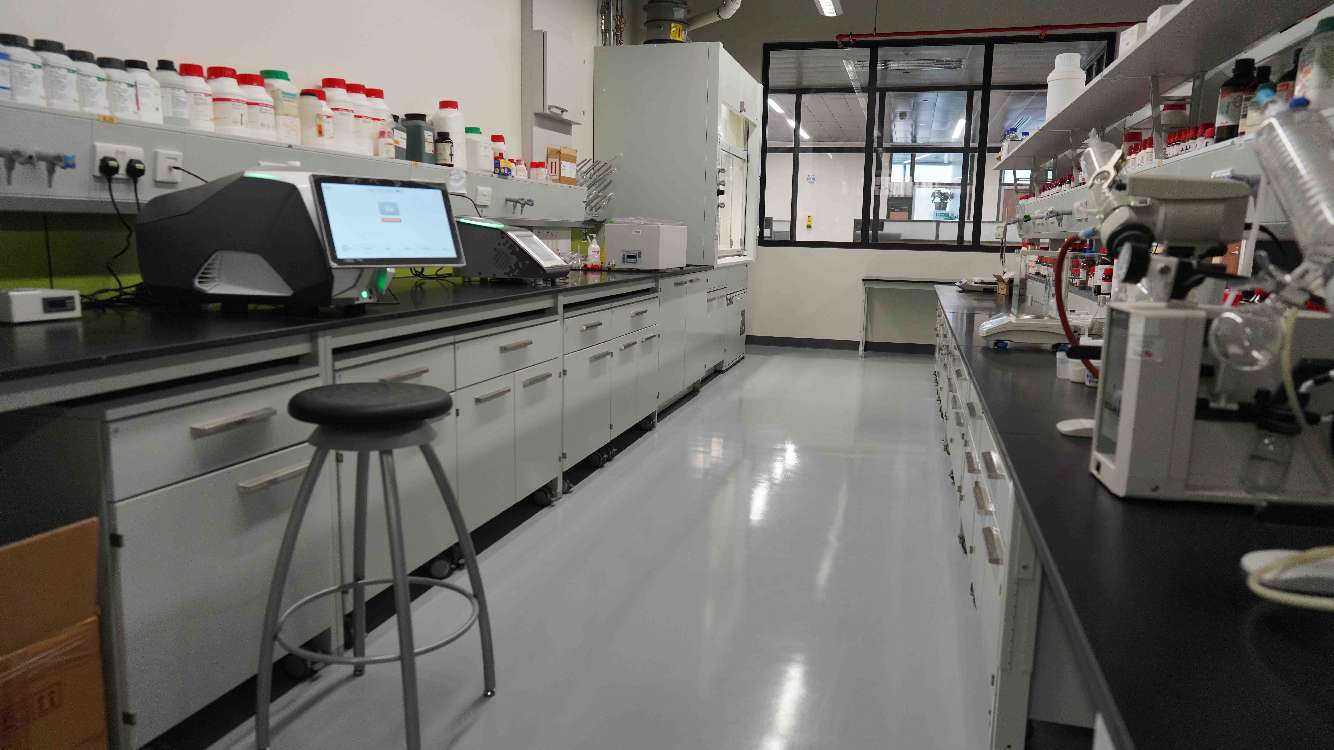
Synthetic Chemistry Laboratory
Location: Building 78, Room 1014
This laboratory is dedicated to the synthesis of alkaline, surfactants, polymers, chelating agents etc. The synthesized products have different oil field applications including acid diversion, well stimulation, and enhanced oil recovery. The laboratory has recently been renovated with two well-ventilated fume hoods to provide personal protection against toxic vapors, fumes, and dust. The laboratory is fully equipped with the required chemicals, solvents, ordinary supplies, and glassware for the synthesis of products.
Contact: Dr. Syed M. Shakil Hussain, Dr. Muhammad S. Kamal & Mobeen Murtaza for more info.
Nano CT / Micro CT Laboratory
Location: Building 78, Room 0003
The lab has the capability of imaging and digitization of rock samples using micro-CT scanner: Zeiss VersaXRM-500 X-ray micro-CT scanner (True Spatial Resolution™ > 0.7μm). Micro-CT imaging enables assessment of the internal structure of the rock samples and their pore systems at various resolutions 1–50 micrometer. Micro-CT imaging provides us with a representation of the rock sample for reference and future use in digital rock physics studies.
Contact: Syed R. Hussaini for more info.
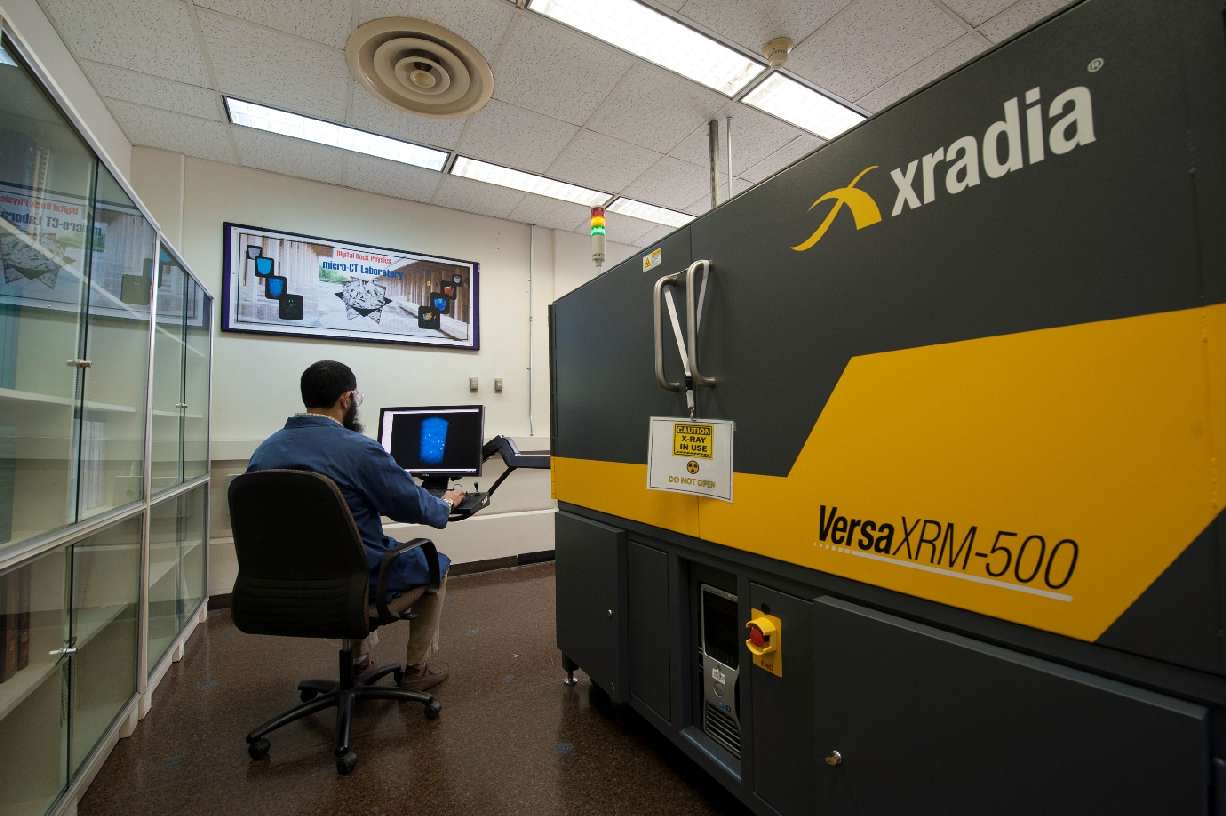
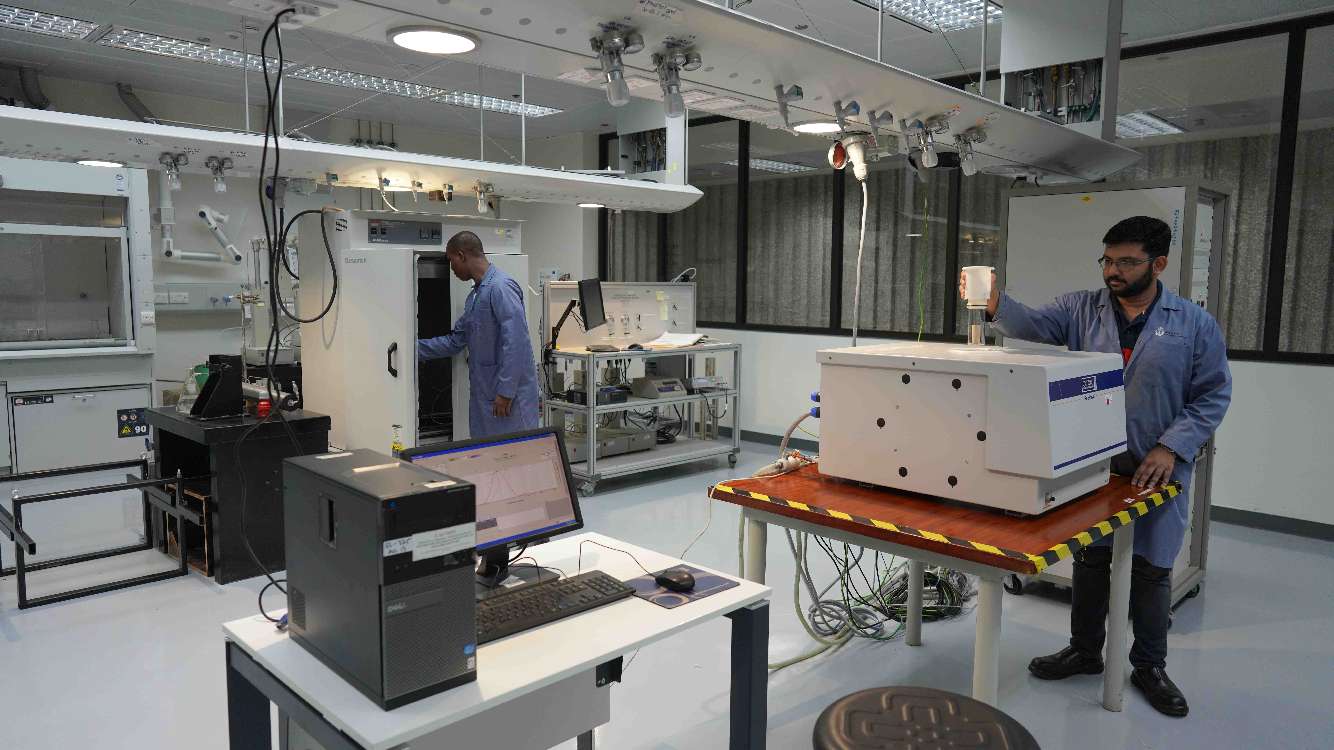
Advanced Petrophysics Laboratory-A
Location: Building 78, Room 3053
NMR rock analysis provides information about important properties of the rock, such as: Porosity, Effective porosity; BVI, CBW, FFI; Permeability relationship; Pore size distribution; Hydrocarbon typing; Viscosity; Total liquid volume (oil + water); Tortuosity (by way of diffusion); Wettability; and Diffusion distribution. CIPR currently hosts Oxford Instruments' Geospec2-75, operating at 2.2 MHz frequency with the capability of testing cylindrical samples of up to 2” diameter.
It is complemented by the GIT Systems Advanced software which allows simple repeatable experiments as well as a set of advanced state of the art NMR applications. An overburden cell is also being purchased to perform NMR measurements at reservoir conditions.
Contact: Dr. Abdulrauf Adebayo, Rahul S. Babu and Suaibu O. Badmus for more info.
Advanced Petrophysics Laboratory-B
Location: Building 78, Room 3054
The advanced petrophysics laboratories are equipped with state-of-the-art equipment that allow fundamental studies of rock properties and their interaction with reservoir fluids. The list of equipment includes a bench top and a high pressure-high temperature electrical resistivity and capillary pressure apparatus, gas sorption analyzer, a low field (2.2 MHz) nuclear magnetic resonance core analyzer, humidity oven, spontaneous drainage and imbibition cells, and a specially built Coreflood apparatus coupled with axially distributed electrical resistivity and pressure sensors that are used to monitor flow behavior of fluids in long core samples (3 ft long). This set of apparatus allows advanced petrophysical studies of conventional & unconventional rocks (such as tight sands and shales) and flow behavior of complex fluids (such as foam, sCO2, emulsion) in rocks. Experiments can be done at ambient and reservoir conditions.
Contact: Dr. Abdulrauf Adebayo, Rahul S. Babu and Suaibu O. Badmus for more info.

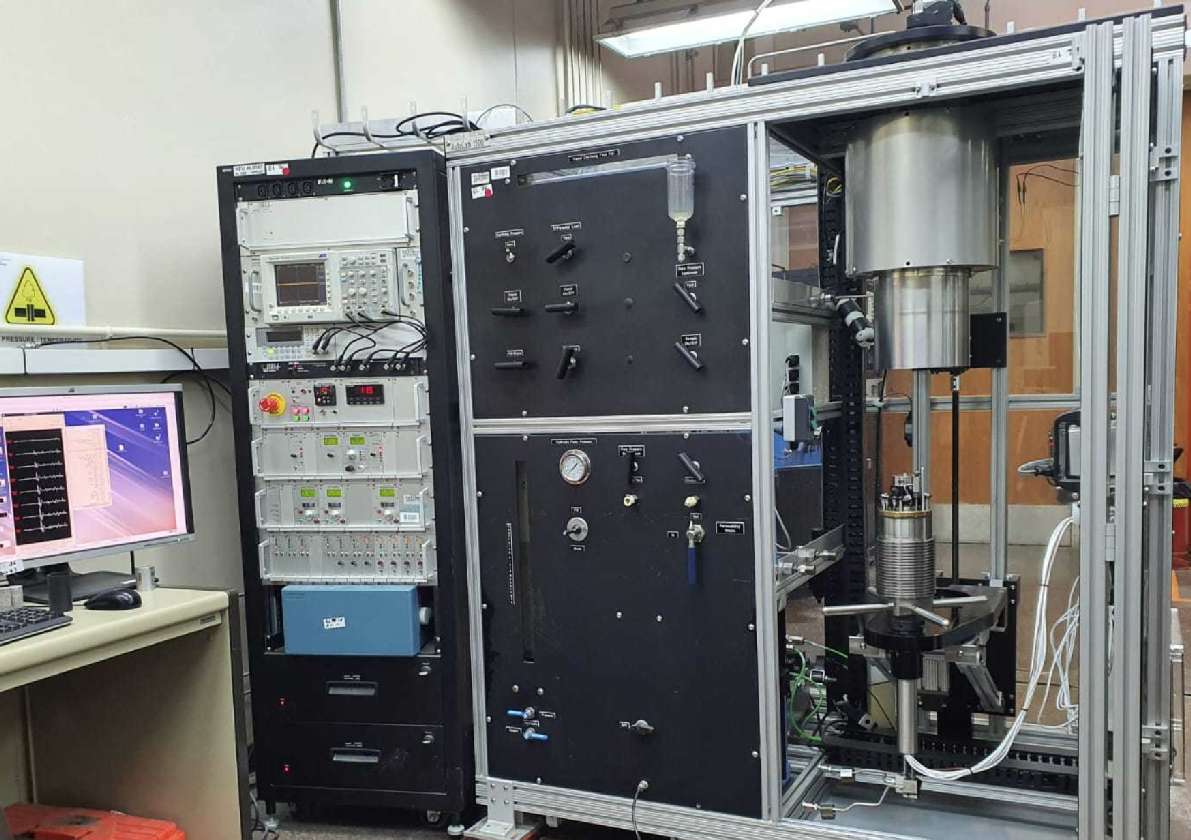
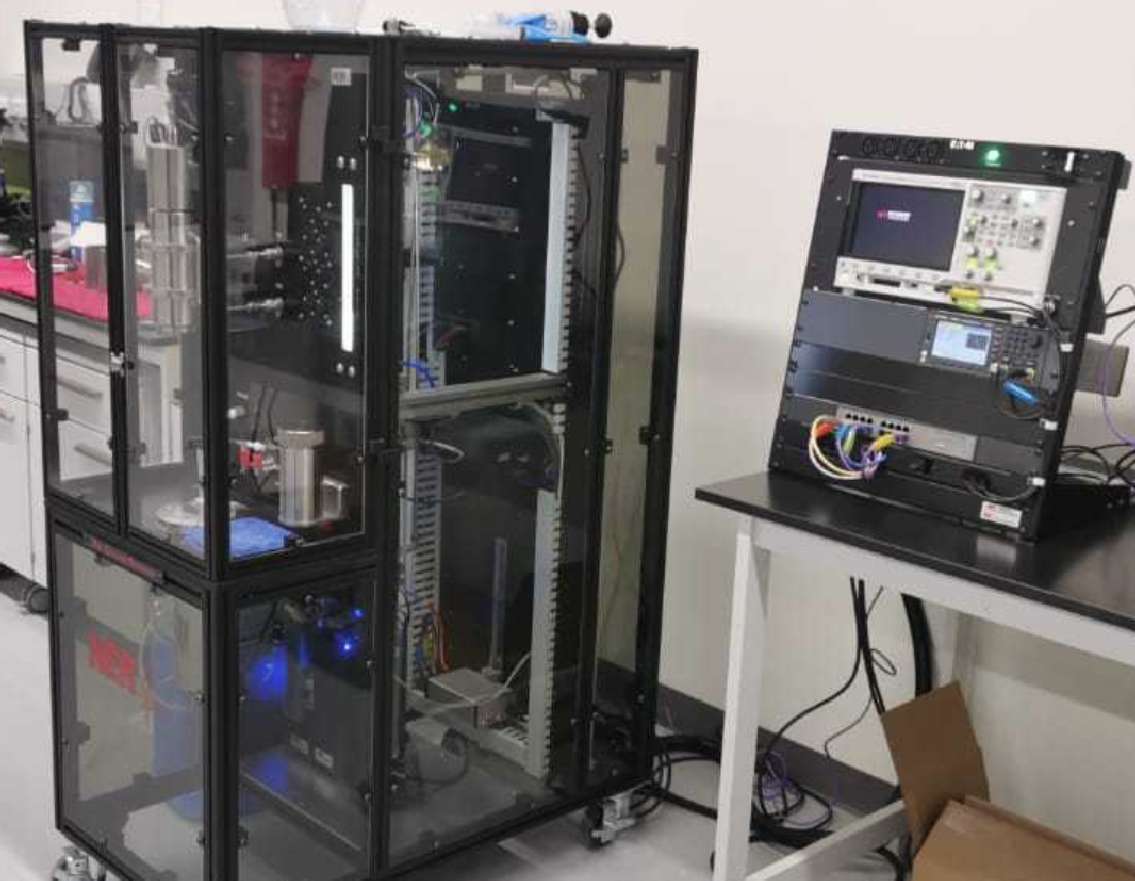
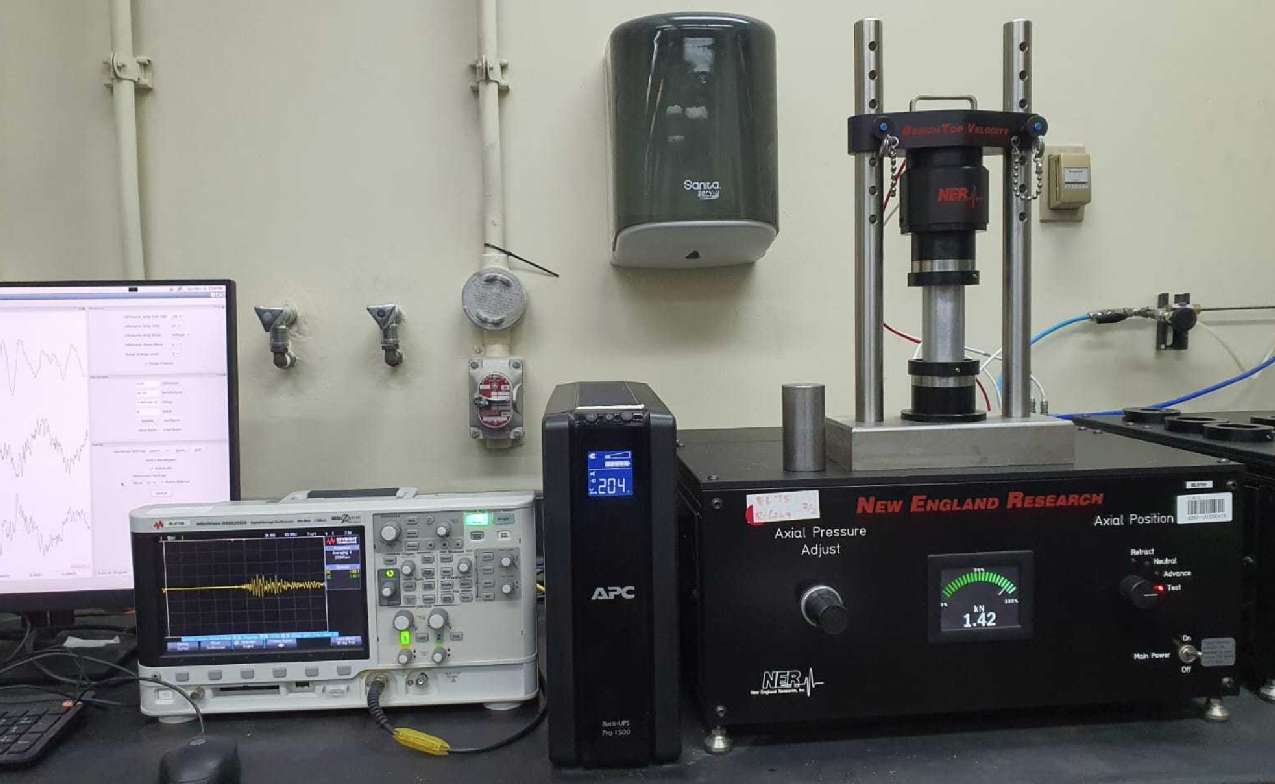
Rock Mechanics Laboratory
Location: Building 78, Room 1010
The rock mechanics lab is equipped with the state of the art facilities for testing the mechanical properties of rock samples. The following tests can be conducted at ambient and reservoir conditions: dynamic test (compressional and shear waves), unconfined compression test (UCS), triaxial test (drained, undrained, jacketed, single stage, multi-stage, hydrostatic compression), rock compressibility, and others.
- AutoLab 1500: High pressure triaxial system for measuring both static and dynamic geomechanical properties as well as resistivity at reservoir pressures up to 70 MPa (10,000 psi).
- AutoLab 500: Manually operated hydrostatic system for measurements of compressional and shear wave velocities at reservoir pressures up to 70 MPa (10,000 psi).
- Benchtop Velocity: Measurements of compressional and shear wave velocities at ambient pressure.
- BenchLab 7000: Designed to measure petrophysical rock properties at reservoir pressures in a compact modular setup. Properties measured include porosity, permeability, low permeability, and electrical resistivity at confining pressures up to 10,000 psi (70 MPa) with gas or liquid pore fluids.
- COMSOL Multiphysics simulation of rock mechanics stress strain lab experiments based on advanced numerical methods.
- Advanced Resistivity ARS-300: 4 electrode resistivity measuring system for ambient and reservoir pressure conditions.
- Proceq Pundit: Portable ultrasound pulse velocity measuring system to analyze rock sample properties using a frequency range 20 to 500 kHz.
- CAMSIZER X2: Particle size and shape analyzer with a wide measuring range for grain sizes using dynamic image analysis.
Contact: Dr. Ammar El-Husseiny or Saud Al-Dughaimi or Taqi Alzaki for more info.
Laboratory for Advanced Reservoir experimental studies
Location: Building 78, Room 1009
This laboratory is equipped with state-of-the-art equipment required to assess the performance in second and tertiary oil recoveries by seawater, carbonate water, chemical solution ( surfactants and polymer solutions), foaming, and supercritical CO2 injection at reservoir conditions. Several apparatus are located in this lab, including a dual-core core flooding apparatus, CO2/N2 foaming rheometer, X-Ray relative permeability apparatus, apparatus for Phase Behavior/Compatibility Study, Centrifuges, and modified core flooding apparatus. All apparatus in this Lab is applied to work at high temperatures and high pressure.
Dual-core core flooding apparatus: Two core holders with different lengths are installed in a controlled-temperature oven and can be placed horizontally, vertically, and 60o degrees in between. The length of the testing core sample is 45cm and 25cm, respectively. The apparatus can be used to conduct that single-phase fluid is injected simultaneously into both core samples in the core holders with the same injection flow rate or two fluids are injected individually into each core sample with different injection flow rates. The apparatus is applied to study oil recovery and its impact related to waterflooding, chemical injection, and ScCO2 miscible and immiscible displacements and scCO2 storage study. The maximum temperature is up to 150oC and confining pressure and pore pressure are 10,000psi and 6,000psi, respectively.
X-Ray relative permeability apparatus: The apparatus can be used to measure relative permeability for water/oil. Gas/oil, gas/water, and water or oil/scCO2 systems at HTHP conditions. The X-Ray core holder can be placed horizontally, or vertically and at any angle. The steady-state and unsteady-state relative permeability of the two-phase flow can be measured and the experiment regarding oil recovery and its impact by injecting any displacing agent can be conducted at HTHP conditions. The saturation profile can be measured in situ during the experiment. In addition, the experiment of scCO2 storage capacity and evaluation of caprock can be performed. The maximum temperature is up to 150oC and confining pressure and pore pressure are 10,000psi and 6,000psi, respectively.
Apparatus for Phase Behavior/Compatibility Study: APBC-300 is a first-of-its-kind equipment designed by Eng. Xianmin Zhou. This equipment consists of four independently operated, fully visual HPHT Hastelloy cells connected to four accumulators which locate fluids and a moveable high-quality zoom microscope camera with analysis software. It can be used to study: phase behavior, emulsions, foaming, and solubility between water or crude oil and scCO2 at reservoir conditions (maximum working pressure up to 10,000 psi and temperature of 150°C). In addition, the study on the modification of scCO2 with chemical solutions can be performed using this apparatus.
CO2/N2 foaming rheometer: The rheometer is used to measure the relationship between the shear rate and viscosity and evaluate the stability and bubble size of CO2/N2 foam at HTHP conditions. The shear rate is in the range of 0 to 1500 1/s. The foam generator is included in the rheometer for the Pre-generation of foam. The rheometer has an interface to connect to a core flooding apparatus for injecting qualified foam into the core plug for other research purposes. Designed to handle fluids and gases at temperatures up to 350°F, under a working pressure of up to 6,000 psi.
Contact: Redha Al-Abdrabalnahi for more info.
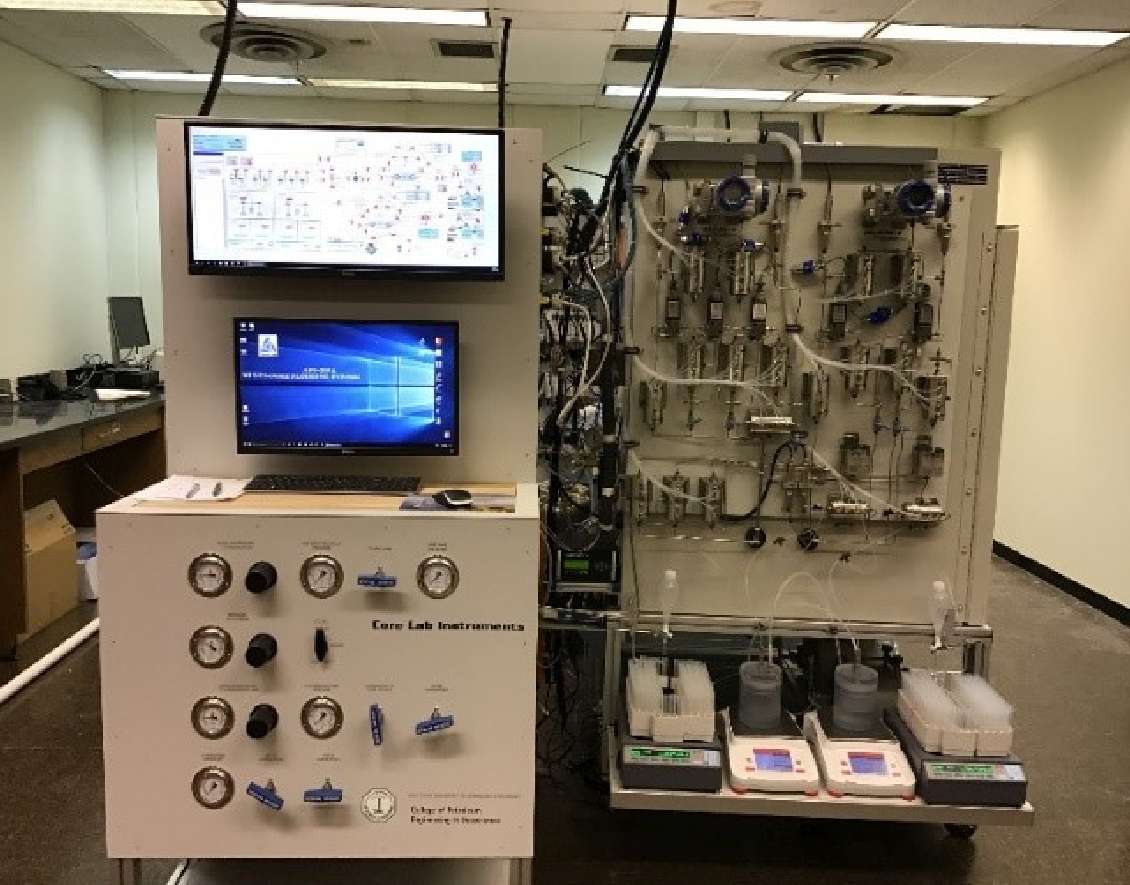
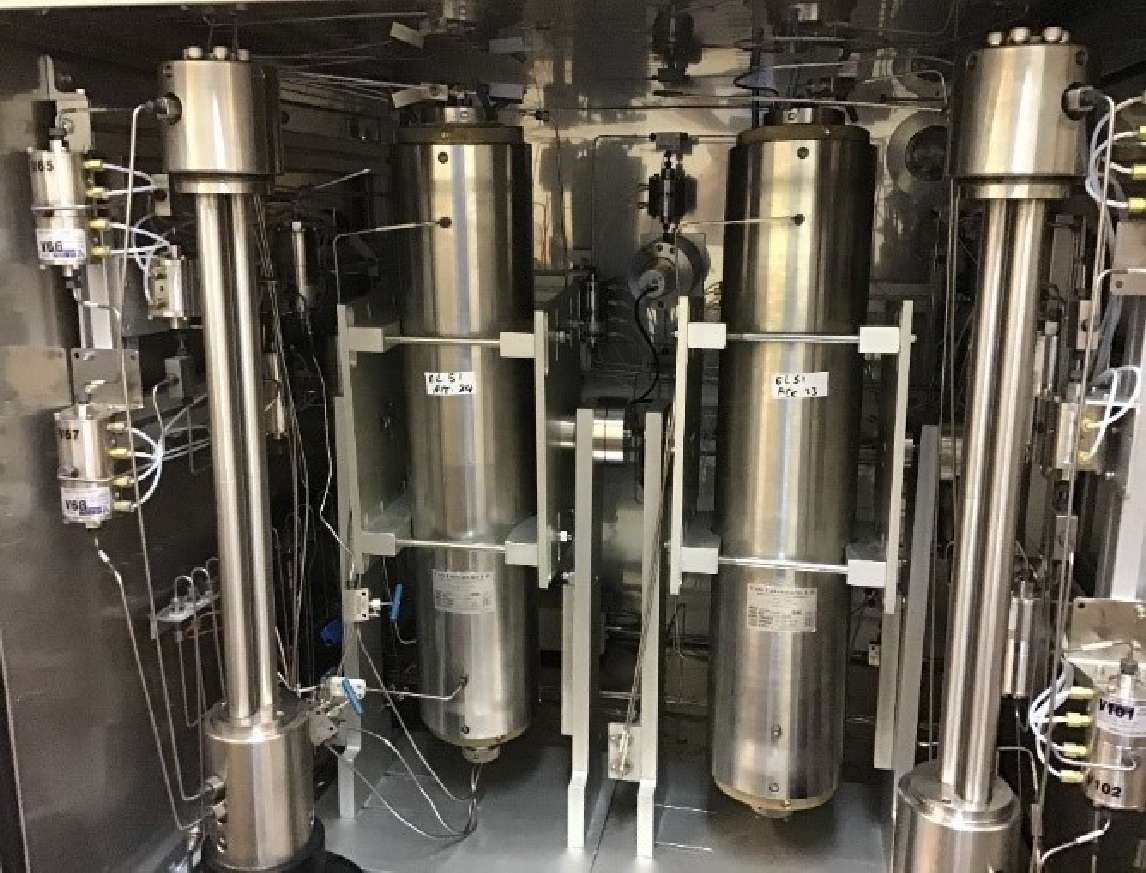
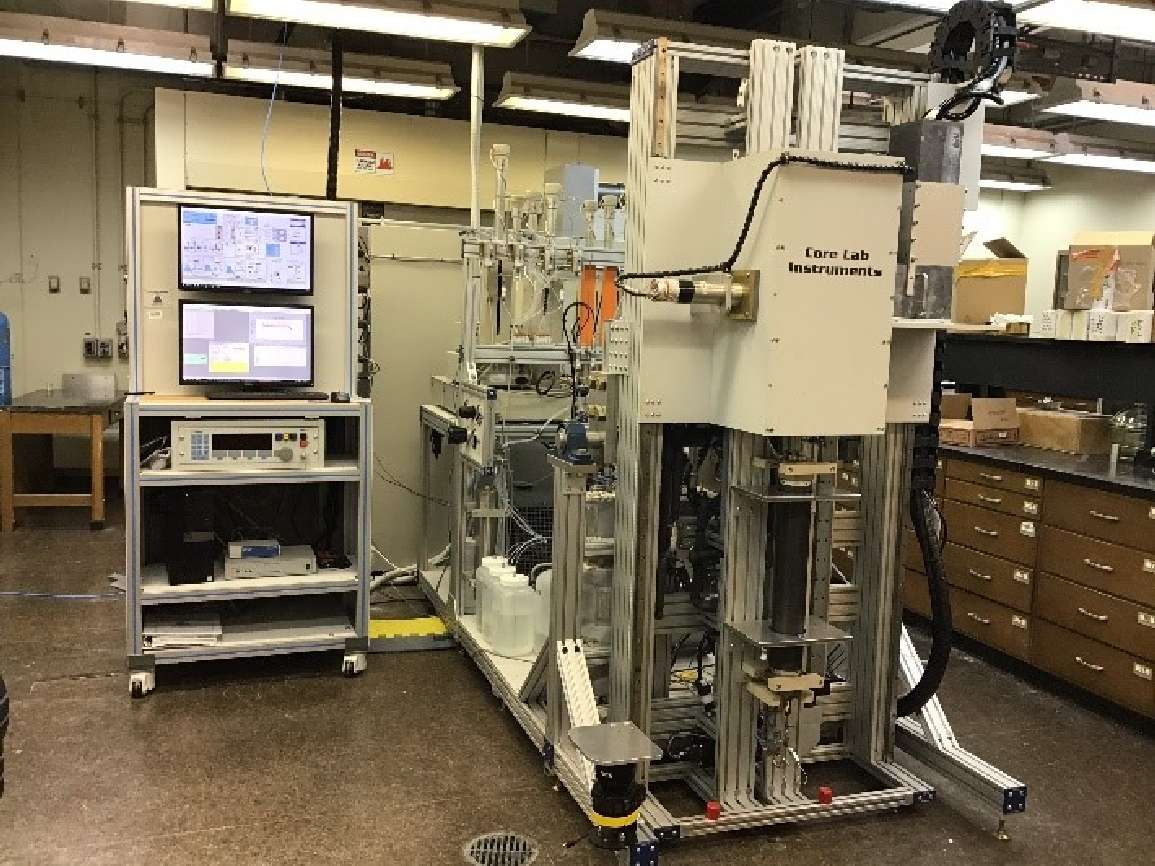
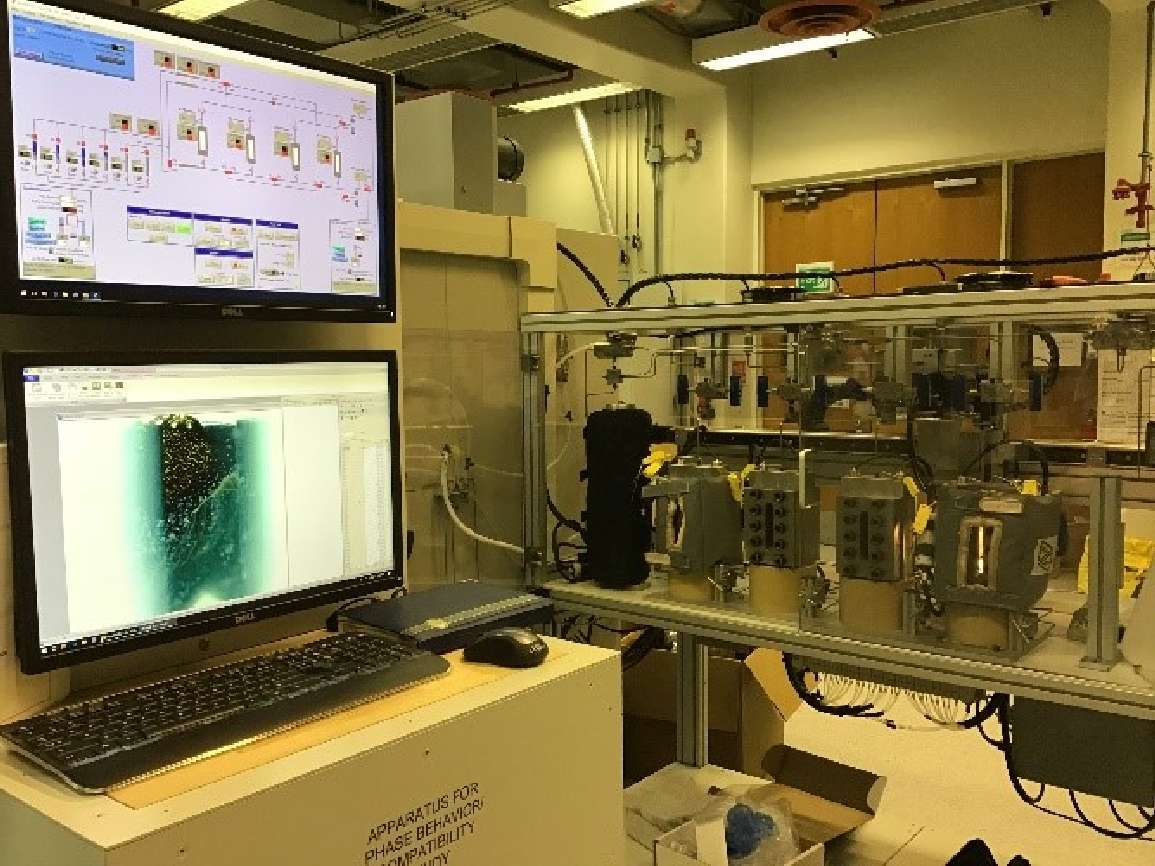
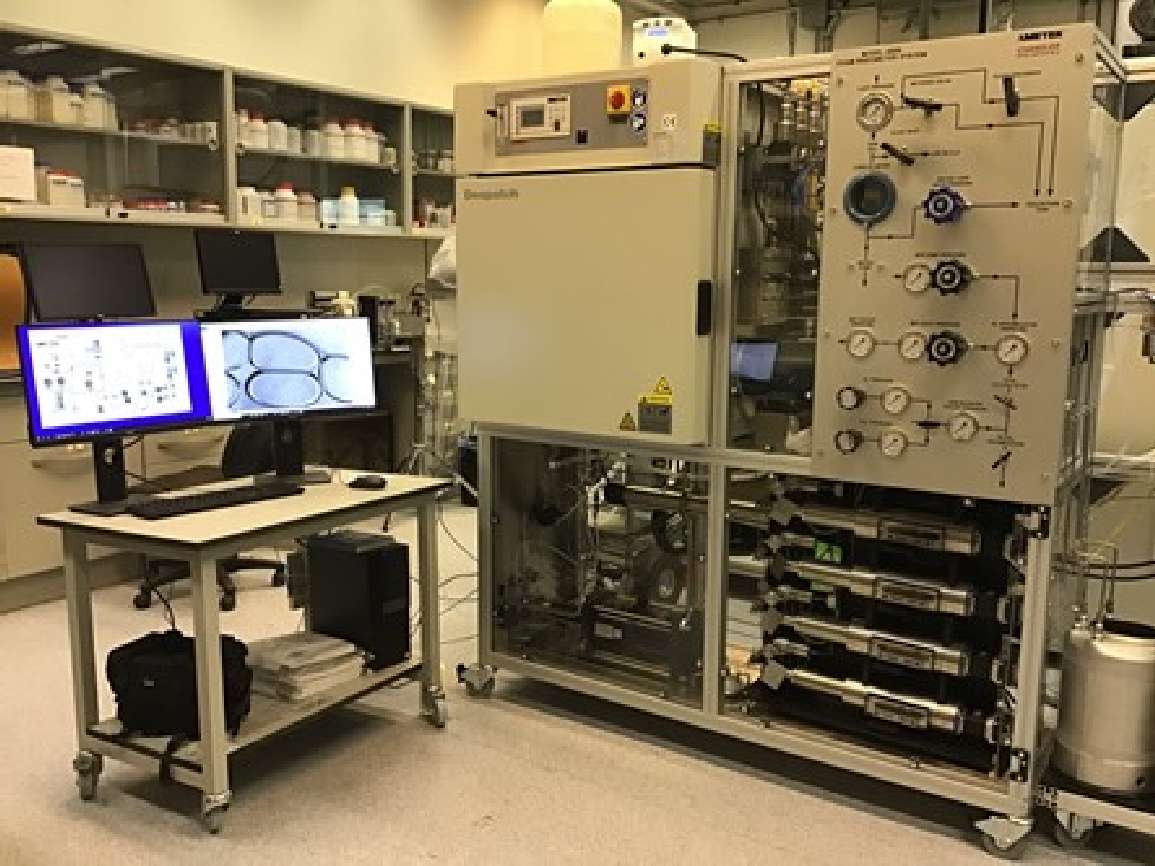
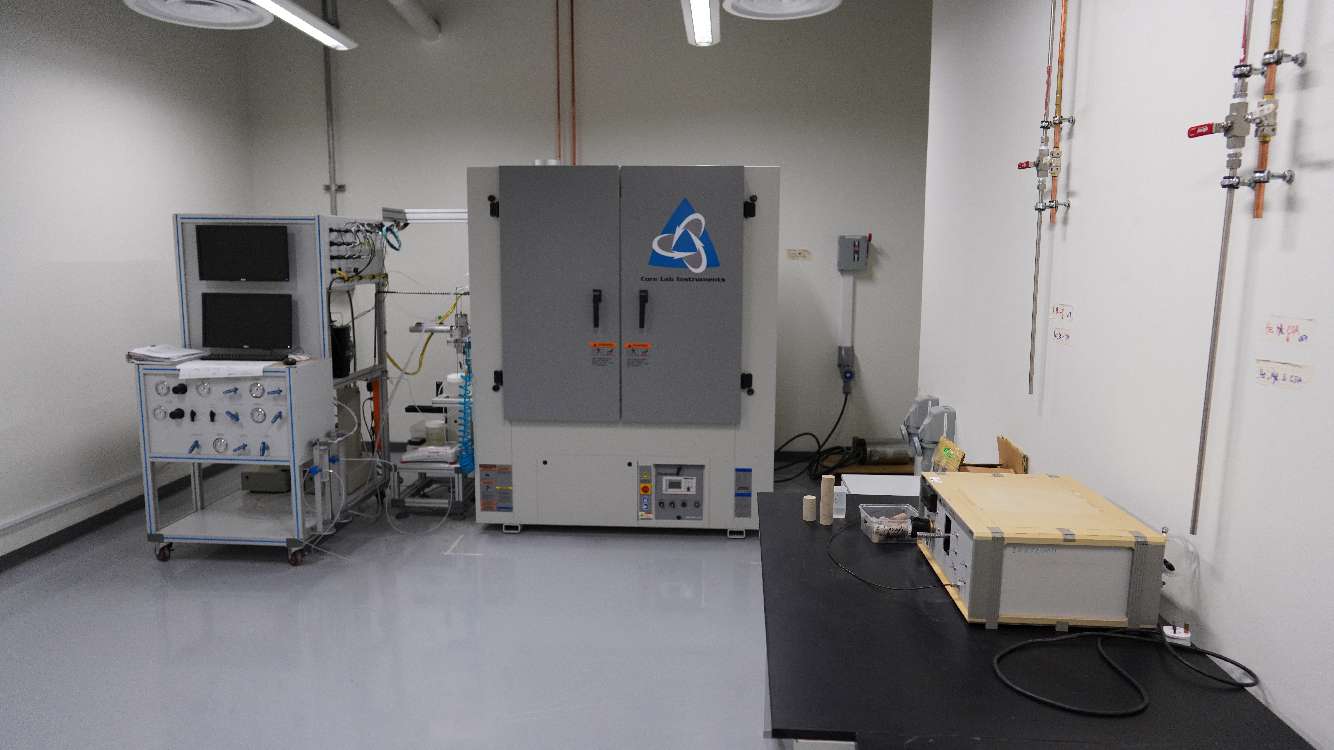
Routine Core Analysis Laboratory
Location: Building 78, Room 0028
This lab is dedicated to measuring the capillary pressure as well as wettability state reservoir rock by using Roc-fluid Centrifuge. In addition to that, an Automated Porosimeter/Permeameter is used to measure Ø and k at higher pressure up to 10,000 psi, and another Porosimeter to measure Ø at ambient pressure.
Contact: Redha Al-Abdrabalnahi & Sarmad Z. Khan for more info.
Thin Section Preparation Laboratory
Location: Building 78, Room 2060
This lab is dedicated for thin section preparation.
The laboratory is equipped with all kinds of equipment required for the preparation of thin sections, viz. Logitech (LP-30) polishing machine, Buehler PetroThin, Leco-MSX205 cutting machine, CS-10 cut-off saw, Microscope, and Fisher Isotemp Oven.
Contact: Fyl Louie Panoy for more info.
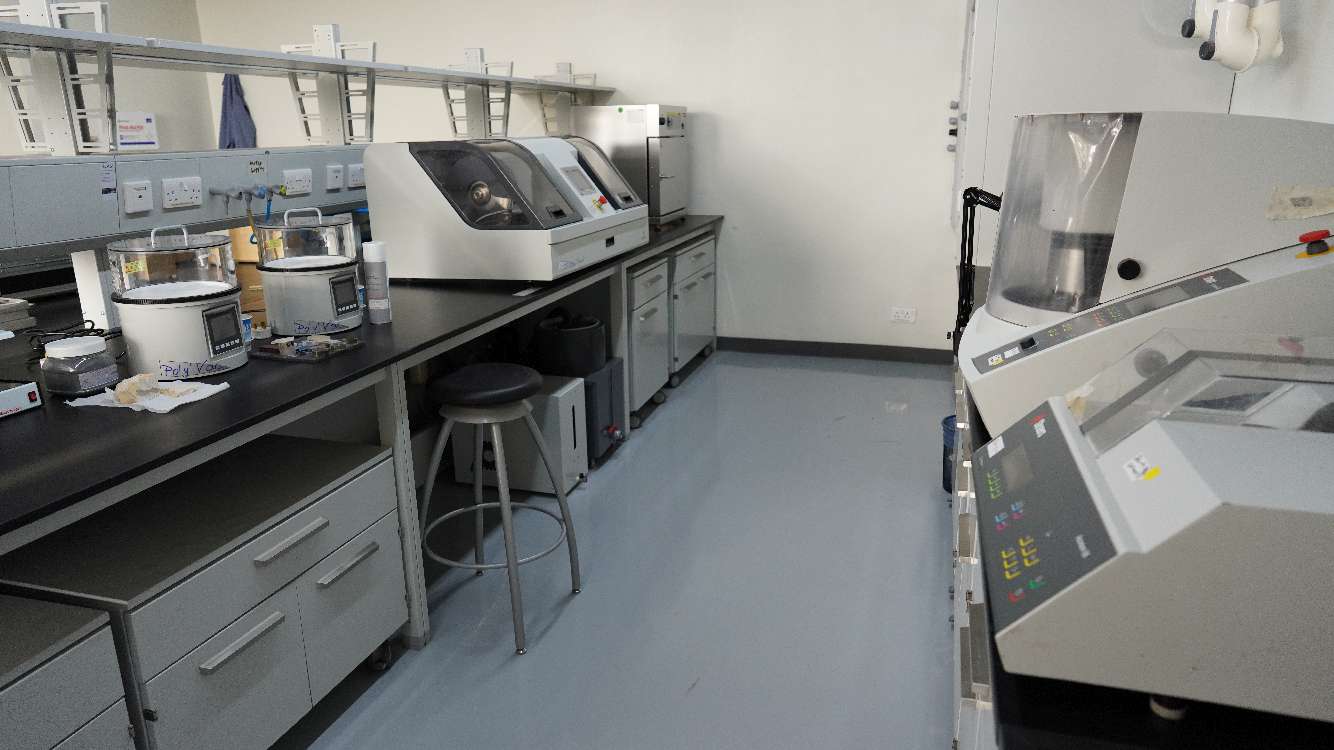
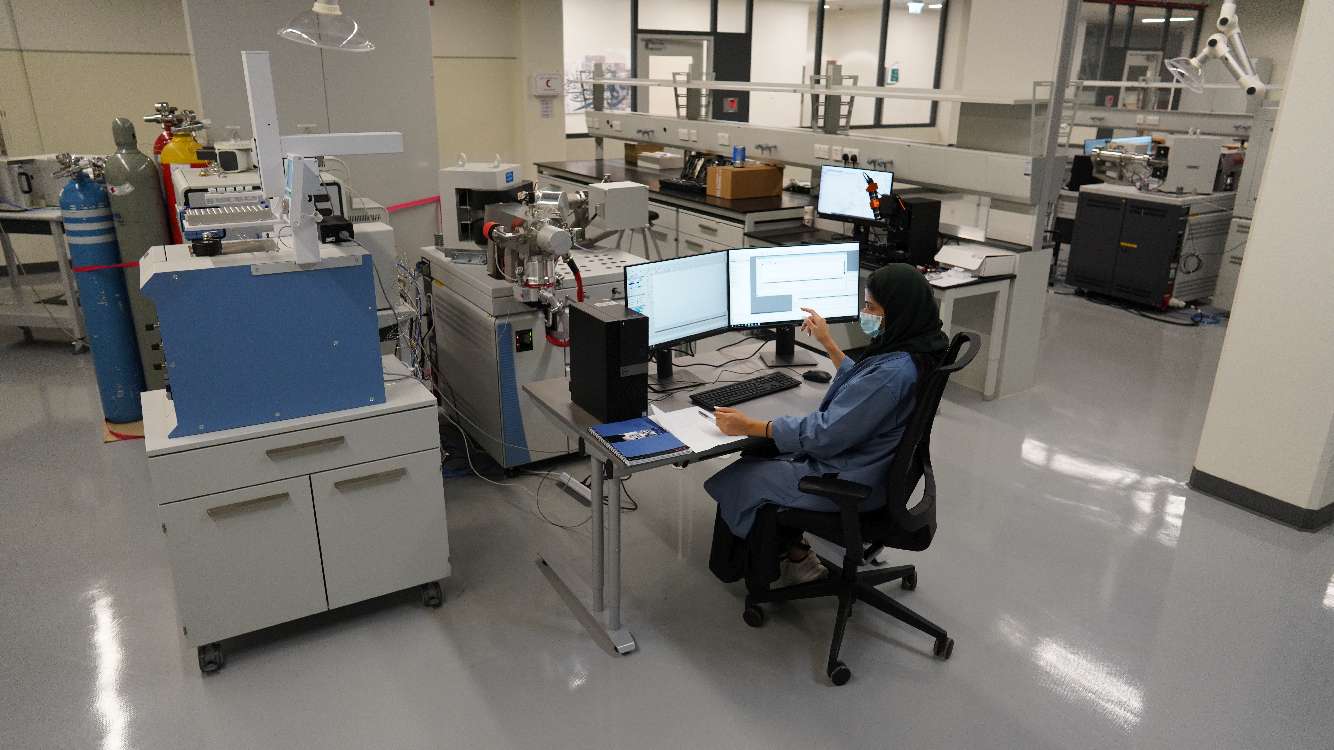
Stable Isotope Laboratory
Location: Building DTV-248 PEGTC, Room 131
The stable isotopes of hydrogen, carbon, nitrogen, oxygen, and sulfur are used as tracers of processes in a wide array of fields including geology, geochemistry, planetary science, archeology, ecology, biology, medicine, and pharmaceuticals. This lab uses these light stable isotopes to investigate rock-forming processes, rock-water interaction, petroleum source rocks, and environmental geochemistry.
Contact: Dr. John Humphrey for more info.
Femtosecond Laser Laboratory
Location: Building DTV-248 PEGTC, Room 132
A femtosecond is to a second roughly what a minute is to the age of the universe. In the femtosecond laser laboratory a pulsed laser is providing a time resolution of down to 90 fs with wavelengths in the range from 190 – 16000 nm. This enables the study of molecular motions on the timescale that they take place. This is relevant when it comes to the characterization of the phenomena that gives for example emulsification and effectivity of tracers.
Contact: Dr. Theis Ivan Solling for more info.
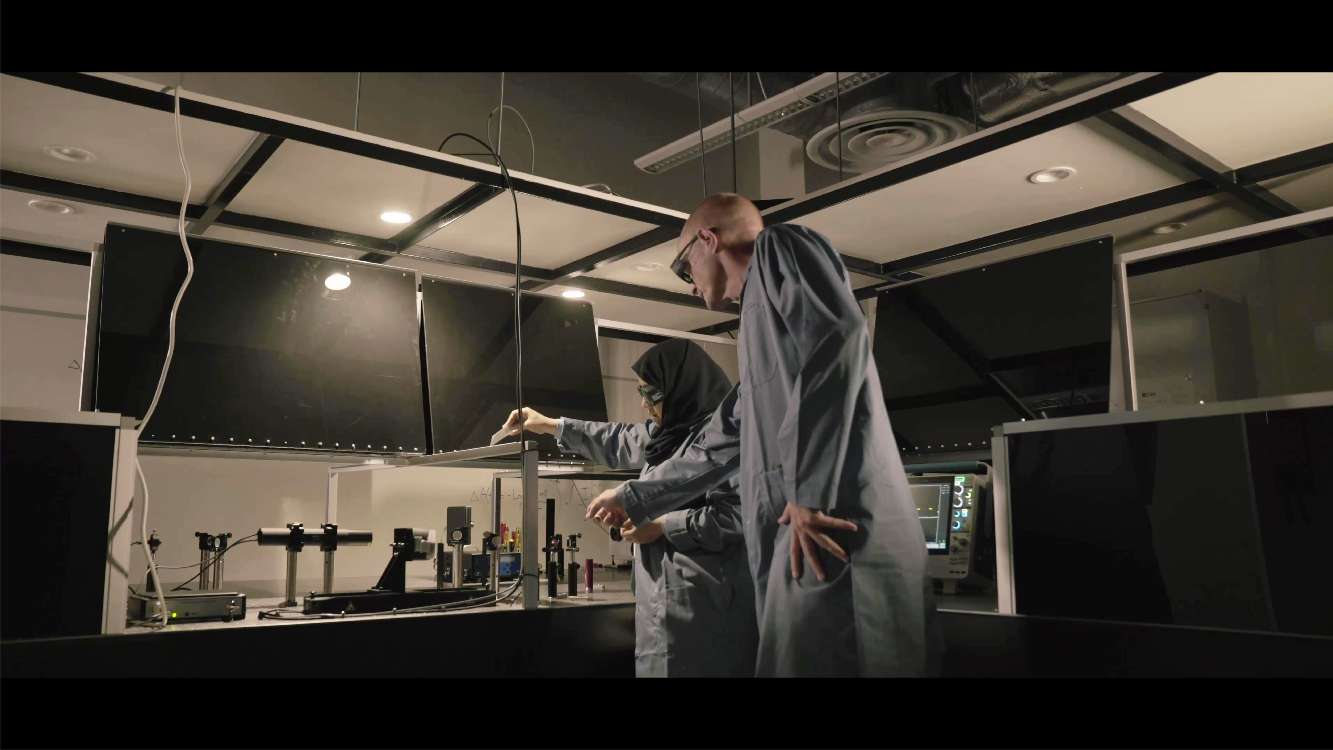
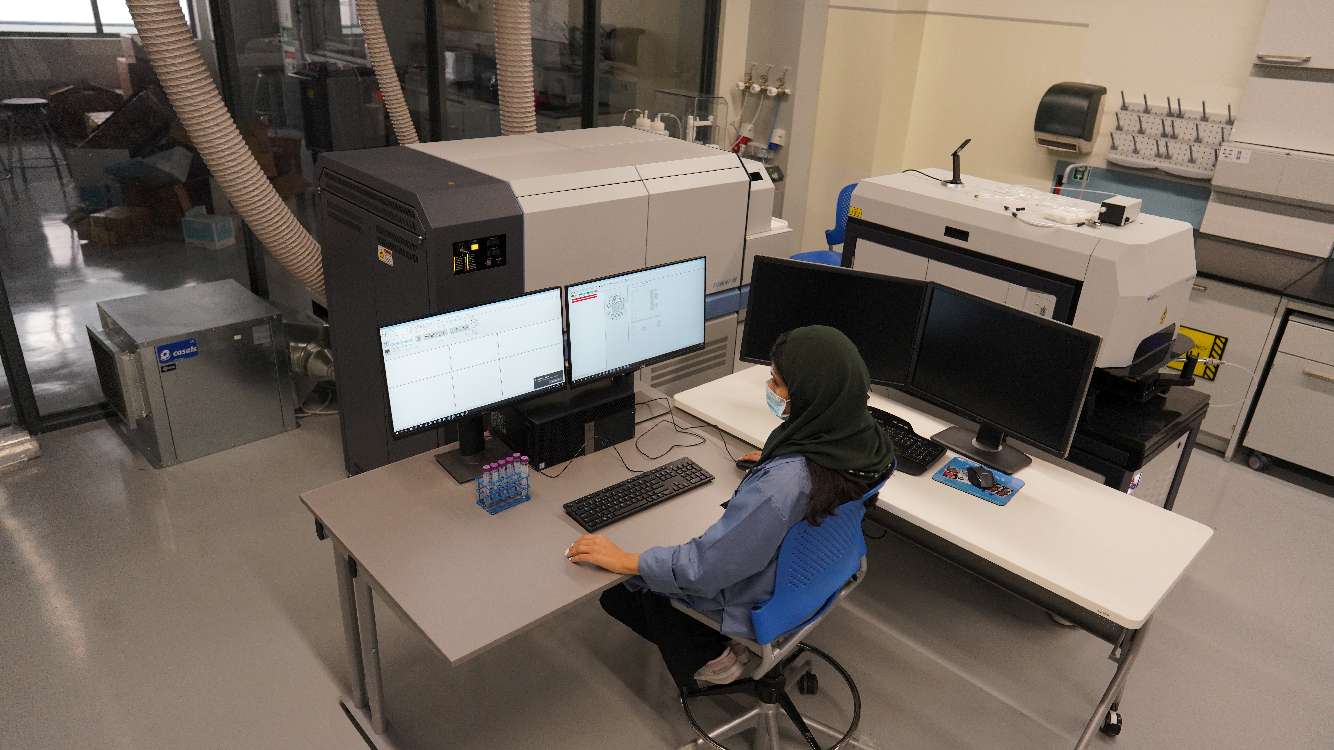
Heavy Isotope and Element Laboratory
Location: Building DTV-248 PEGTC, Room 134
The distribution of trace quantities of the elements in rocks and fluids can provide clues to their behavior through time. Heavy isotope systematics are key for constraining the age of rocks, timing of rock-forming episodes, and rates and durations of geological processes. Sensitive instrumentation in this lab can detect and measure nearly all the elements of the periodic table down to parts-per-quadrillion levels.
Contact: Dr. John D. Humphrey for more info.
Chemical Synthetic Laboratory
Location: Building DTV-248 PEGTC, Room 140
This laboratory is dedicated to nanoparticles synthesis using a variety of wet chemistry methods including microwave synthesis method (Anton Parr Monowave 450 and CEM Explorer 12), solvothermal method, sol-gel method, combustion method, solution method, etc. This lab is also equipped with some nanomaterials processing and characterization equipment including a Netzsch MicoCer Laboratory Mill (to grind microscale particles to nanoscale particles), an Eppendorf Multipurpose Centrifuge (5810R), an Anton Parr Autosorb iQ Brunauer–Emmett–Teller (BET) surface area analyzer, a Malvern Zetasizer (Nano ZS) system, a Cary 7000 UV-Vis-NIR spectrometer, and a Horiba Deutta fluorescence and absorbance spectrometer.
Contact: Dr. Zhengwei Pan or Dr. Yafei Chen for more info.
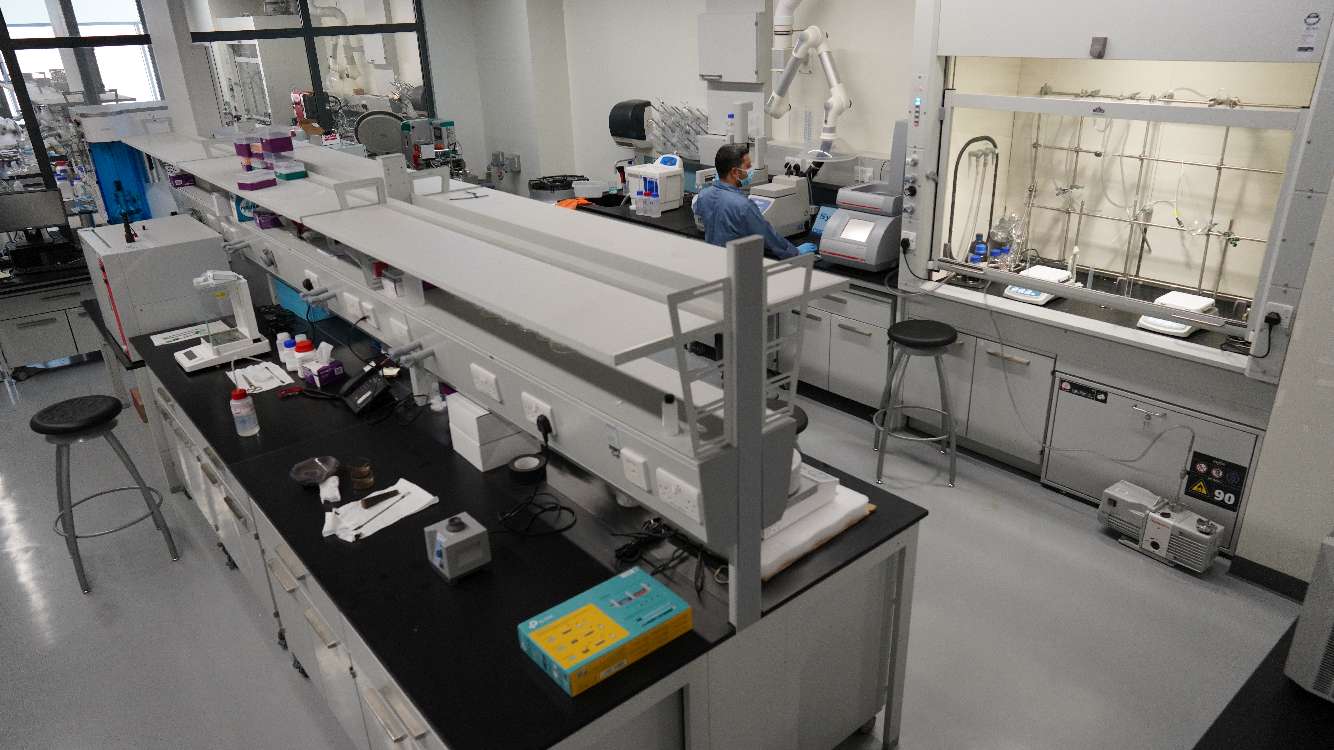
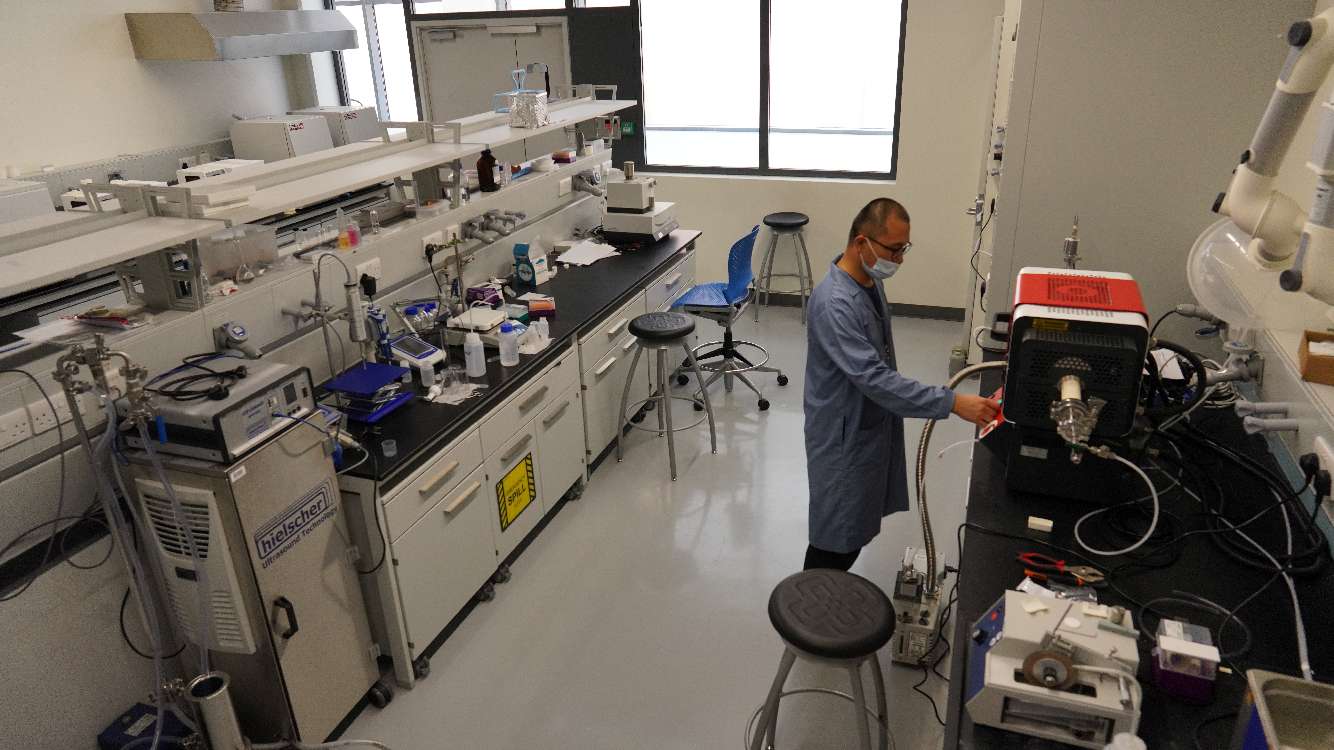
Furnace Based Material Synthetic Laboratory
Location: Building DTV-248 PEGTC, Room 139
This laboratory is dedicated to materials synthesis using high-temperature methods. The lab contains four 1700 °C muffle furnaces for solid-state reaction synthesis in air, two tube furnaces (1200 °C, 1600 °C) for thermal evaporation and condensation synthesis in controlled atmosphere, and two 1200 °C muffle furnaces for heat treatment of materials. For the tube furnace synthesis, the reaction chamber pressure (1 – 750 Torrs), the type of carrier gases (N2 or Ar) and its flow rates (1 sccm to 1000 sccm), the reaction temperature (up to 1500 °C), and the reaction duration (minutes to hours) can be preciously tuned and controlled.
Contact: Dr. Zhengwei Pan or Dr. Yafei Chen for more info.
Nanophotonics Laboratory
Location: Building DTV-248 PEGTC, Room 142
This laboratory is dedicated to spectral characterization and imaging of luminescent materials. A series of state-of-the-art spectral and imaging systems are available in this lab. The spectral systems include a Horiba Nanolog spectrofluorometer equipped with a Xenon arc lamp, a PMT detector and an InGaAs detector (excitation: 180–900 nm; emission: 200–1700 nm); a Horiba H20-UVL VUV Fluo iHR equipped with a Deuterium lamp, a PMT detector and a CCD detector (excitation: 115–400 nm; emission: 200–1700 nm); a Princeton Instruments spectrograph system equipped with an Energetiq EQ-99 laser driven light source (LDLS), two HRS-500SS SpectraPro imaging spectrographs, a BLAZE 400HR CCD camera and a PIXIS: 2KBUV CCD camera; two Ocean Optics QE series fiber spectrometers; and a Princeton Instruments FERGIE Raman spectrograph. The imaging systems include a Perkin Elmer IVIS Lumina III imaging system equipped with Si CCD camera, a home-made SWIR imaging system equipped with a Princeton Instruments NIRvana: 640 InGaAs SWIR camera, an Ofil DayCor LuminarHD corona camera for UVC imaging, and a Rongland night vision monocular for NIR imaging. In addition, this lab also houses a NewPort LCS-100 solar simulator, a series of power-tunable laser diodes (405–980 nm), a MOXTEK mini X-ray tube, NewPort power meters, and other light sources and optical components.
Contact: Dr. Zhengwei Pan or Dr. Yafei Chen for more info.
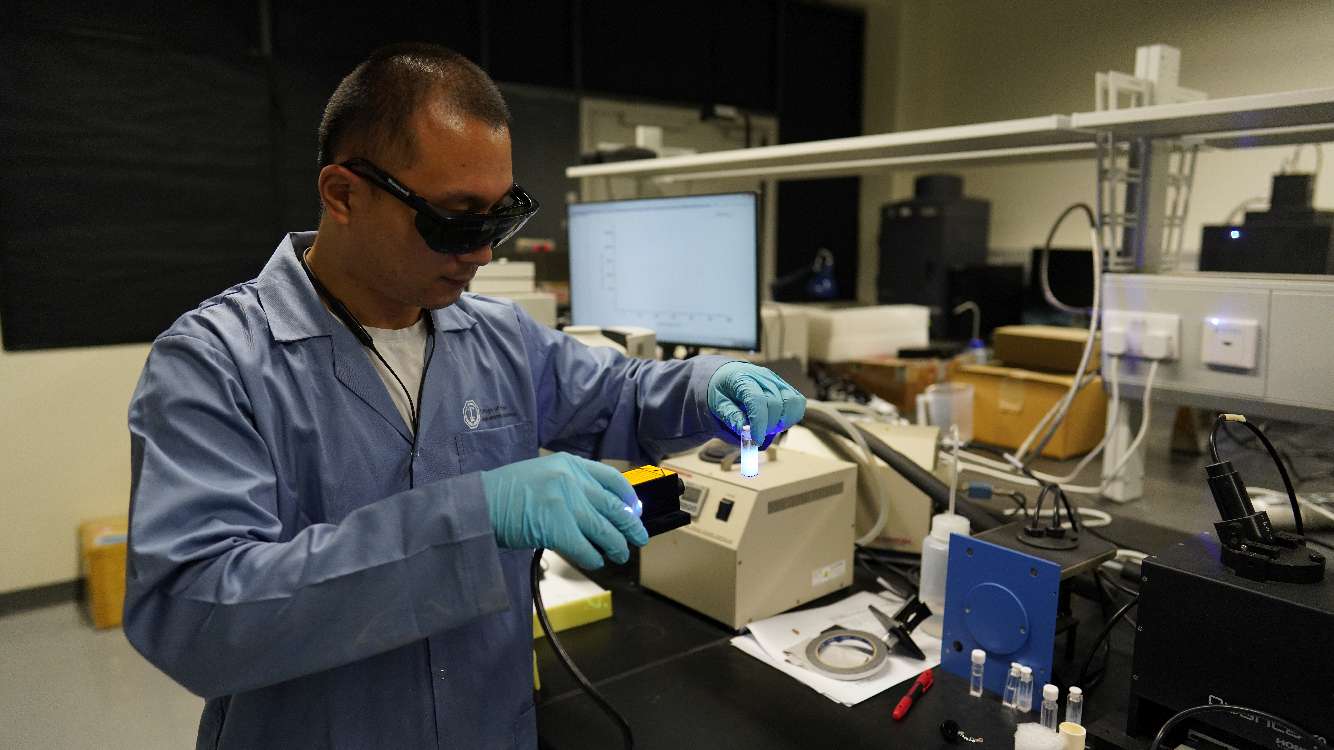

Microfluids Laboratory
Location: Building DTV-248 PEGTC, Room 235
The microfluidic lab is dedicated to visualizing the multiphase flow in porous media under conditions from ambient to high pressure and high temperature. The applications include enhanced oil recovery (e.g., gas flooding, surfactant flooding, and supercritical CO2 flooding), CO2 geological sequestration, etc. The high pressure and high temperature (HPHT) microfluidic system is rated for 20,000 psi and 150 °C and allows for the injection of three fluids. This lab is also equipped with a whole glass micromodel fabrication system for testing micromodels with various structures.
Contact: Dr. Wei Yu for more info.
Produtivity Enhancement Laboratory
Location: Building 78, Room 2011
Productivity enhancement laboratory is addressing issues of reaction kinetics, diffusion, interfacial phenomena, and phase changes associated with applications of reactive fluids (acids, emulsified acids), phase behavior (gas Hydrate, gas storage) and complex fluids (viscoelastic surfactant, gels, foam, emulsion) in real reservoir condition. The lab has good facilities that include of: High pressure Anton Paar rheometer MCR 702, High pressure and temperature drop shape analyzer, microfluidic set up, High pressure and low temperature sapphire rocking cell and Alta-HP hydrate equipment.
Contact: Jafar S. AlHamad for more info.
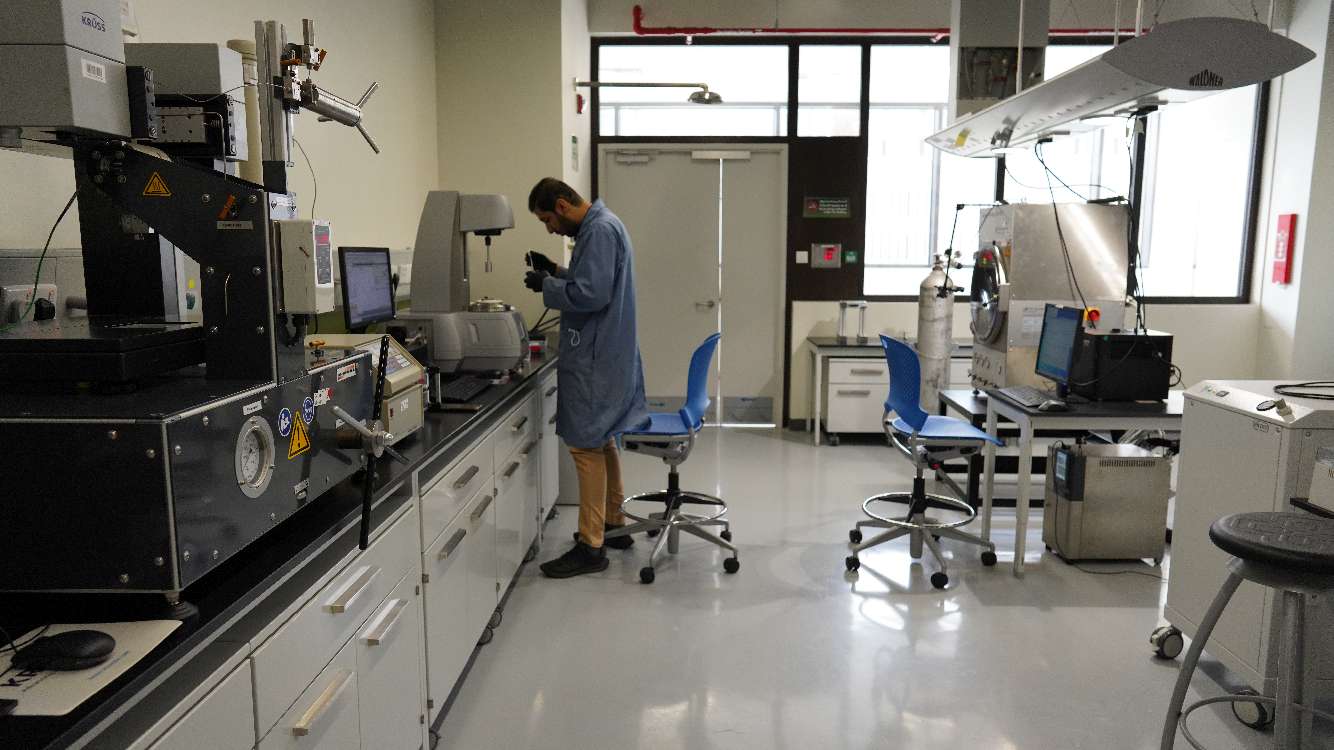
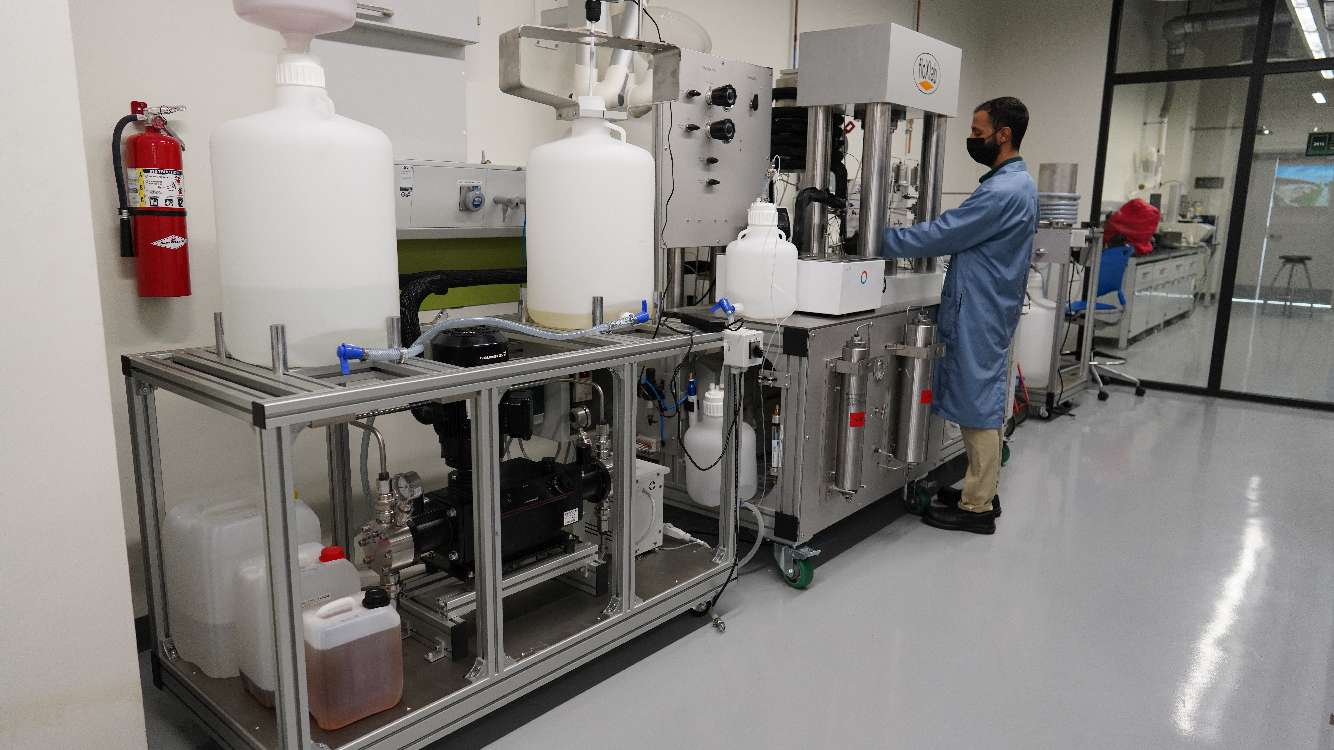
Fracturing Evaluation Laboratory
Location: Building 78, Room 2014
Evaluate the potential of chemicals and proppants when applied to hydraulic fracturing. The interaction between fracturing materials and rocks is measured in terms of created/retained fracture and matrix permeability, as well as fracture surface roughness. Using multiple mechanical testers to assess mechanical rock properties at both macro and nanoscale. Rheology testing of potential formulations for hydraulic fracturing.
Contact: Murtada AlJawad for more info.
Subsurface Storage & Recovery
Location: Building 78, Room 2016
Precise laboratory screening of surfactants for the ability to generate ultra-low IFT in oil/brine systems is a pre-cursor to laboratory core-flooding and field applications. Screening is judged in our lab through visualization of type III microemulsions in oil/brine systems and defining optimum salinity for surfactant slug under reservoir conditions. Higher temperature and pressure and crude composition are considered during surfactant screening using high pressure rated sapphire cells which provide useful screening methods for higher temperature reservoirs.
In addition, CO2 and H2 subsurface storage applications are also investigated in this lab, for instance 1) the rock-gas interaction with pressure and temperature effects, and 2) the initial and residual saturation of the gas via core-flooding with salinity, rock type, pressure and temperature effects.
Contact: Dr. Khalid Zidan Abdelgawad Ibrahim and Dr. Ahmed Al-Yaseri for more info.
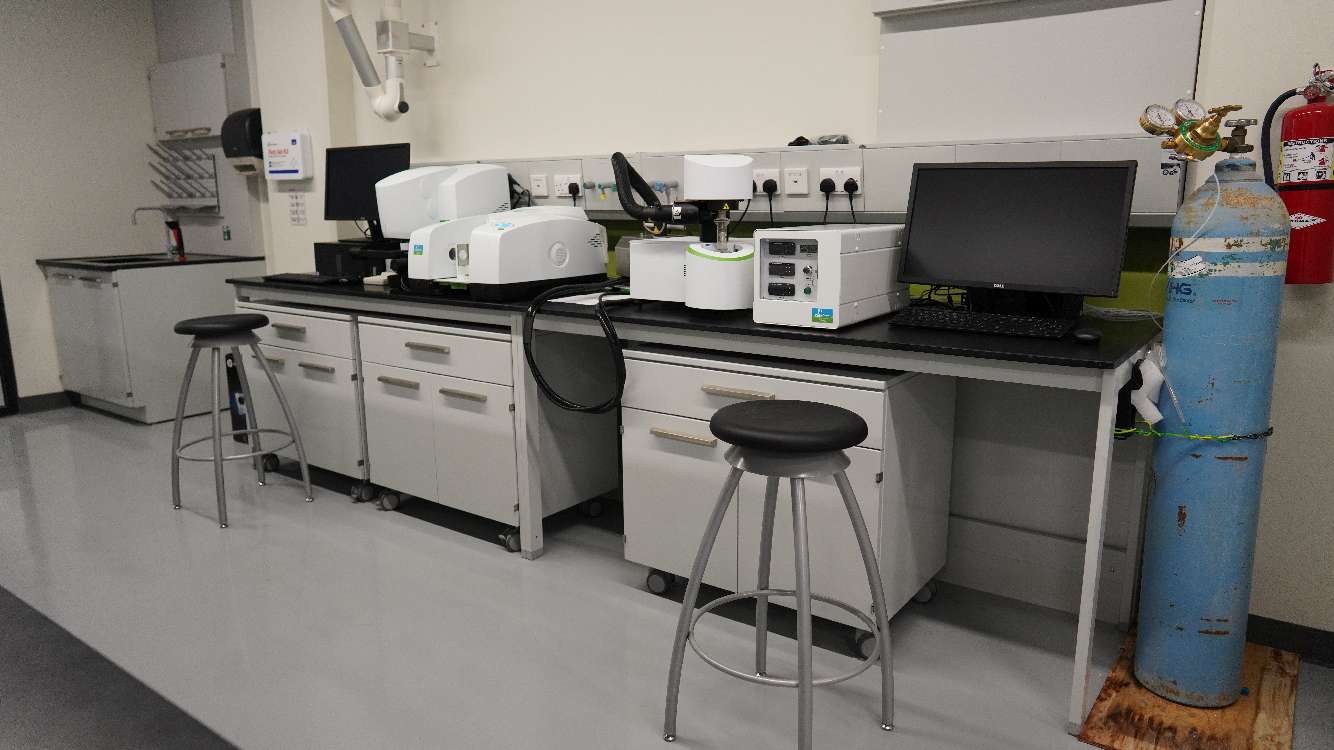
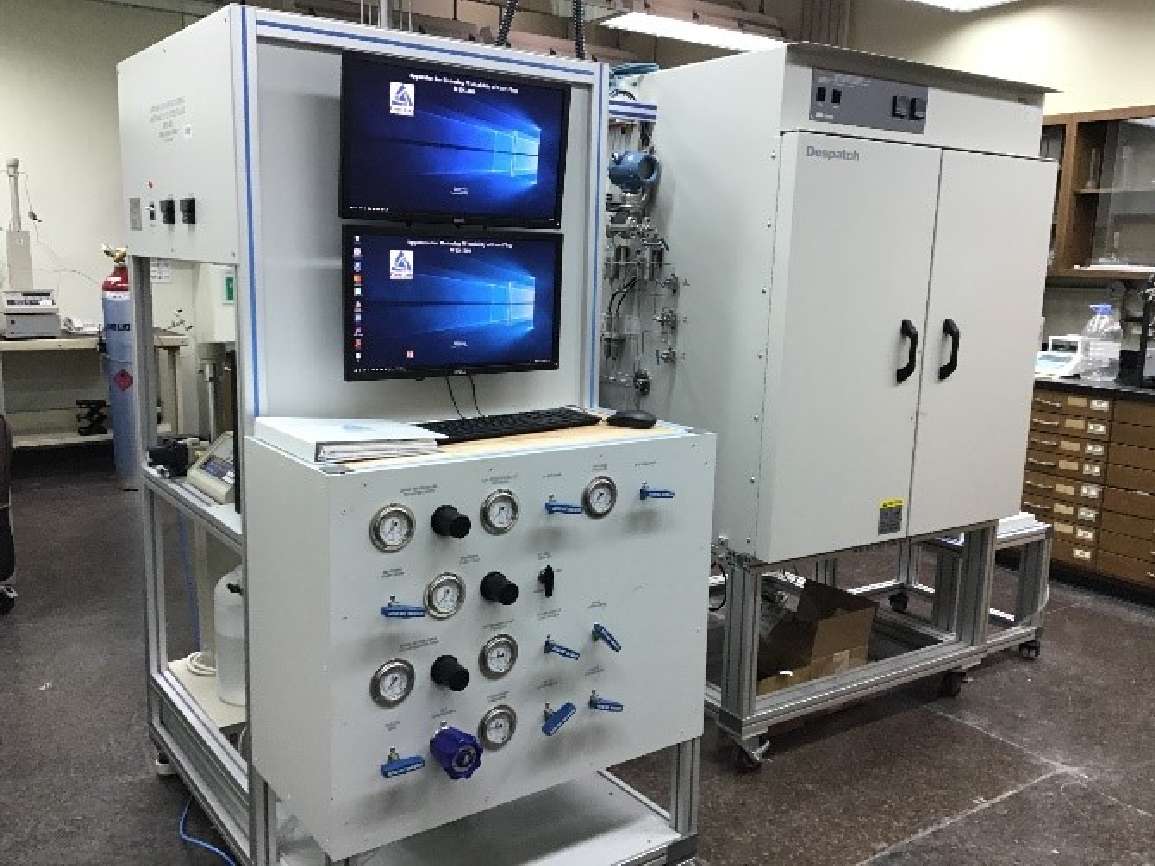
Advanced EOR Laboratory
Location: Building 78, Room 2018 - 2019
Two core flooding apparatus are located in the labs and are used to evaluate the oil recovery factor by chemical flooding and scCO2 injection and the dynamic adsorption of chemical solution, which is a displacing agent for tertiary oil recovery. The working temperature is up to 150oC and the pore pressure is up to 6,000psi.
Contact: Xianmin J. Zhou & Redha AlAbdrabalnabi for more info.
MRI Laboratory
Location: Building 78, Room 3052
This laboratory is equipped with a multifrequency magnetic resonance imaging (MRI) equipment that allows the study of magnetic relaxation pattern of different nuclei (H, F, C, Na) that occupy the pores of geological rock samples, after they have been subjected to various sequence of nuclear magnetization. With this, 2D and 3D internal images of rocks at sub-millimeter scale and the pattern of fluid displacement in them can be visualized. The equipment comes with an inbuilt proprietary software that incorporates modern pulse sequences and allows researchers to utilize it for fundamental and applied research pertinent to the vision and mission of the college.
Contact: Dr. Abdulrauf Adebayo and Rahul Salin for more info.
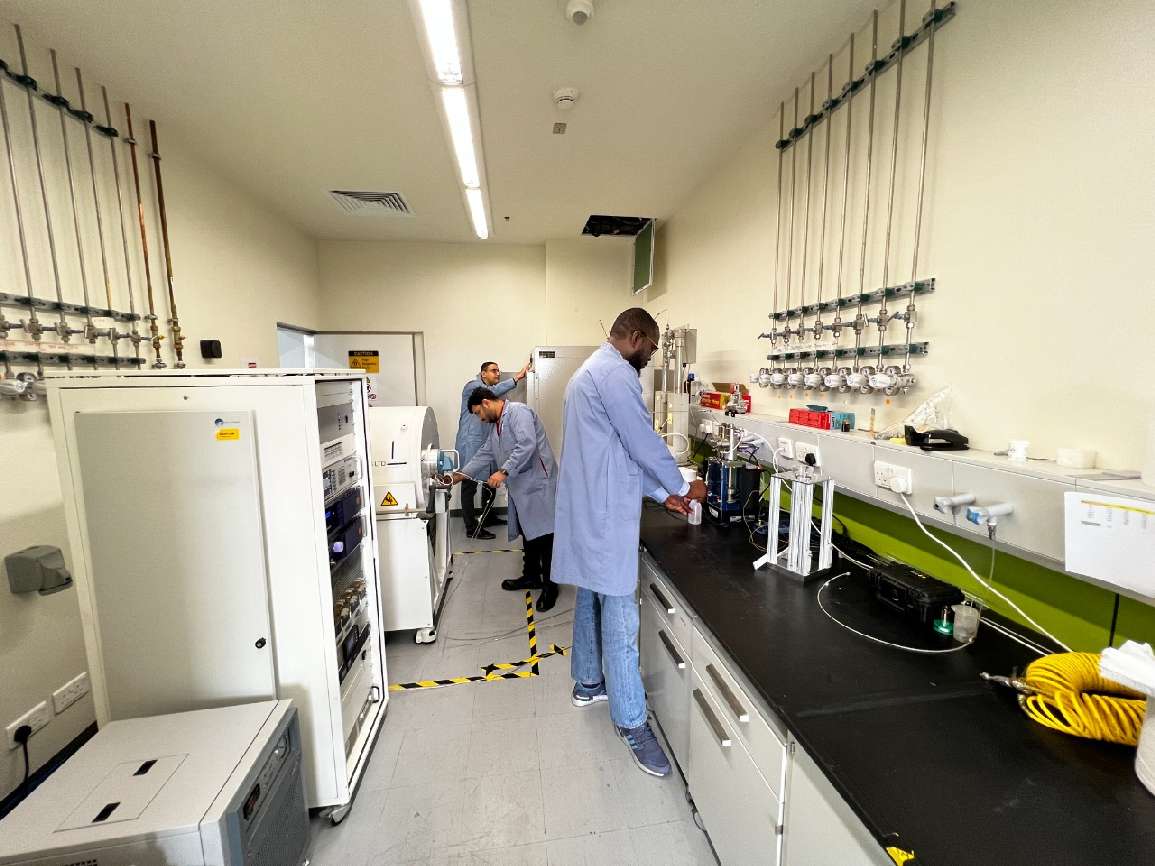

FIB-SEM Advanced Correlative Microscopy Laboratory
Location: Building 78, Room 0006
The advance correlative microscopy laboratory (Building 78 Rooms 006 & 007) is currently undergoing rapid transformation with the installation of two new versatile high end microscopes for end to end high-resolution SEM imaging and material characterization at room temperature and in cryogenic conditions.
The FESEM is an ideal choice for imaging large fields of view with excellent image quality and fast-time-to-image. In addition, the presence and combinations of EDS, WDS and Micro-XRF analyzers on the FESEM offer the most comprehensive compositional and structural analysis of materials currently possible. The resolution achieved for both instrument during installation were 1.6 ± 0.3nm at 1kV and 0.9 ± 0.2nm at 10kV using gold particles on carbon high resolution SEM calibration specimen.
The Laser-FIBSEM integrates a femtosecond laser for speed, a Ga+ beam for accuracy, and a SEM for high-resolution imaging to enable the fastest workflows. The isolated laser chamber prevents contamination of the electron column and detectors, while ensuring sample integrity with easy transfer between the SEM and laser chamber under vacuum.
The combination of the two instrument offers several application possibilities from advance study and imaging of kerogen bearing rocks to any requirement for milling nanostructures onto material samples and preparation of extremely large cross-sections; millimeters in width and depth, within a few minutes (up to 15 mio. µm³/s). Also we can perform slice-and-view destructive 3D imaging, observation of samples without the need for coating, TEM lamella preparation, precise sample surface polish at room temperature and in cryogenic conditions. Dr. Amao is responsible for the daily operation of the lab.
Contact: Abduljamiu O. Amao for more info.
FIB-SEM
Location: Building 15, Room 3206
FEI's Helios Nanolab is an Ultra High Resolution Scanning Electron Microscope (SEM) equipped with Focused Ion Beam (FIB) technology, offering sub-nanometer resolution electron beam imaging over a large operating voltage range and 3D (volumetric) imaging with HR and UHR modes.
Helios is equipped with
- LMIS Ga Ion source
- Gas injection system with Platinum Deposition
- In-lens detector (TLD – SE, BSE)
- In-column SE detector (ICD)
- In-column BSE detector (MD)
- Everhart-Thornley SE detector (ETD)
- Retractable high contrast solid-state backscatter electron detector (CBS)
- High precision 5-axes Piezo stage
- On Column Plasma Cleaner
Contact: Nadeem Ahmed Syed for more info.
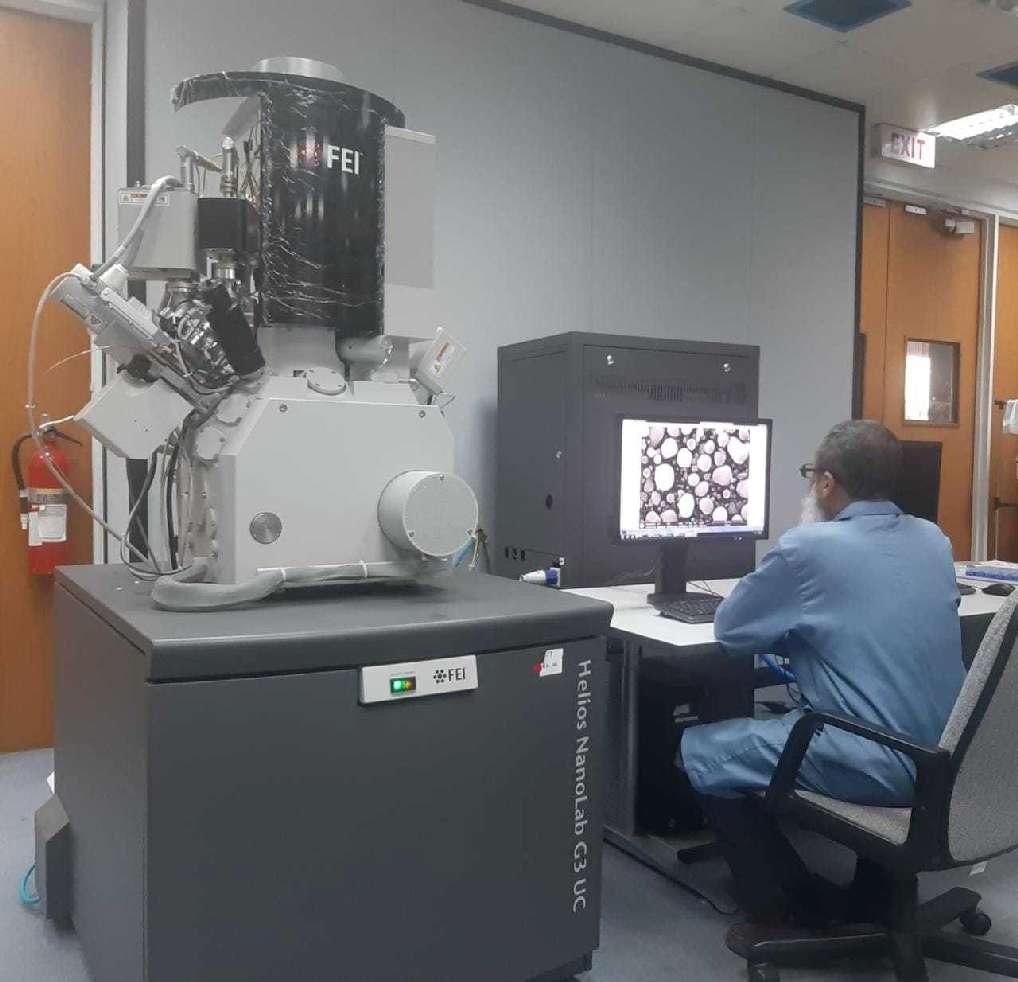
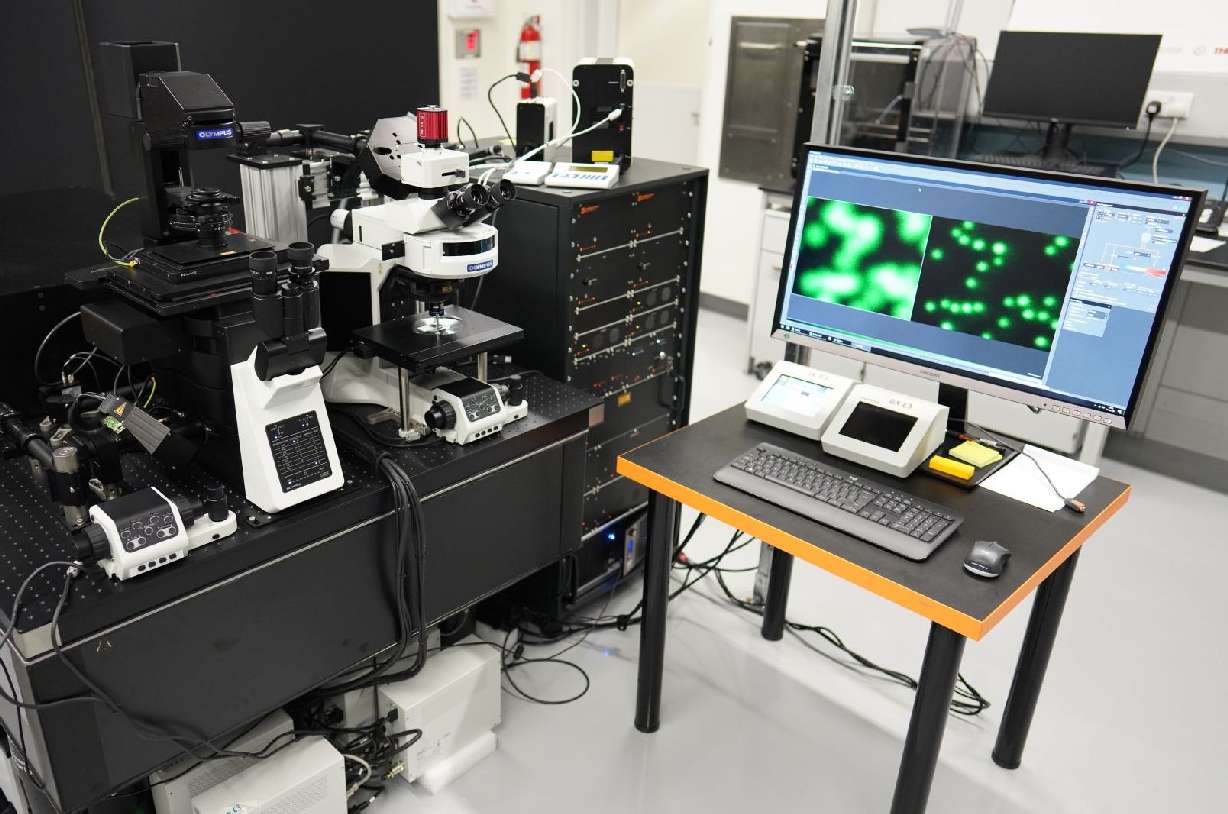
Nanoscopy Laboratory
Location: Building DTV-248 PEGTC, Room 133
The twin-head STED Nanoscope (Abberior Instruments) is an advanced optical microscope with a cutting-edge resolution of down to 20 nm. The super-resolution imaging is achieved by a technology known as stimulated emission depletion (STED), which led to the Noble Prize in Chemistry in 2014. When compared to other nanometer-resolution imaging methods, such as electron microscopes, STED is advantageous in studying the dynamics or reactions of wet samples. The customized twin-head design fits the challenging environment in petroleum and CO2 research.
Contact: Dr. Jack H. Y. Lo for more info.
ToF-SIM Laboratory
Location: Building 78, Room 0031
The laboratory is equipped with a state-of-the-art TOF-SIMS M6 from IONTOF GmbH. TOF-SIMS (Time-Of-Flight Secondary Ion Mass Spectrometry) provides (i) chemical surface characterization by detecting all elements and isotopes simultaneously with a detection limit range between ppm and ppb, (ii) 2D and 3D chemical imaging with a 50 nm resolution, and (iii) identifies organic materials on a molecular level. It is a surface technique for solid materials with a 1–2 nm information depth, but using FIB cutting or depth profiling the information depth increases to the micrometer range. Besides FIB the instrument is equipped with an argon cluster ion source and has MS/MS capabilities. This extremely versatile instrument has a broad range of applications. The instrument will be used for applications where it is important to identify/monitor organic materials on or in geo-related materials.
Contact: Dr. Kion Norrman for more info.

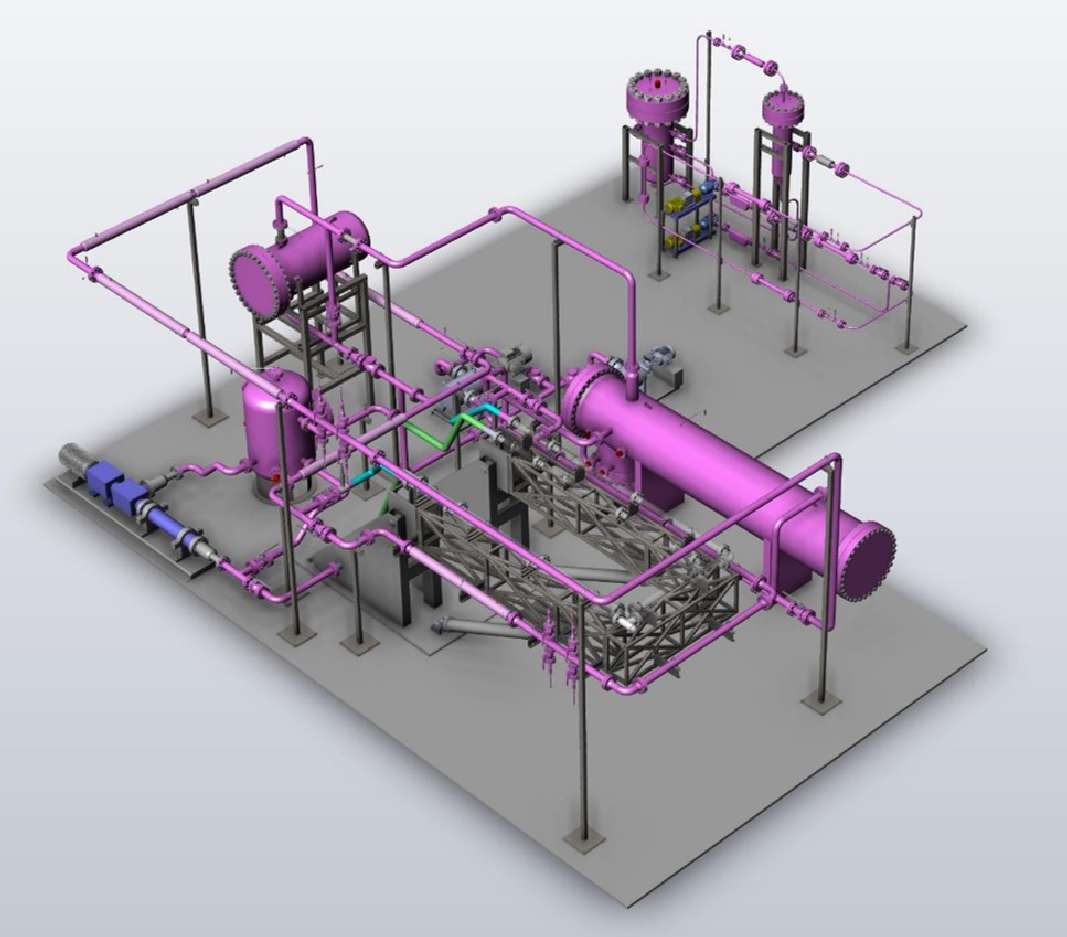
HP-HT Flow Loop
Location: Building DTV-248 PEGTC, Room 153
One of the distinguished facilities of the College to support research activities in the areas of multiphase flow/flow assurance/production technology in the upstream oil & gas industry. Equipped with state-of-the-art advanced instrument (Laser Doppler Anemometry, Particle Imaging Velocimetry, Isokinetic Sampling, Shear Stress & Corrosion Probes, and High-Speed High-Resolution Visualization). Capacity to handle gas/liquid, solid/liquid, liquid/liquid flow in a pipe diameter ranging from 1 inch to 4-inch diameter, 15 ft. to 45 ft. length, and 0o to 90o inclination. Accommodate various types of gases and liquids with flow velocity range from 0-10 ft/sec for liquid and 0-45 ft/sec for gases at high pressure up to 1500 psi and temperature of -12 to 180 oC.
Contact: Mr. Rahul Salin Babu for more info.
Incubators/Cluster 2,3,4,5,6
Location: Building DTV-248 PEGTC, Room 220, 216, 212, 208, 204
As an integral part of the college objective the aim is to take basic research discoveries to the market. Our incubator spaces are having that particular focus. Currently, three technologies are being matured to reach at least the level of a minimum viable product.
Contact: Dr. Theis Ivan Solling for more info.
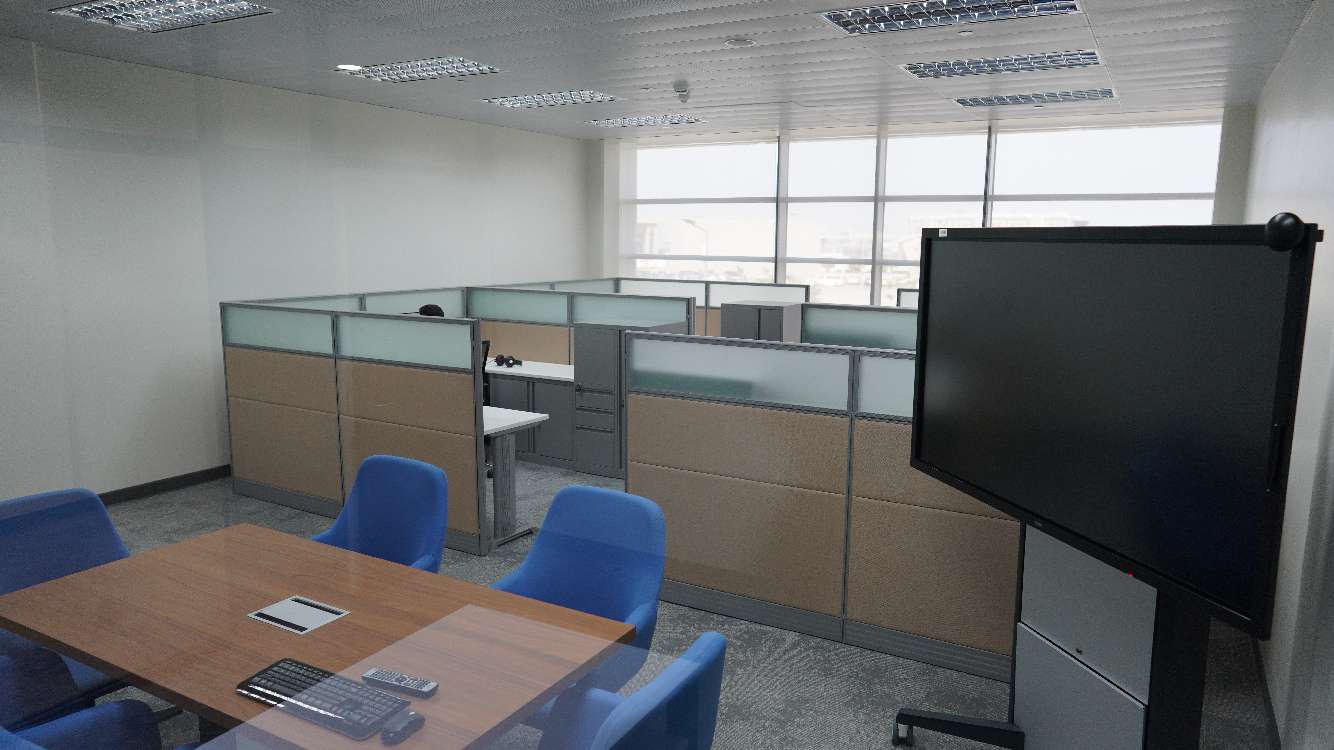
Quantitative Analysis Laboratory
Location: Building 78, Room 2015
A research laboratory for graduate students where quantitative analysis of fluids is conducted. Analysis such as pH, conductivity, density, viscosity, etc. are measured. The Sapphire Rocking Cell is a laboratory instrument to research and test low-dosage hydrate inhibitors (LDHI), corrosion inhibitors (KI), AA and KHI and also multi-phases.
Contact: Dr. Abdullah Sultan & Jafar Sadeq AlHamad for more info.
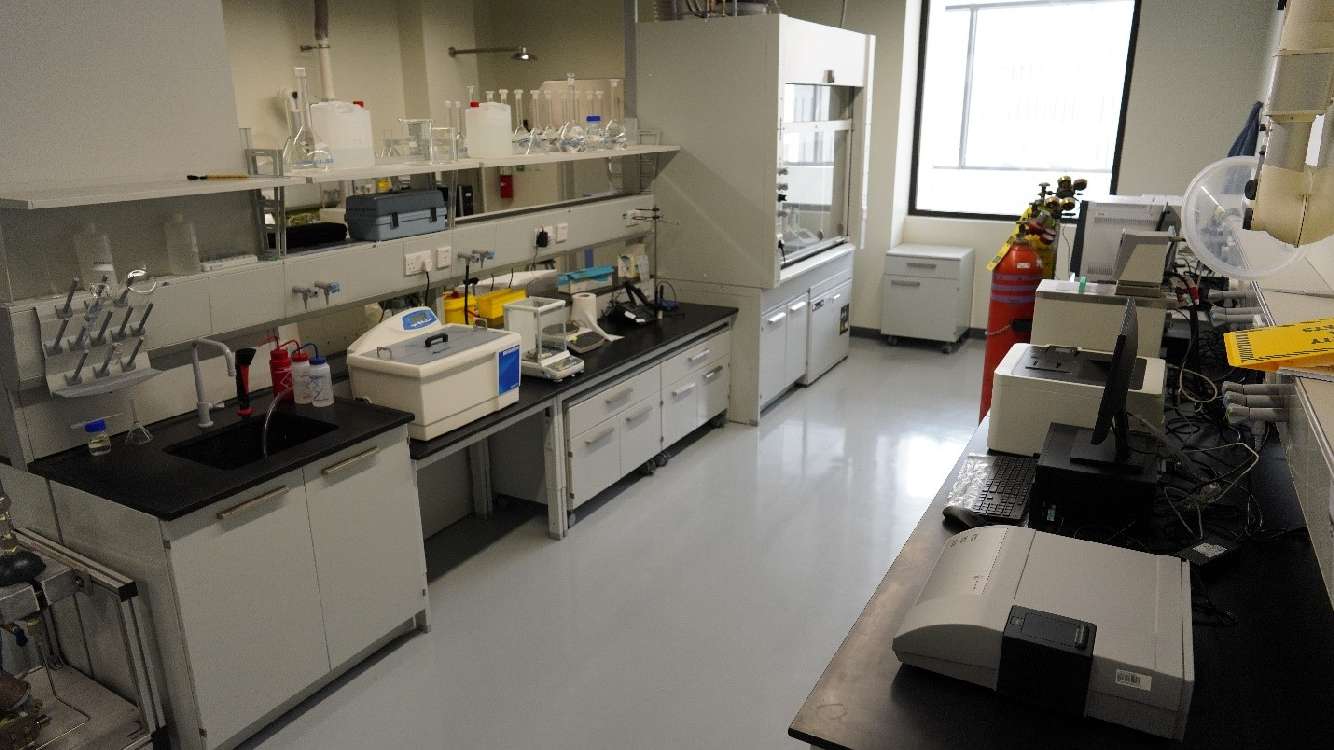
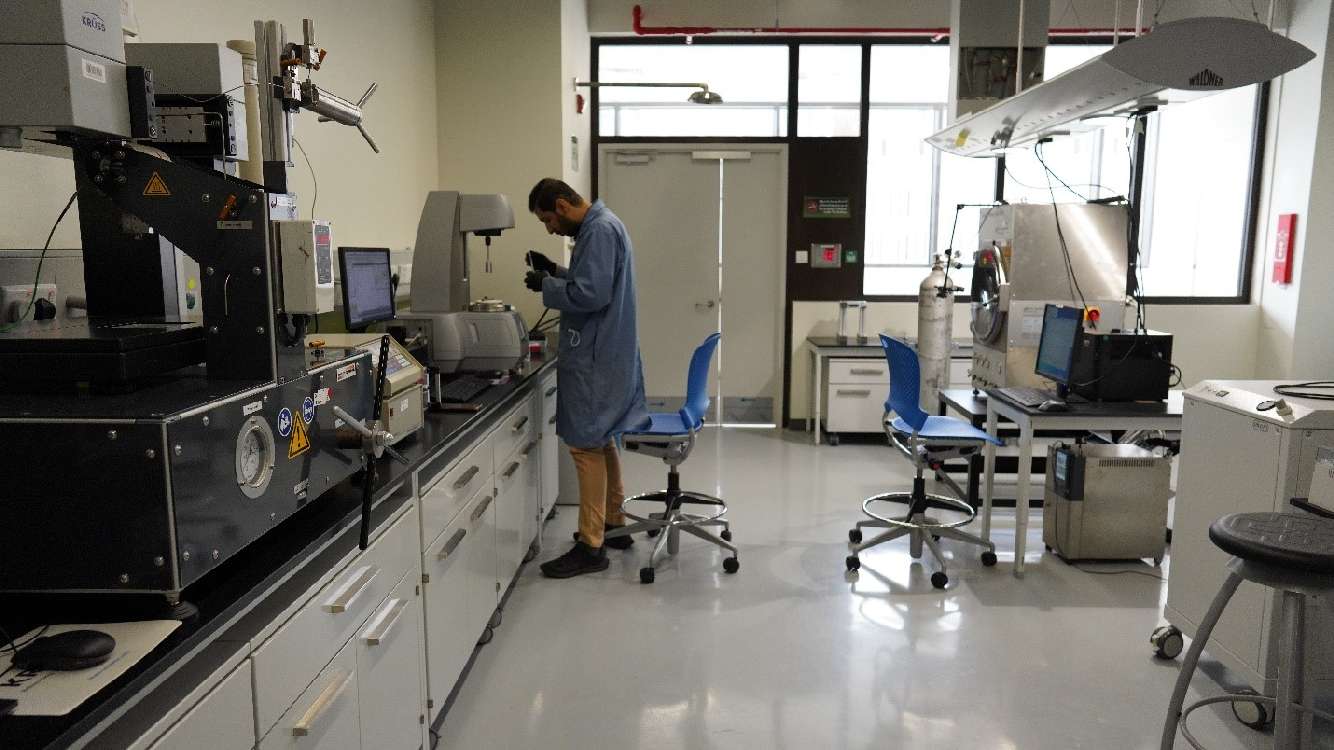
Productivity Enhancement Laboratory
Location: Building 78, Room 2011
A new Faculty research Laboratory where experiments on core flooding, fracturing, acidizing, and enhanced gas recovery are investigated.
The laboratory is currently being equipped with the state-of-the-art equipment, with the objective of helping faculty funded projects, graduate thesis research work and undergraduate senior design research work.
Contact: Jafar Sadeq AlHamad for more info.
Cementing Research Laboratory
Location: Building 78, Room 3015
The oil well cementing laboratory at CPG KFUPM is research and teaching lab in which is prepared with all facilities needed by students and researchers for cement slurry preparation, conditioning, and testing. Different testing equipment are available in this lab to evaluate the properties of the cement slurry such as its rheology, filtration properties, and thickening time. The gelation properties could also be evaluated in this laboratory at room conditions or high pressure and high temperature situations. In addition to that the gas migration through the cement body could also be evaluated. This lab also incorporates facilities for cement cubes and cylinders preparation for the purpose of testing the properties of cement solidified sheath. Equipment for testing the cement compressive and tensile strength, evaluation of the cement interaction with other corrosive fluids such as CO2-saturated brines is also possible with the facilities provided in the cementing lab.
Contact: Dr. Salaheldin Elkatatny & Jabar AlJabri for more info.
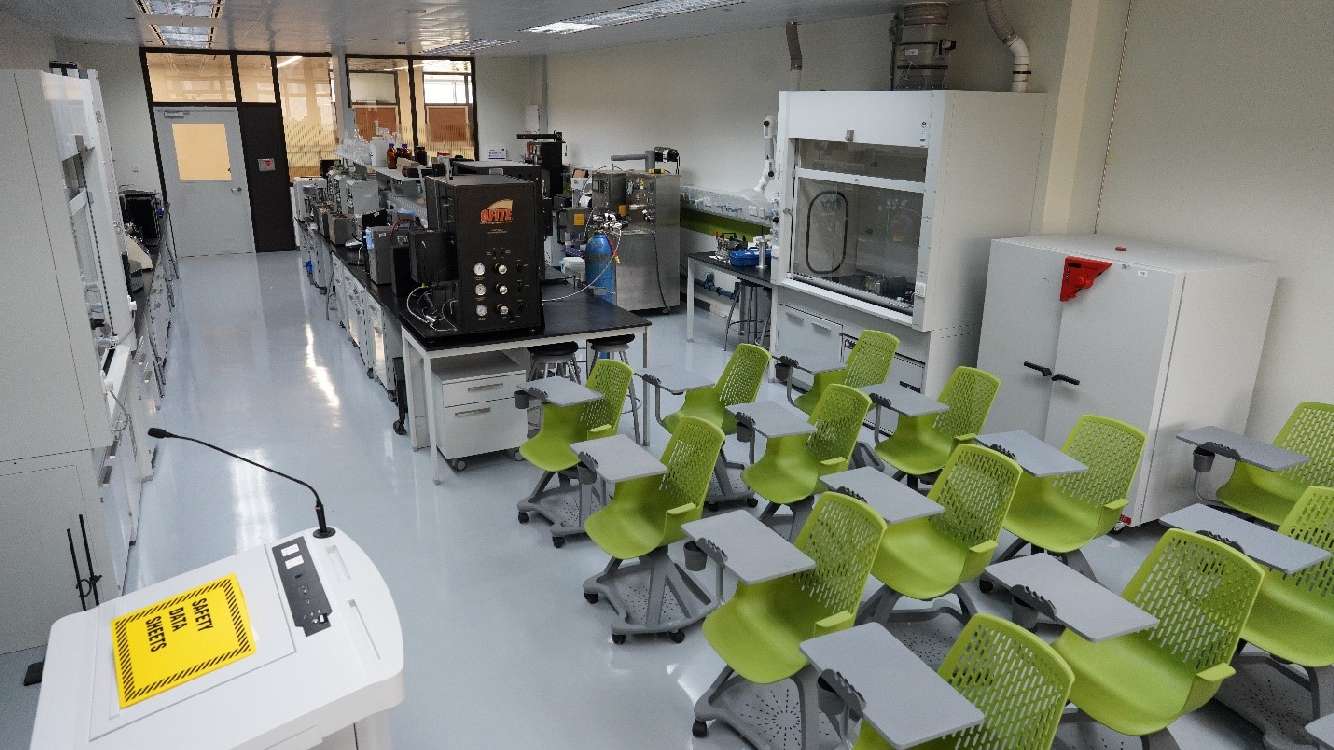
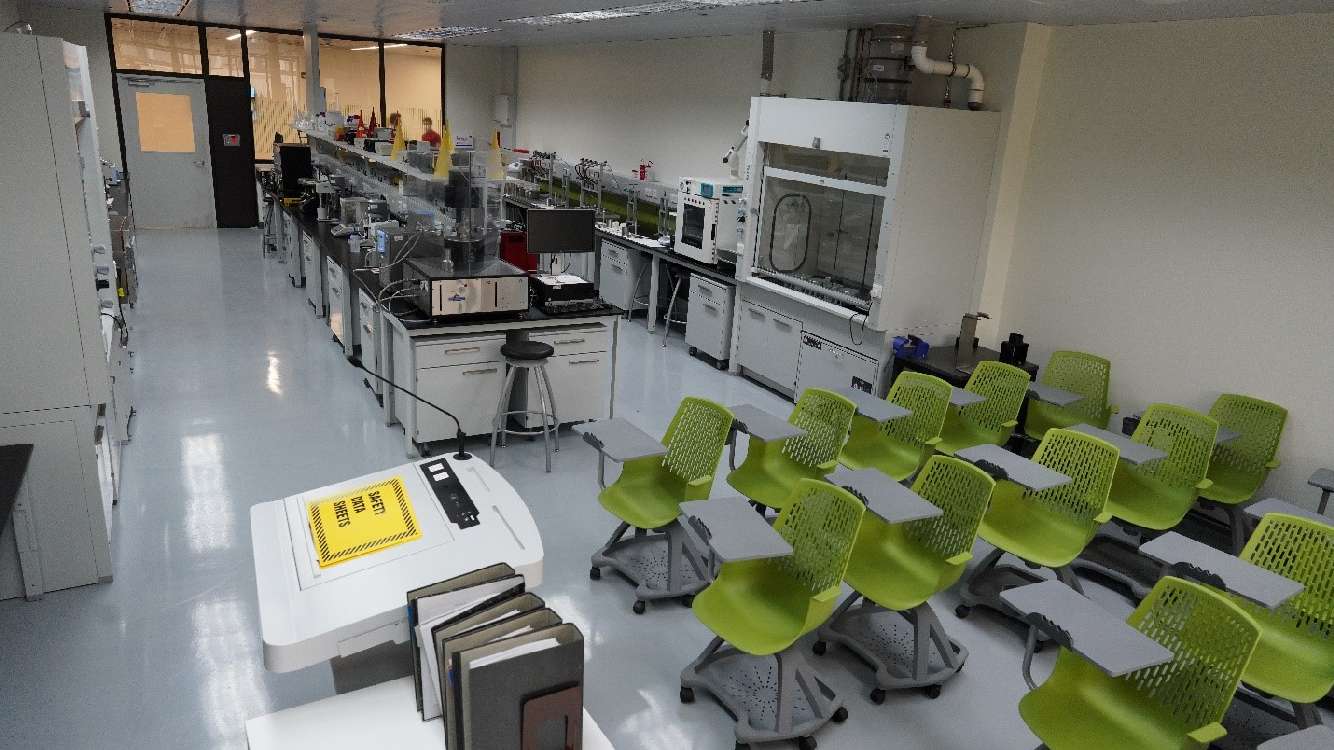
Drilling Fluid Research Laboratory
Location: Building 78, Room 3014
The performance evaluation of the various drilling fluid systems is a necessity to ensure optimum drilling operations. Hence, drilling fluids testing must be conducted to evaluate their properties, achieve the desired parameters, and determine the performance limitations. The drilling fluids laboratory is designed to serve both instructional and research purposes to undergraduate and graduate students. This laboratory is equipped with the most recently developed apparatuses that can provide various measurements on various mud systems at standard and high-pressure high-temperature conditions.
Contact: Dr. Salaheldin Elkatatny & Mobeen Murtaza for more info.
Advanced Core Flooding Laboratory
Location: Building 78, Room 1007
Contact: Assad A. Barri & Ammar AlRamadhan for more info.
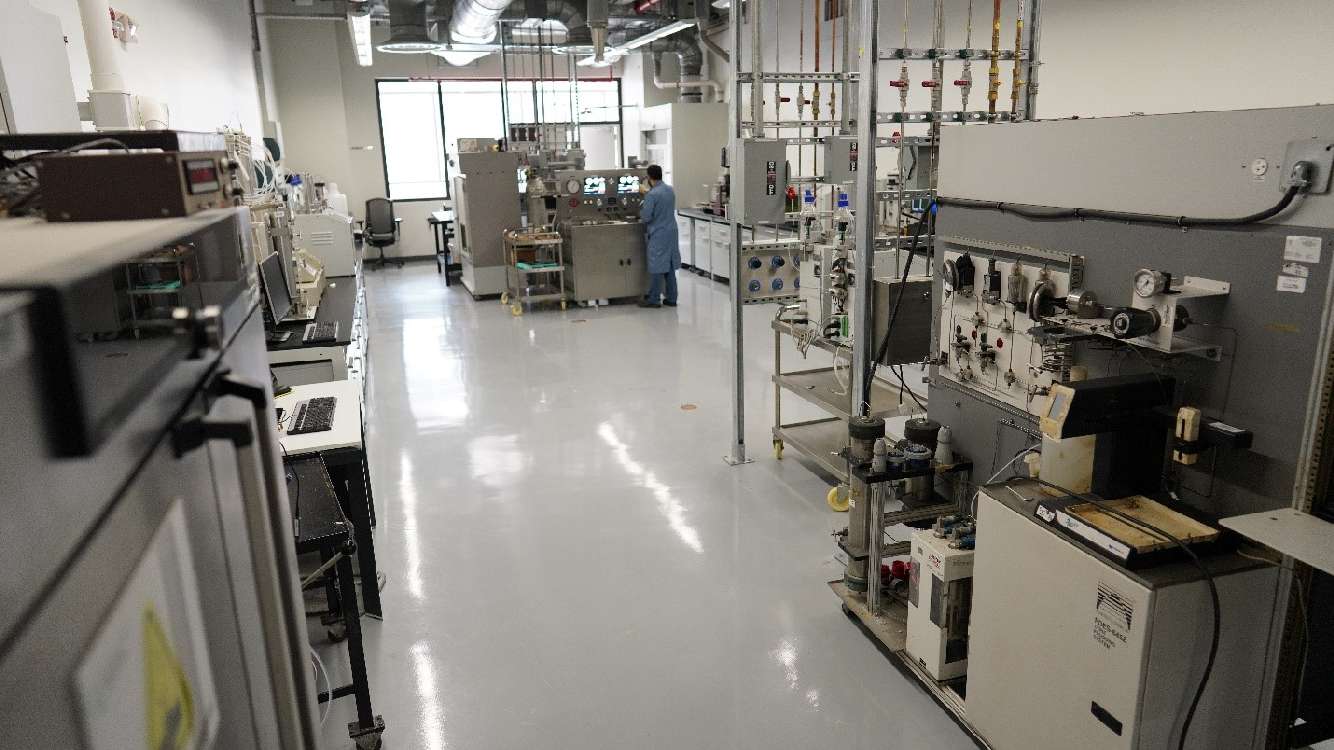
Well Control Laboratory
Location: Building 76, Room 1234
The DrillSIM 20: Five simulators of this type are available in the well control lab. DrillSIM 20 is a light interactive real-time drilling and well control simulator. This simulator is a useful tool for providing practical well control training in accordance with acknowledged certification standards like IADC and IWCF.
Contact: Dr. Salaheldin Elkatatny & Ahmed AlSabaa for more info.
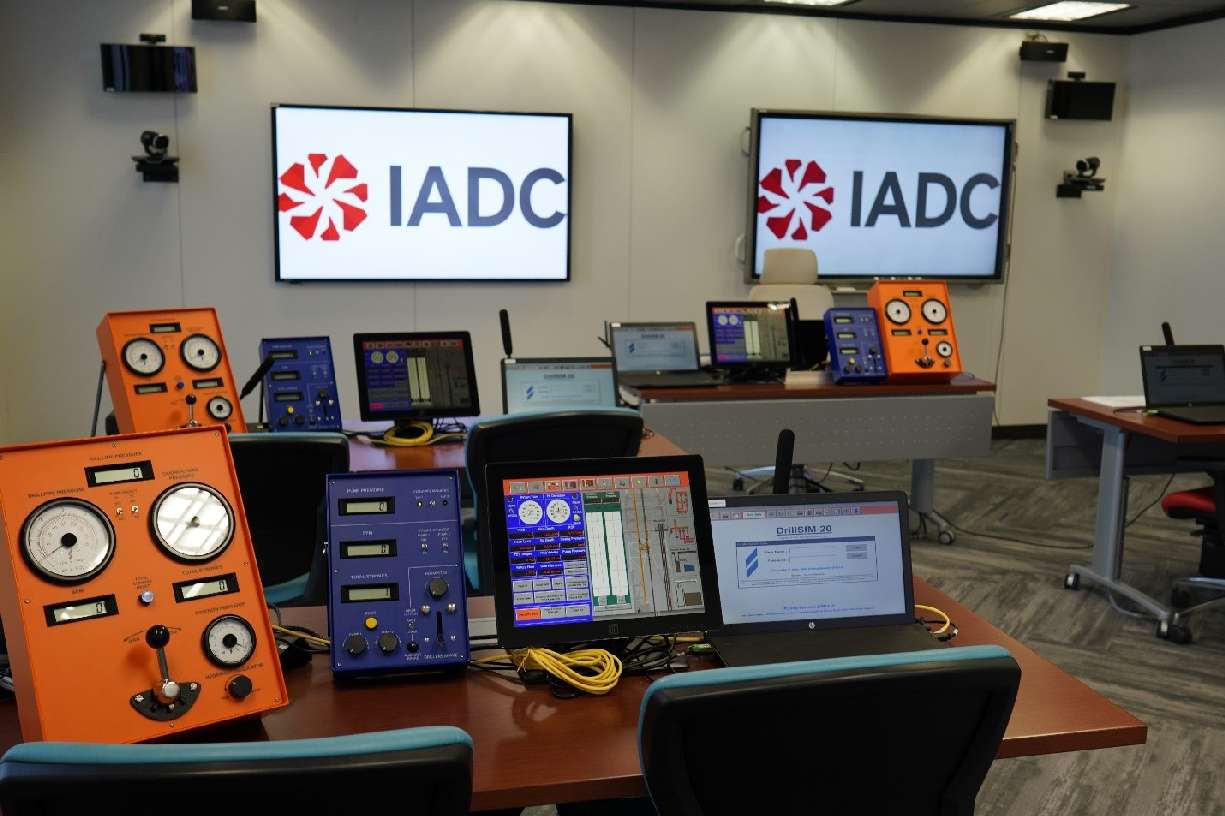
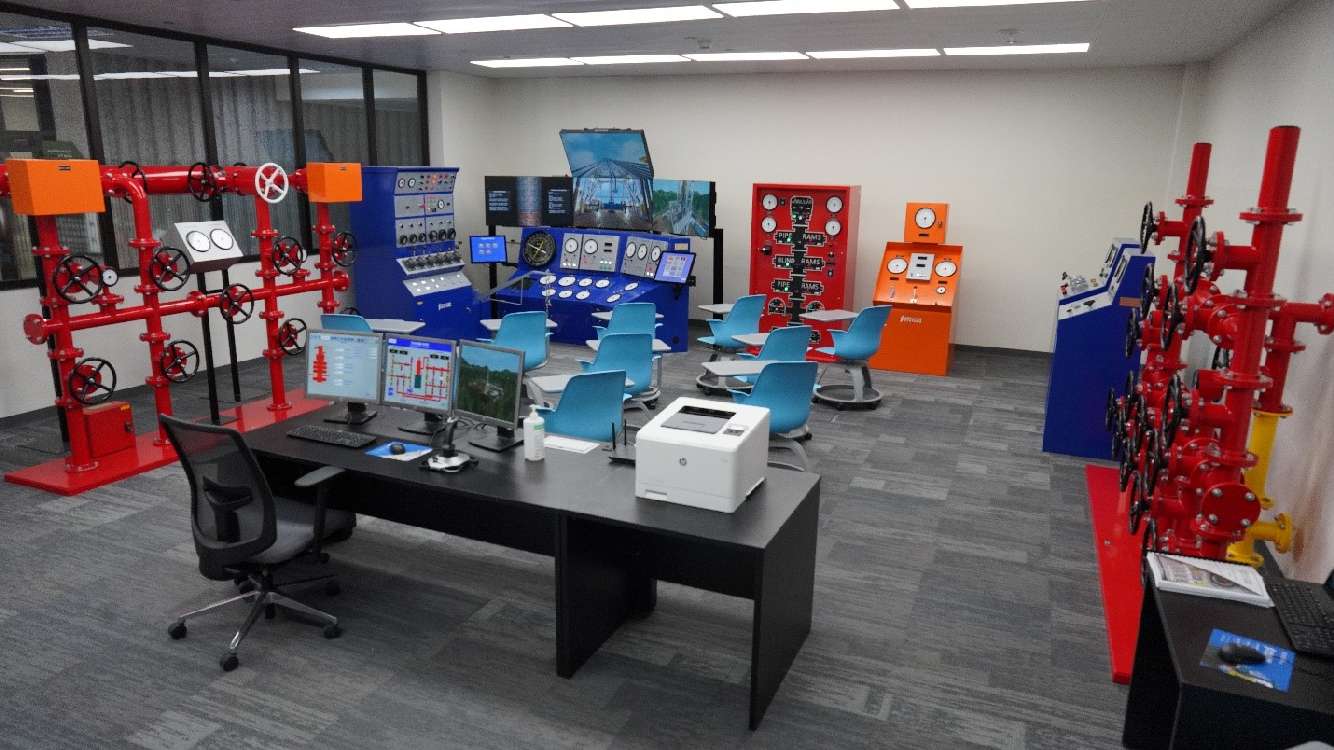
Drilling Simulation Lab - DS5000
Location: Building 78, Room 3049
The DrillSIM 5000: DrillSIM 5000 is the industry benchmark for sophisticated drilling and well control simulation. It is a tactile simulator with multiple hardware that mimics a real field experience, the simulator includes a driller console, manifolds and remote panels.
The DrillSIM:5000 Classic can be utilised to develop and run exercises including, but not limited to: Oil-based mud, bubble point and gas flash out, Gas expansion and migration, Dynamic pressures during well control, Lost circulation, loss zones and leak off testing, Wellbore ballooning/breathing, Horizontal and deviated wells, Hole cleaning, turbulent, laminar flow, Drilling on junk, pipe twist-off, stuck pipe, Sloughing, differential sticking, key seating, pack-off, High pressure high temperature (HPHT) wells, and Managed pressure drilling (MPD)
Contact: Dr. Salaheldin Elkatatny & Ahmed AlSabaa for more info.
Drilling Simulation Lab - DS600 + Educator
Location: Building 78, Room 3024
The DrillSIM 600: DrillSIM 600 combines 3D surface and downhole graphical views with realistic rig equipment sounds and functionalities for a truly immersive learning experience. DrillSIM:600 can be utilized to develop and run exercises including, but not limited to: Dynamic pressures during well control, Lost circulation, loss zones and leak off testing, Horizontal deviated wells, Hole cleaning, turbulent, laminar flow, Drilling on junk, pipe twist-off, stuck pipe, Sloughing, differential sticking, key seating, pack-off, High pressure high temperature (HPHT) wells, and Managed pressure drilling (MPD).
Contact: Dr. Salaheldin Elkatatny & Ahmed AlSabaa for more info.
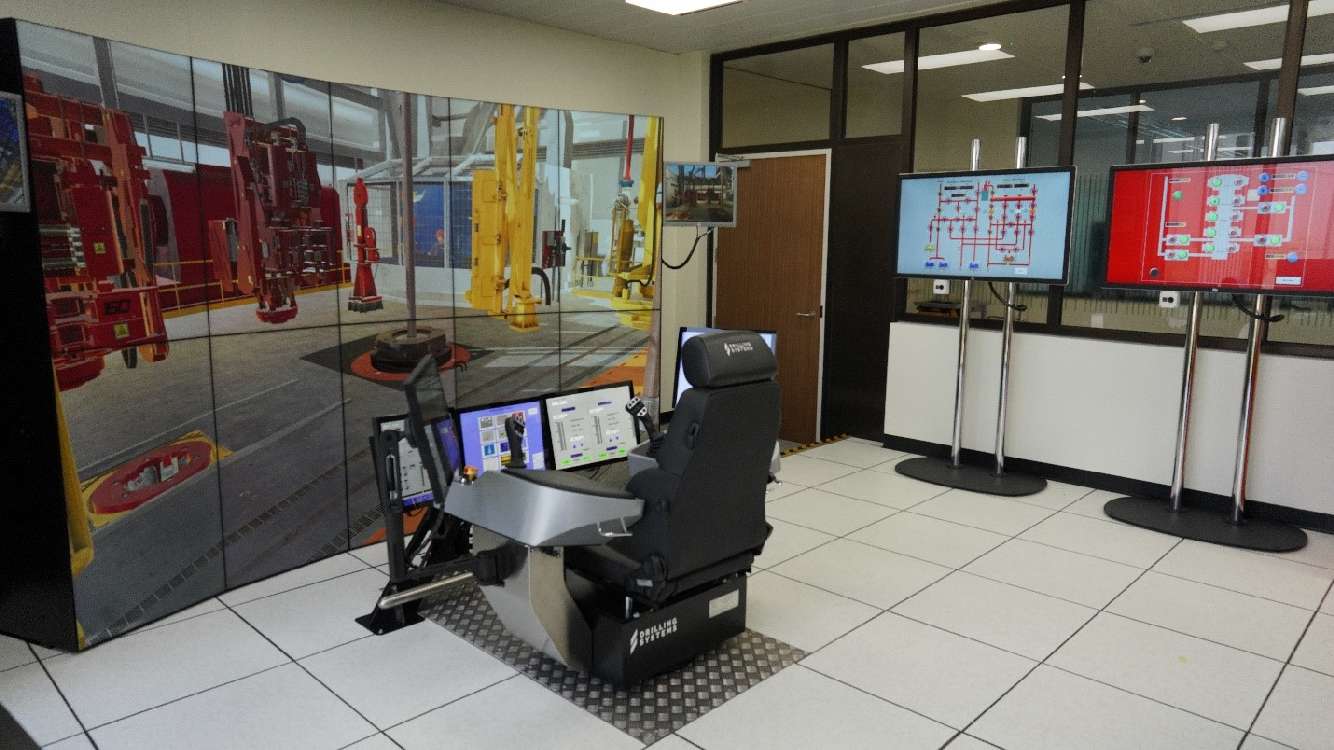
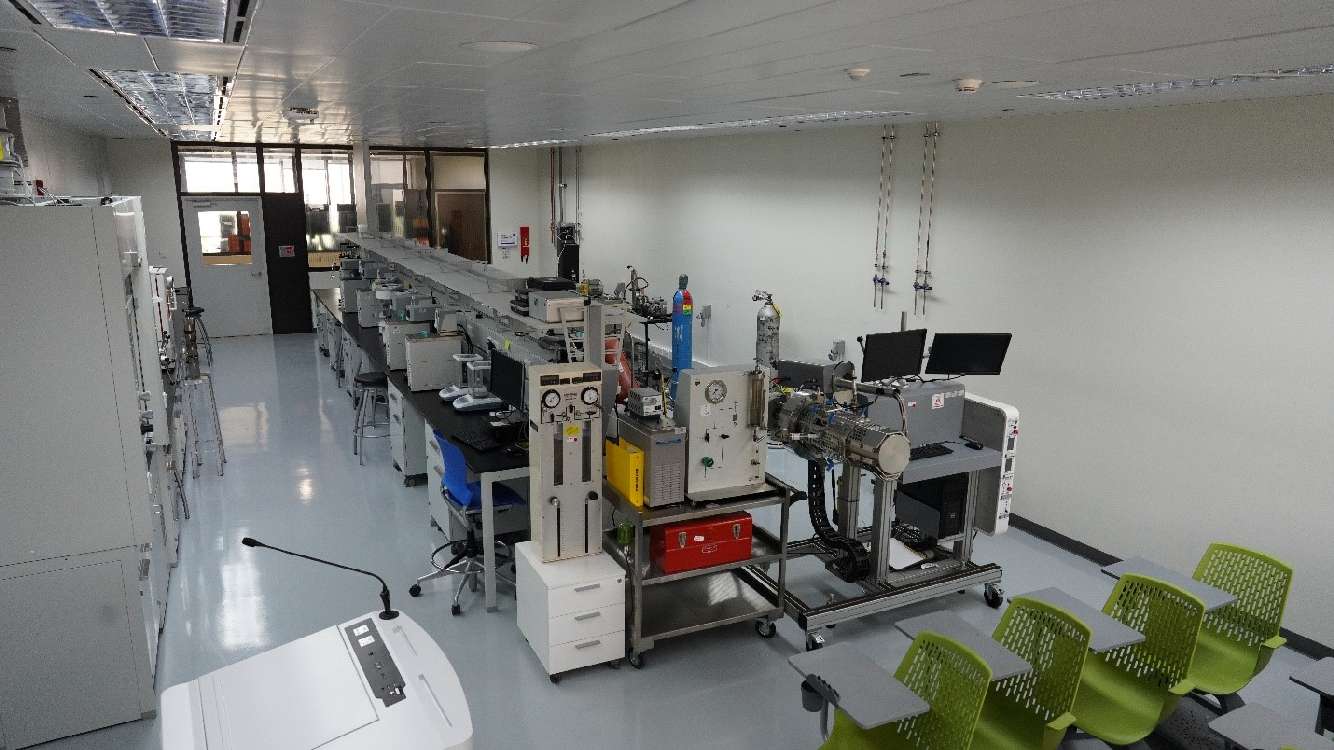
Fluid Properties Laboratory
Location: Building 78, Room 3017
Fluids Properties Laboratory is a teaching Laboratory where experiments about reservoir fluids properties (oil/gas) are conducted.
These properties are vital to determine the amount of crude oil and gas in the reservoir, and the amount that can be lifted to the surface.
The laboratory is equipped with state-of-the-art equipment in the petroleum industry and with the objective of helping petroleum engineering students to practically verify the theoretical aspects discussed in the classroom.
The PVT FV EDU System is the latest state of the art equipment that can perform a full range of experimentations with crude oil, volatile oil or gas condensate. These experiments include:
- Constant Compositional Expansion
- Constant Compositional Depletion
- Separator Test
- Differential Vaporization
- Fluid Envelop Phase
- Constant Volume Depletion
Contact: Jafar Sadeq Al Hamad or Eassa Abdullah for more info.
Rock Property Laboratory
Location: Building 78, Room 3016
Rock properties laboratory main role is to measure the properties of core samples, providing a physical model of reservoir characterization.The measured data are used to define storage capacity (porosity), the magnitude and distribution of flow capacity (permeability), and fluid saturation, as well as lithology and other parameters.
The URC-628 Ultra Rock Centrifuge is the newest generation of ultra high-speed rock-core centrifuges available to the core analysis laboratory for rapid determination of capillary pressure curves, sample preparation (for subsequent flow tests), relative permeability, and wettability determination using the Amott and USBM methods.
With the data analysis package, the URC-628 can also be used to determine the capillary pressure curves and the relative permeability curves for the displaced phases in both the drainage and imbibition modes.
Contact: Eassa Abdullah for more info.
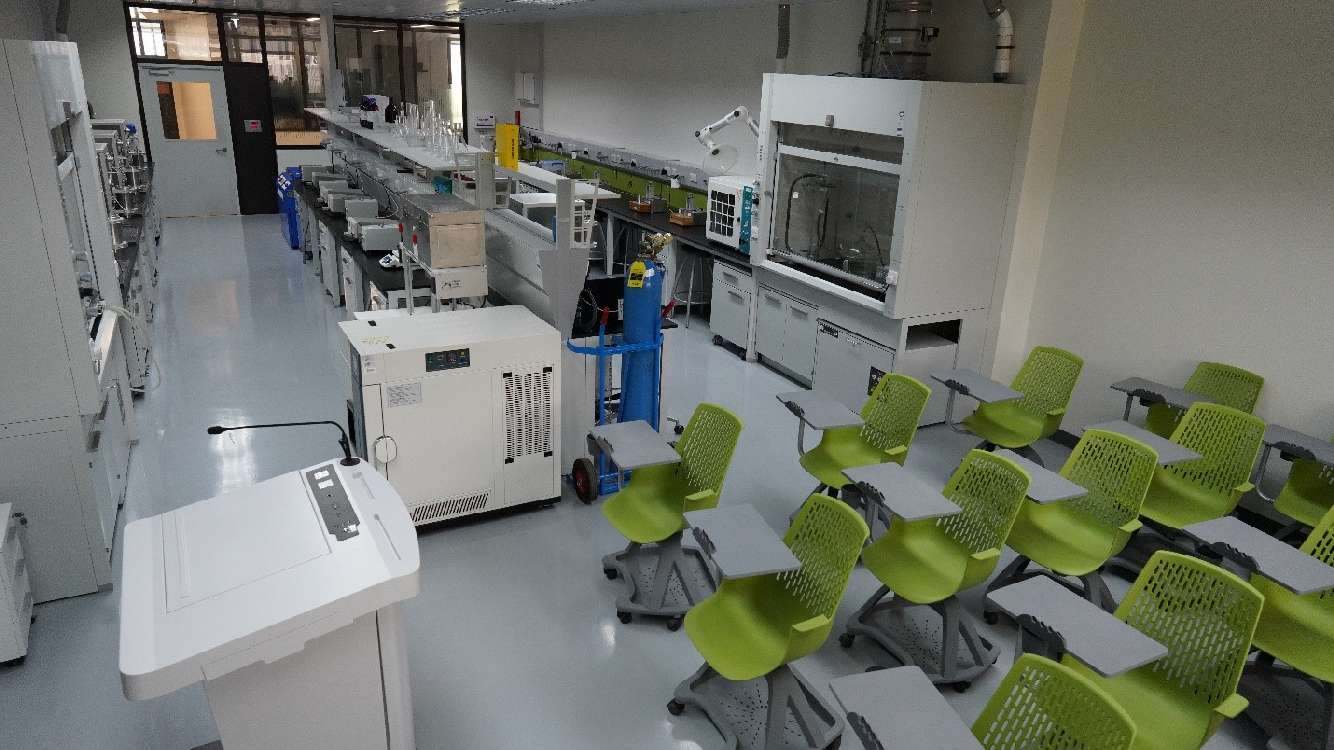
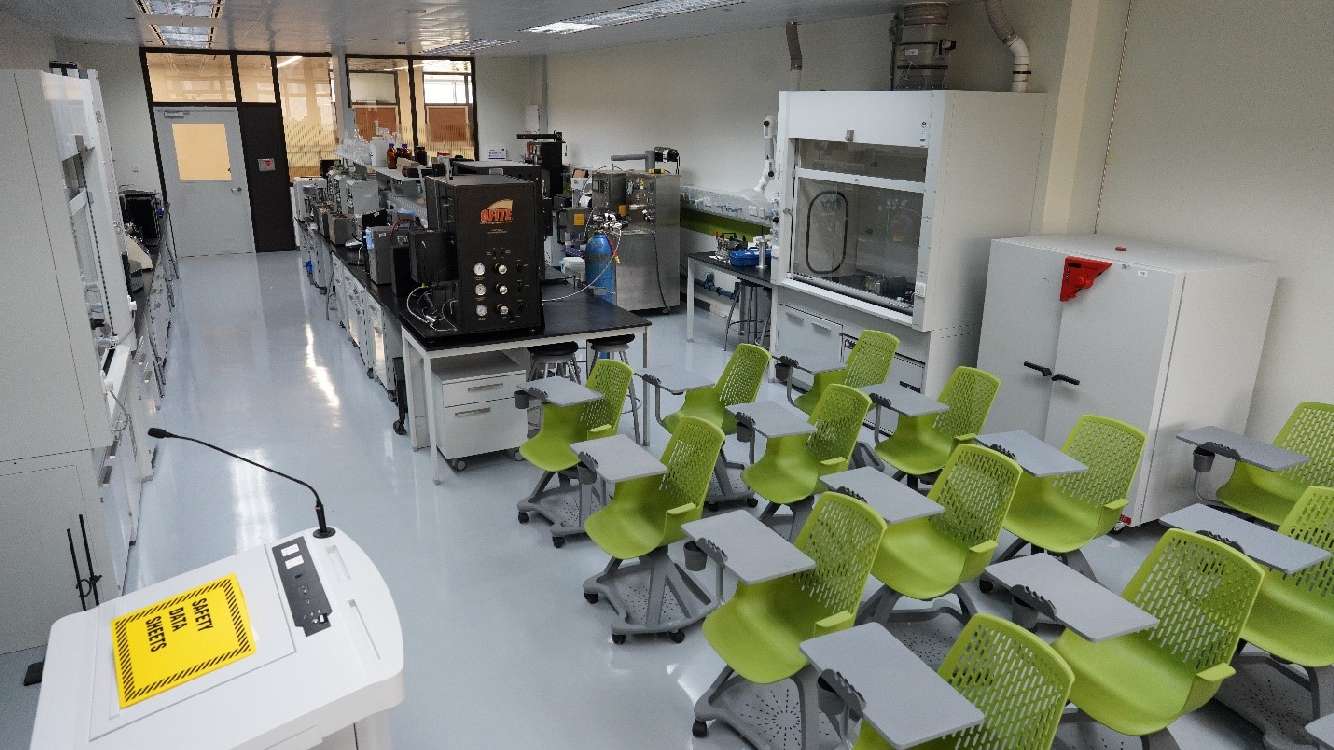
Cementing Research Laboratory
Location: Building 78, Room 3015
The oil well cementing laboratory at CPG KFUPM is research and teaching lab in which is prepared with all facilities needed by students and researchers for cement slurry preparation, conditioning, and testing. Different testing equipment are available in this lab to evaluate the properties of the cement slurry such as its rheology, filtration properties, and thickening time. The gelation properties could also be evaluated in this laboratory at room conditions or high pressure and high temperature situations. In addition to that the gas migration through the cement body could also be evaluated. This lab also incorporates facilities for cement cubes and cylinders preparation for the purpose of testing the properties of cement solidified sheath. Equipment for testing the cement compressive and tensile strength, evaluation of the cement interaction with other corrosive fluids such as CO2-saturated brines is also possible with the facilities provided in the cementing lab.
Contact: Dr. Salaheldin Elkatatny & Jaber AlJabri for more info.
Drilling Fluid Research Laboratory
Location: Building 78, Room 3014
The performance evaluation of the various drilling fluid systems is a necessity to ensure optimum drilling operations. Hence, drilling fluids testing must be conducted to evaluate their properties, achieve the desired parameters, and determine the performance limitations. The drilling fluids laboratory is designed to serve both instructional and research purposes to undergraduate and graduate students. This laboratory is equipped with the most recently developed apparatuses that can provide various measurements on various mud systems at standard and high-pressure high-temperature conditions.
Contact: Dr. Salaheldin Elkatatny & Mobeen Murtaza for more info.
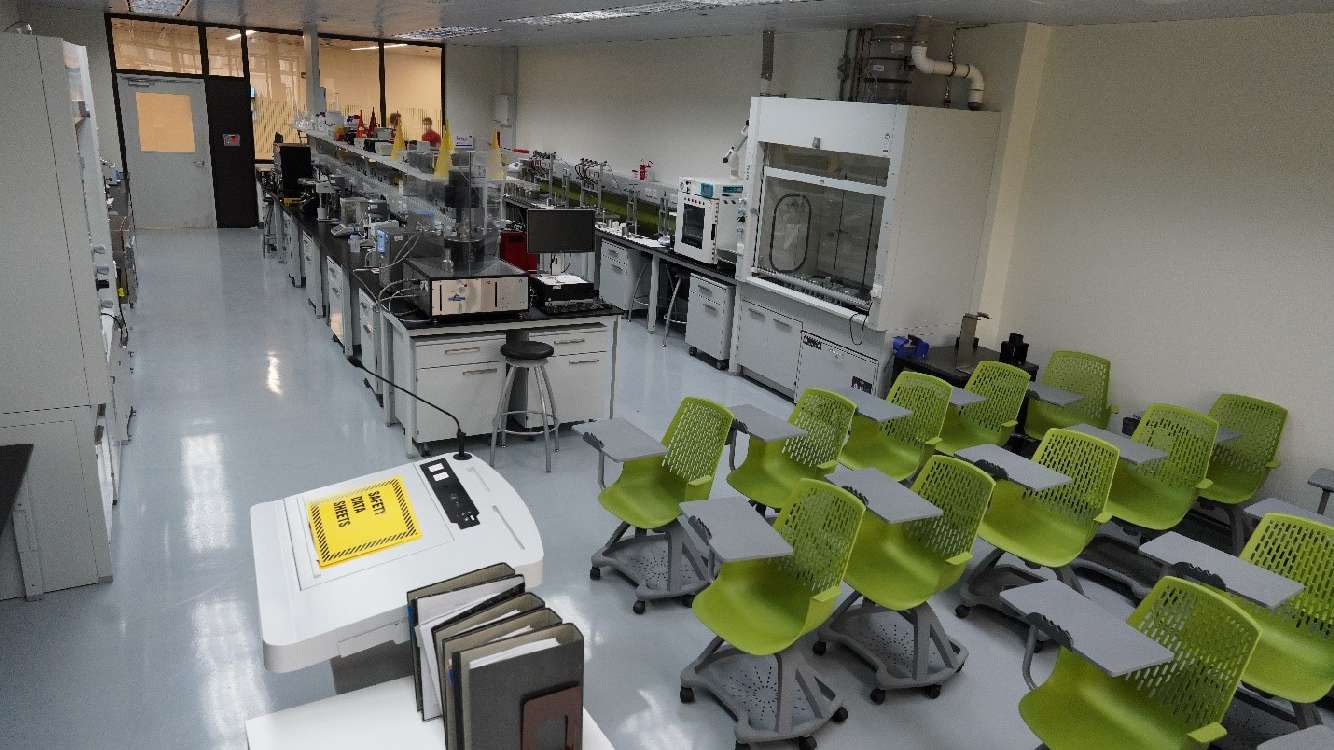
Drilling Fluids and Cementing
Location: Building 2, Room 104
In drilling fluids and cementing lab, petroleum engineering students are acquainted with the basic techniques of formulating, testing and analyzing the properties of drilling fluid and oil well cement.
The Cement Atmospheric Consistometer is used for conditioning cement slurries as the slurry is subjected to down-hole conditions of elevated temperature under atmospheric pressure.
From the recorded data, it also helps determine the slurry thickening time, free water content, fluid loss, viscosity, and other various rheological properties.
Compression Machine Servo-Plus
This machine is designed to perform uniaxial compression tests on cement and rock samples with high accuracy. The cement sample is crushed to get the final uniaxial compressive strength. During the application of load, the real time chart is generated for the sample. The shape of the tested samples can be in cubes or cylinders.
Contact: Mobeen Murtaza for more info.
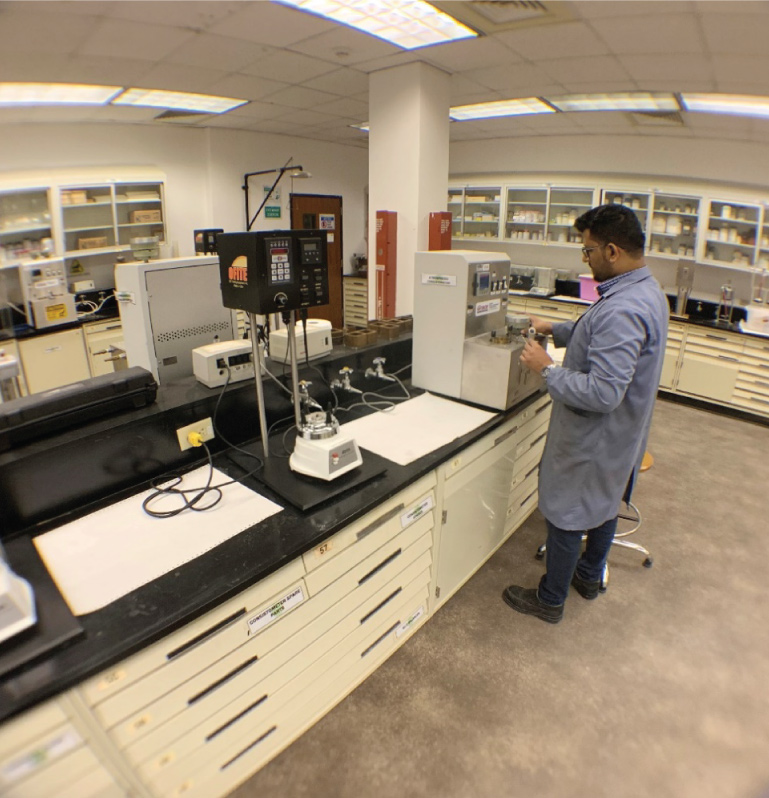
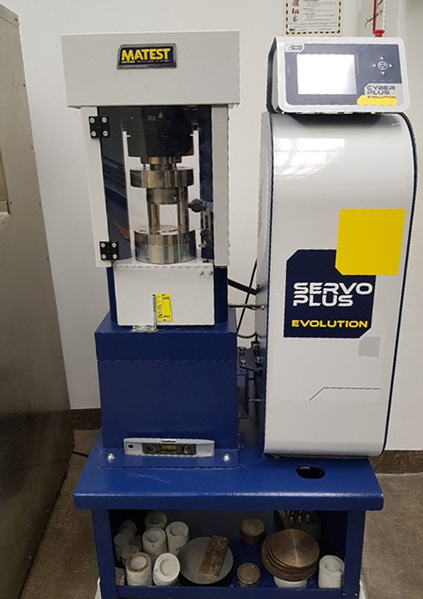
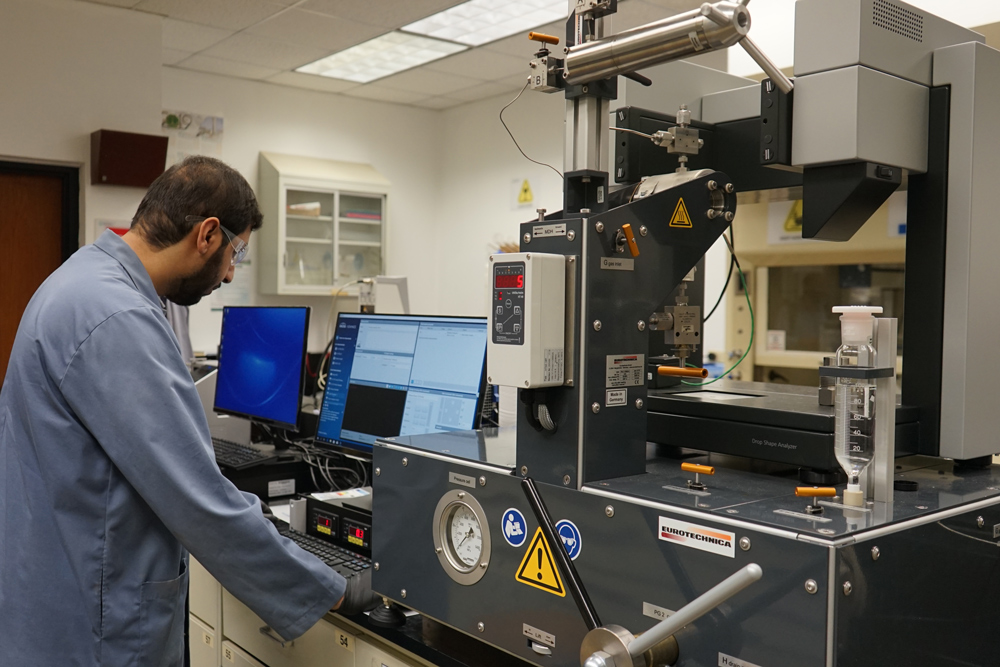
Drop Shape Analyzer (DSA100)
Location: Building 2, Room 105
Measures the surface tension of liquids using the Pendant Drop method. The results can be used to analyze the relationship between the wetting of the solid and the liquid properties. The results help to provide a scientific picture of the interface contact. Other solutions for measuring the liquid-liquid interfacial tension, for measurements at high pressures and for surface rheology.
Contact: Jafar S. Alhamad for more info.
Thermo Gravimetric Analysis
Location: Building 2, Room 109
The TGA HP/1 is a highly versatile research instrument for measuring the thermo physical properties under pressure. The instrument continuously measures mass while the temperature of a sample is changed over time. Mass, temperature, and time are considered base measurements in thermo gravimetric analysis while many additional measures may be derived from these three base measurements.
Contact: Ammar M. Alramadhan for more info.
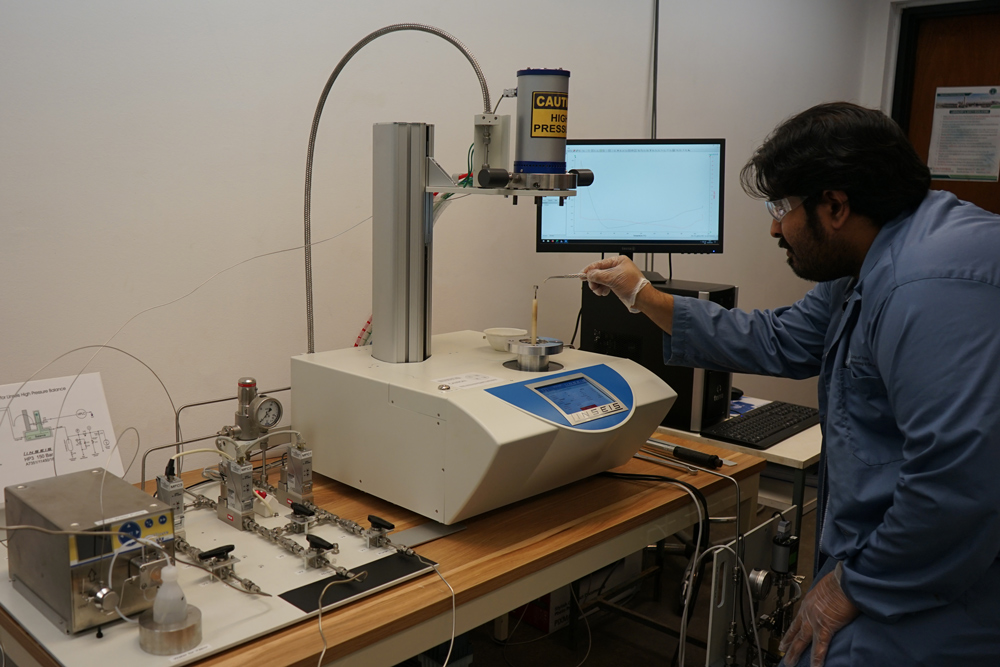
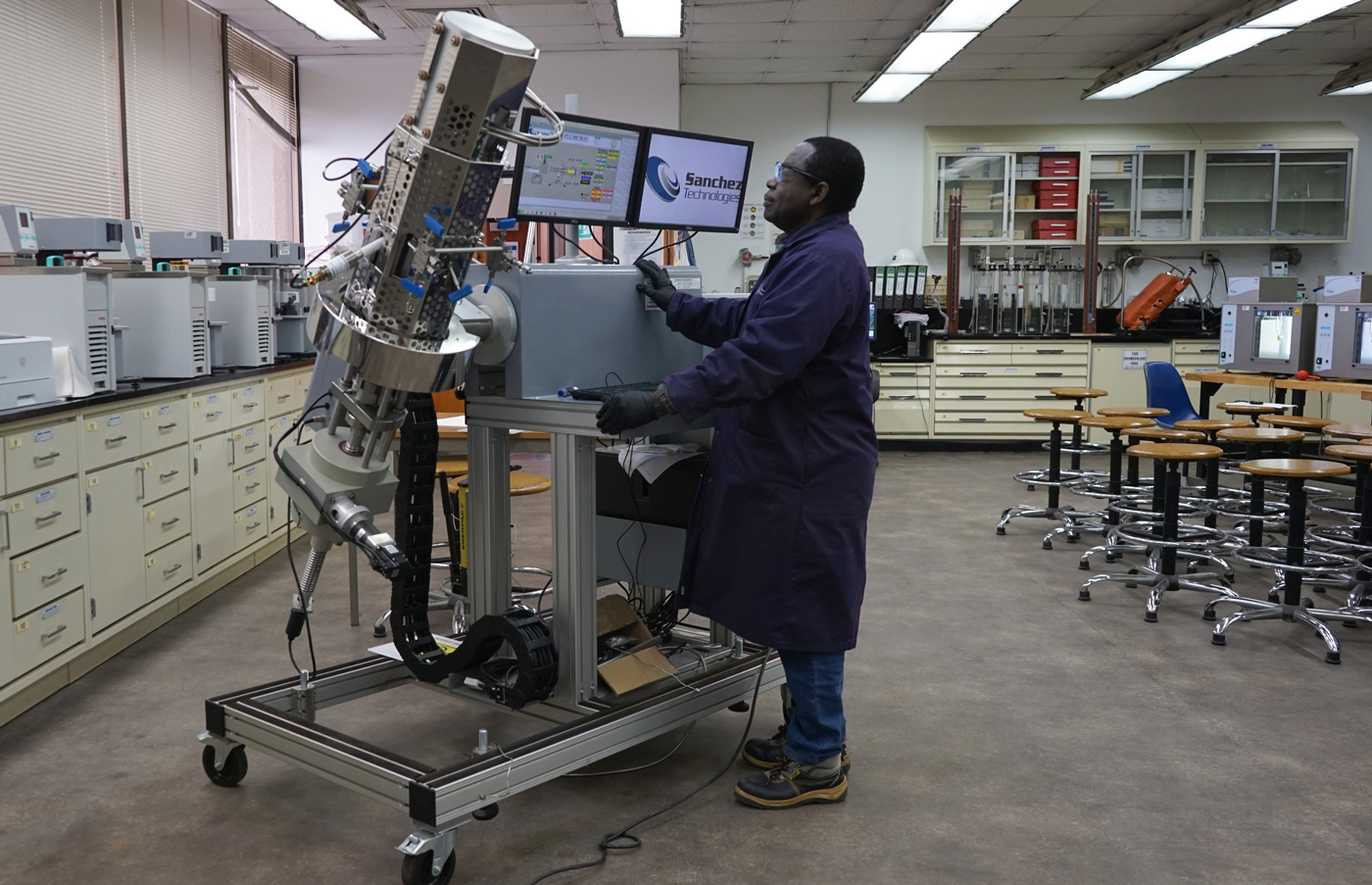
Fluid Properties Laboratory
Location: Building 2, Room 113
Fluids Properties Laboratory is a teaching Laboratory where experiments about reservoir fluids properties (oil/gas) are conducted.
These properties are vital to determine the amount of crude oil and gas in the reservoir, and the amount that can be lifted to the surface.
The laboratory is equipped with state-of-the-art equipment in the petroleum industry and with the objective of helping petroleum engineering students to practically verify the theoretical aspects discussed in the classroom.
The PVT FV EDU System is the latest state of the art equipment that can perform a full range of experimentations with crude oil, volatile oil or gas condensate. These experiments include:
- Constant Compositional Expansion
- Constant Compositional Depletion
- Separator Test
- Differential Vaporization
- Fluid Envelop Phase
- Constant Volume Depletion
Contact: Abdulsamed Iddris for more info.
Reservoir Rock Properties Laboratory
Location: Building 2, Room 114
Rock properties laboratory main role is to measure the properties of core samples, providing a physical model of reservoir characterization.The measured data are used to define storage capacity (porosity), the magnitude and distribution of flow capacity (permeability), and fluid saturation, as well as lithology and other parameters.
The URC-628 Ultra Rock Centrifuge is the newest generation of ultra high-speed rock-core centrifuges available to the core analysis laboratory for rapid determination of capillary pressure curves, sample preparation (for subsequent flow tests), relative permeability, and wettability determination using the Amott and USBM methods.
With the data analysis package, the URC-628 can also be used to determine the capillary pressure curves and the relative permeability curves for the displaced phases in both the drainage and imbibition modes.
Contact: Eassa Abdullah for more info.
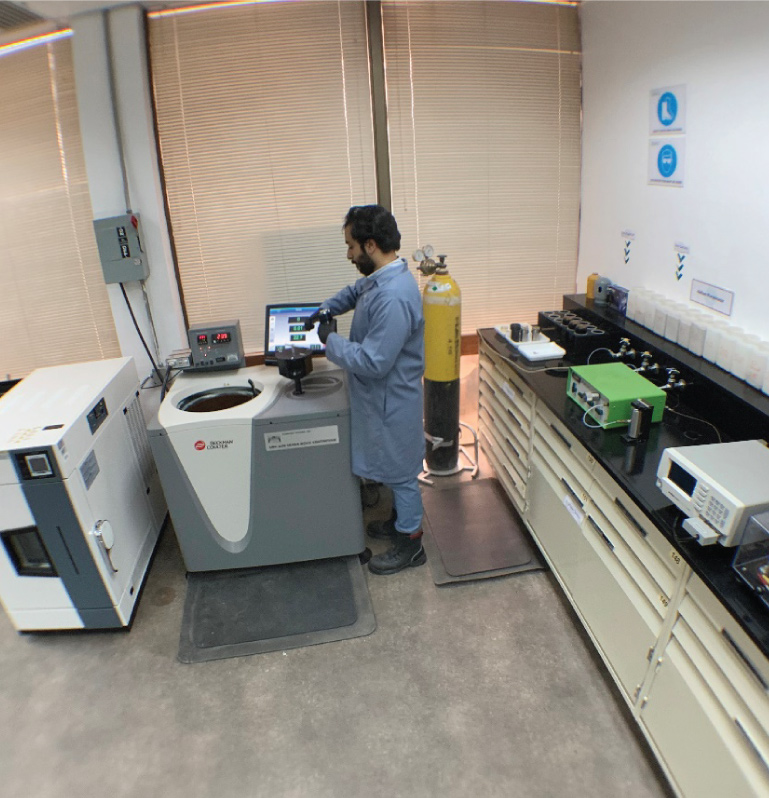
Adv. Seismological Exploration Laboratory
Location: Building 78, Room 3010
The Advanced Seismological Exploration Laboratory is versatile with many portable geophysical instruments for electrical, electromagnetic, magnetic, gravity, and seismic surveys. The lab is dedicated to equipment preparation, fieldwork support, and advanced geophysical research, including controlled tank experiments to simulate and analyze subsurface phenomena in detail. As a dynamic learning and demonstration space, the laboratory enables hands-on interaction with cutting-edge tools for students and visitors, showcasing the group's technical expertise and research capabilities.
Key Equipment in Lab 3010:
- Electrical Resistivity: Syscal R1, Syscal Pro, Syscal Deep Marine, and ZZ Resistivity systems for subsurface resistivity imaging, essential for characterizing reservoir properties and fluid distribution.
- Electromagnetic Tools: ABEM WalkTEM, Structure Scan Mini XT, and KMS systems for investigating geological structures, detecting hydrocarbon-bearing zones, and mapping groundwater or contamination plumes.
- DGPS: Trimble R10 DGPS and Leika systems for precise geolocation during field surveys.
- Gravity: CG-5 Gravitometers for identifying density variations in subsurface formations, aiding in resource exploration and void detection.
- Magnetic: Cesium and Proton Magnetometers for identifying magnetic anomalies caused by ferromagnetic minerals or buried metallic objects.
- Ambient Vibration Monitoring: Recorders for analyzing natural ground vibrations.
- Borehole Logging Systems: MountSopris Scout hardware with sonic, resistivity-IP, and natural gamma-ray probes for in-depth subsurface investigation.
Contact: Abdul Latif Ashadi & Ahmed A Shaibani for more info.
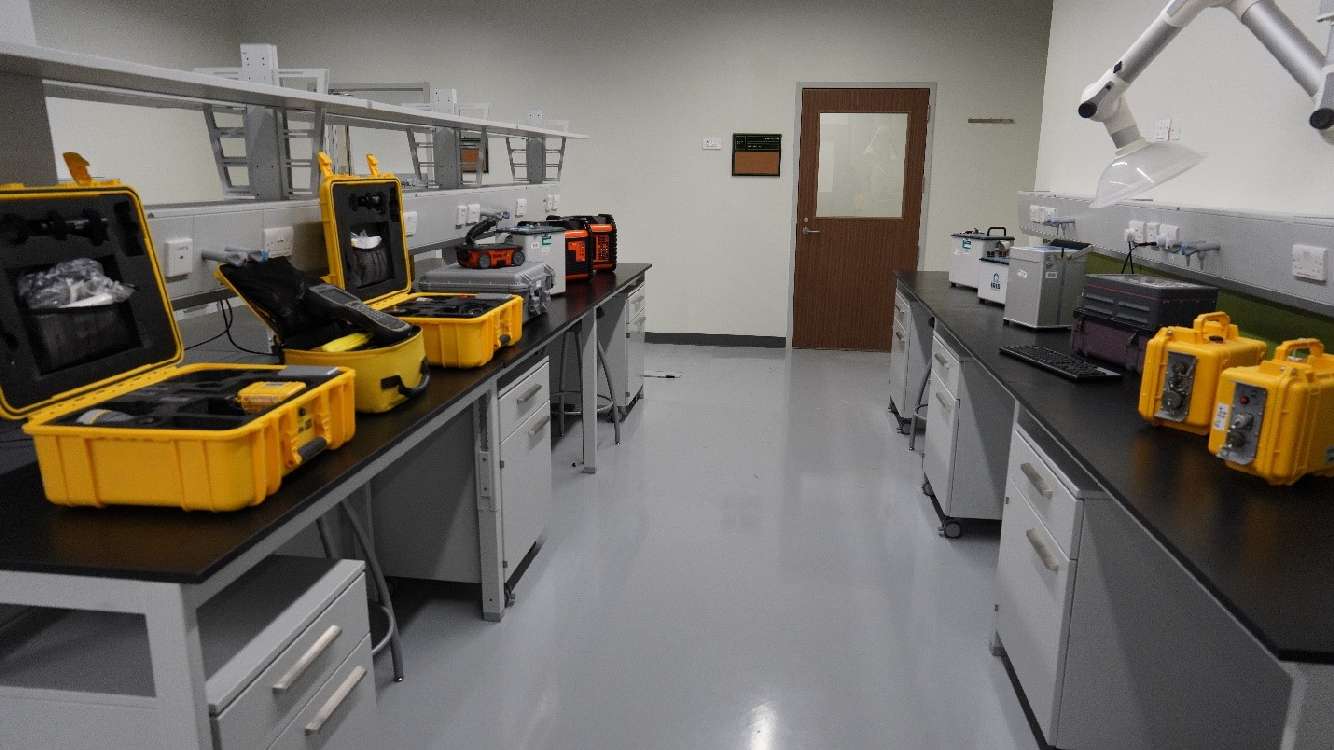
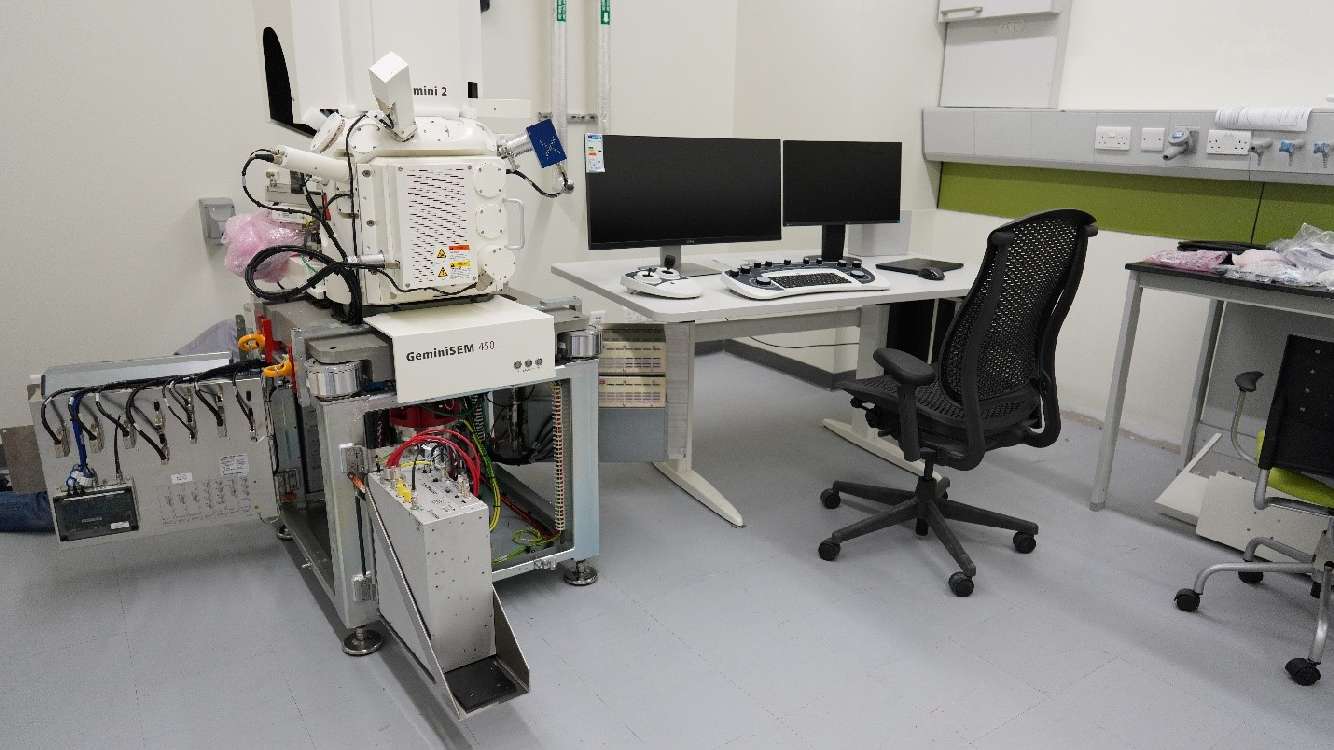
Scanning Electron Microscope Laboratory
Location: Building 78, Room 0006
The Scan Electron Microscopy lab is one of the most important teachings and research facility for all undergraduate and graduate courses in Geosciences and Petroleum Engineering Department in College of Petroleum Engineering & Geosciences. All basic and applied research of most of the faculty members specifically in the College of Petroleum Engineering &Geosciences depends on advanced research in quantitative characterization of minerals and elements and hydrocarbons which can only be accomplished with the help of scanning electron microscopy.
M4 TORNADO Micro X-ray Fluorescence (µXRF) Bruker AXS
The lab system is one of the High quality imaging and easy measurements, with large samples and high speed mapping with high resolution, and high throughput signal processing, Versatility and convenience by variable pressure and automatic chamber door higher speed by parallel processing and large SDDs with most advanced Esprit M4 TORNADO and X-Method software and Advanced mineral analysis with AMICS.
Contact: Mashaer A. Alfaraj & Abduljamiu O. Amao for more info.
Advanced Geophysics Laboratory
Location: Building 78, Room 3013
In addition to educational activities, the Advanced Geophysics Laboratory serves as a critical workspace for preparing, calibrating, and testing data acquisition equipment before deployment in the field. The lab plays a vital role in equipping geophysics students with practical skills by allowing them to interact with the latest data acquisition systems and geophysical tools used in industry and research.
Key Equipment in Lab 3013:
- Geospace Seismic Recorder (GSR): wireless data acquisition system capable of high-resolution seismic data collection for reflection, refraction, and passive seismic applications.
- Multi-component borehole acquisition system (Geotomographie): advanced equipment for borehole geophysics.
- Electromagnetic Induction Tools (EM31, EM38): portable systems for mapping soil conductivity, groundwater salinity and subsurface structures.
- Seismic and Geoelectrical Tools: Instruments supporting both active and passive seismic methods and resistivity measurements for comprehensive subsurface analysis.
Contact: Abdul Latif Ashadi & Ahmed A Shaibani for more info.
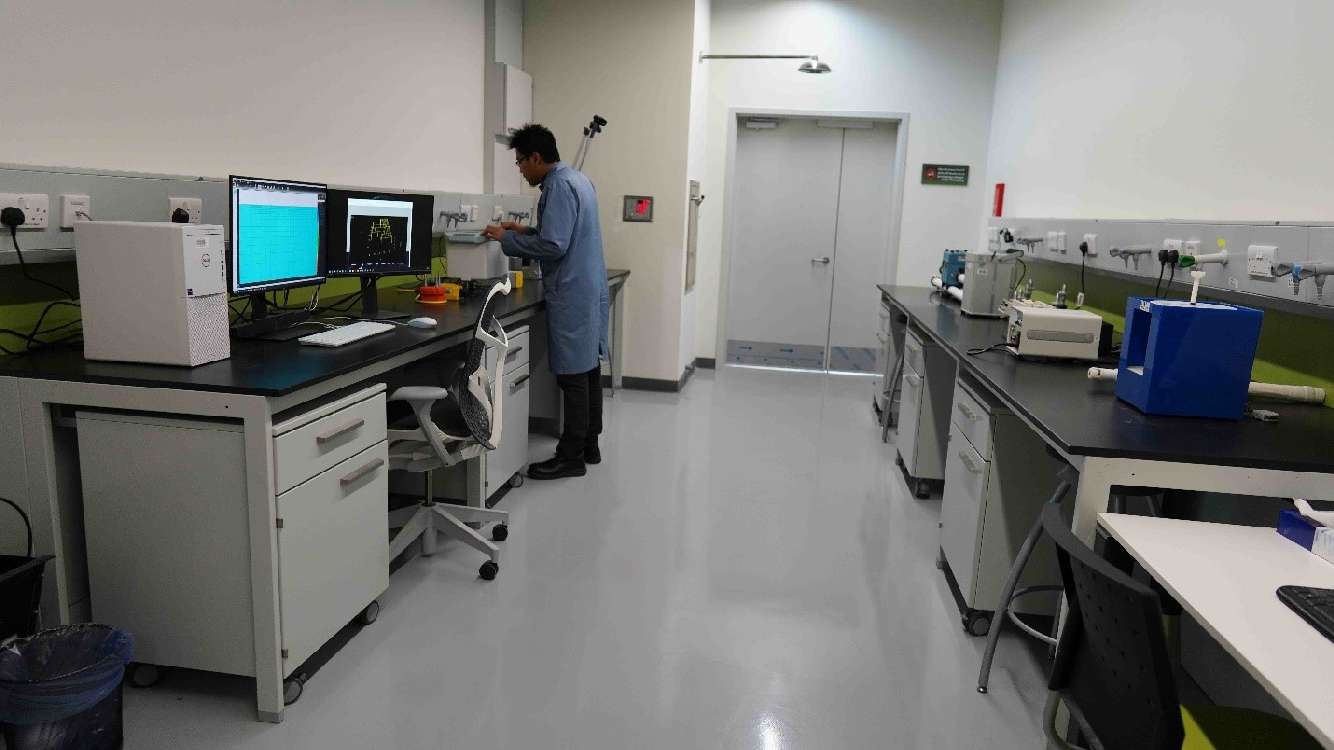
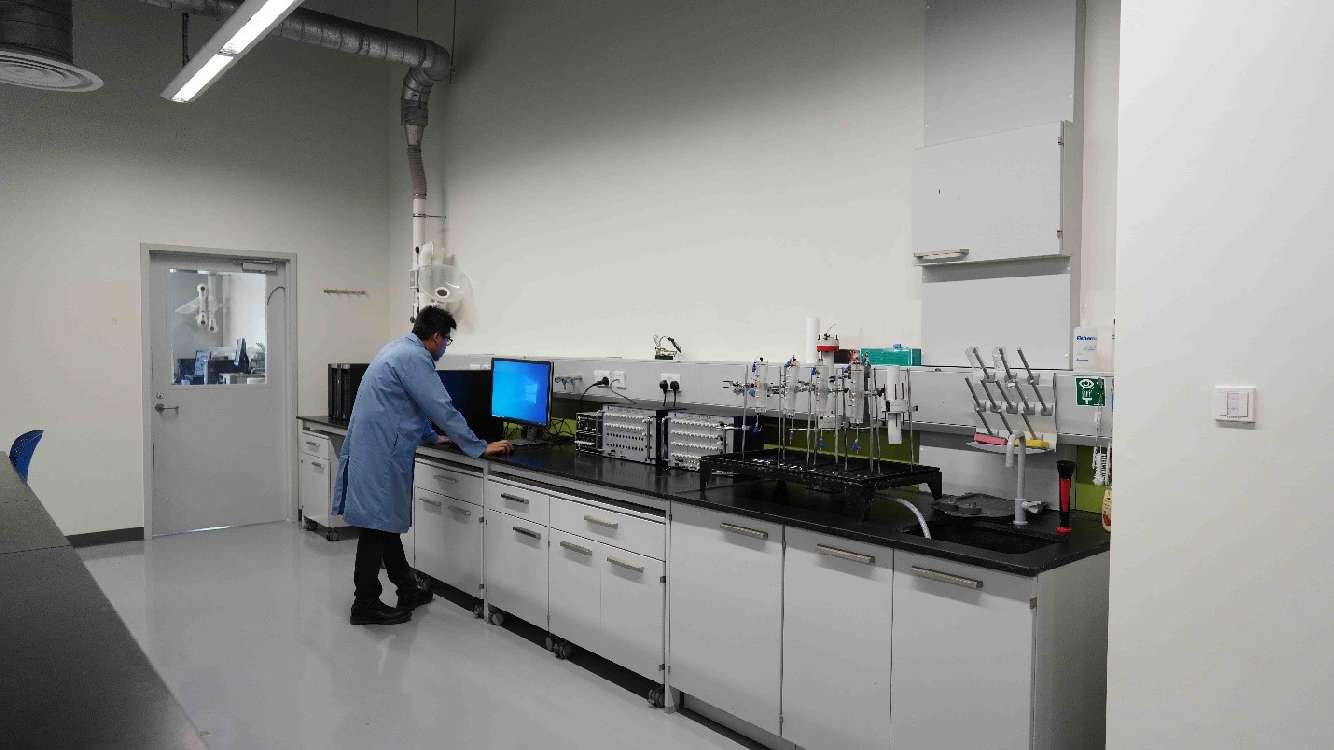
Siesmic Physical Modelling Laboratory
Location: Building 78, Room 3076
The Seismic Physical Modeling Laboratory is a specialized facility dedicated to advancing seismic and electrical geophysical research. The lab is responsible for maintaining and preparing wireless seismic sensors for optimal field deployment while conducting detailed microscale and mesoscale experiments. A primary focus is on advanced electrical methods, including Induced Polarization (IP) and Spectral Induced Polarization (SIP), with applications in subsurface characterization and resource exploration. Research conducted in this lab includes investigations into SIP responses in low resistivity pay zones, analysis of pyrite content, differentiation between laminated and dispersed clays, and characterization of water saturation in brine-filled micropores or freshwater formation fluids. These studies are critical for enhancing subsurface imaging and understanding reservoir properties.
Key Equipment in Lab 3076:
- Portable Spectral Induced Polarization (PSIP) Field/Lab Unit: multi-channel instrument optimized for laboratory and near surface SIP, resistivity, time-domain IP, and self-potential measurements
- KT-10R Magnetic Susceptibility and Conductivity Meter for evaluating magnetic and electrical properties of subsurface materials
- IGU-BD3C-5 3C Broadband Sensor: high-resolution sensors for advanced seismic data acquisition
- Sample Core IP Tester (SCIP): portable, battery-operated instrument for measuring electrical properties of drill cores, samples, and outcrops
- Oscilloscopes: Tektronix 212 and MDo3014 models for monitoring and analyzing signals during experiments.
- Seismic sensors: IGU-16HR 3C Sensors IGU-16HR 1C Sensor for high-density seismic acquisition and modelling.
Contact: Abdul Latif Ashadi & Ahmed A Shaibani for more info.
Micro Paleontology Laboratory
Location: Building 78, Room 3051
This lab is used by graduate students and faculty for research in the field of micropaleontology with reference to historical development and investigating micropaleontological and biostratigraphic analysis; survey of the major microfossil groups, their morphology, taxonomy, ecology, geologic distribution, evolutionary trends, and stratigraphic use, with selected problems from Arabia and nearby regions.
We also have the most comprehensive library of micropaleontological literature in the Middle-east.
Contact: Prof. Michael A. Kaminski & Syed Shahul Hamid for more info.
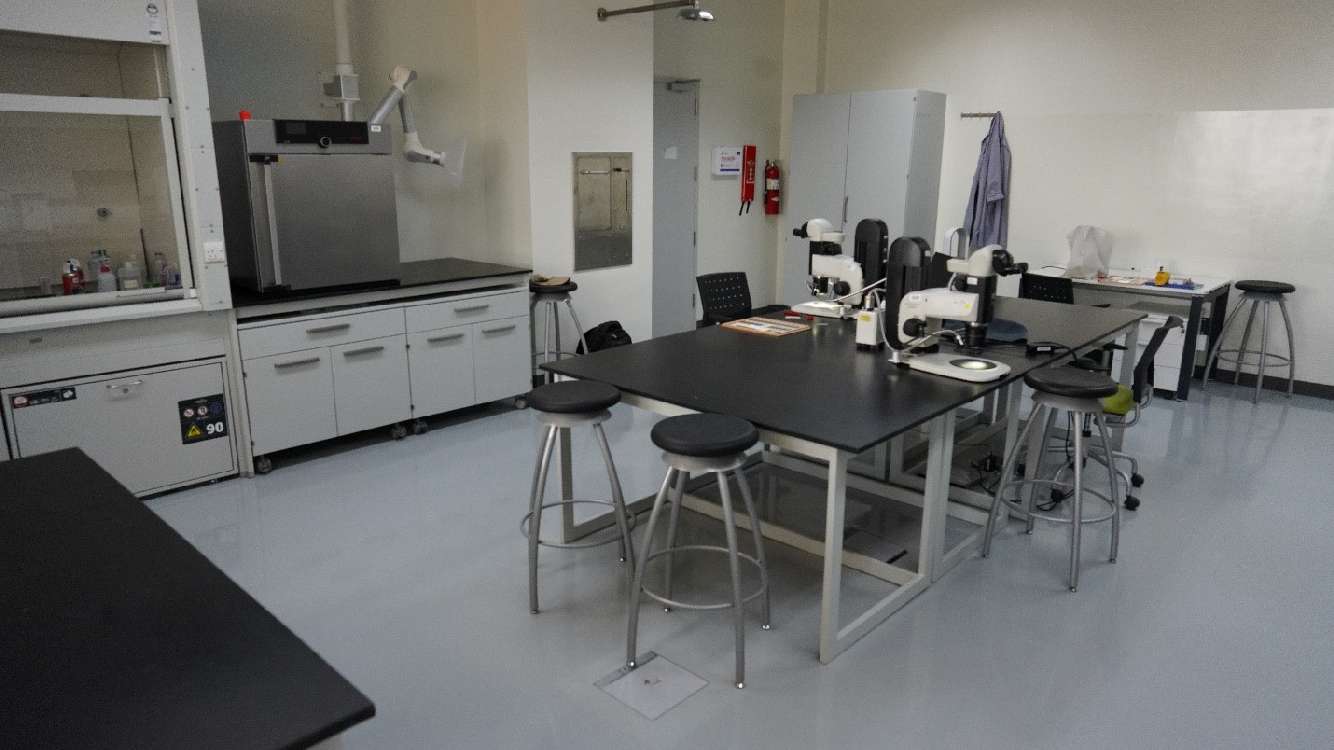
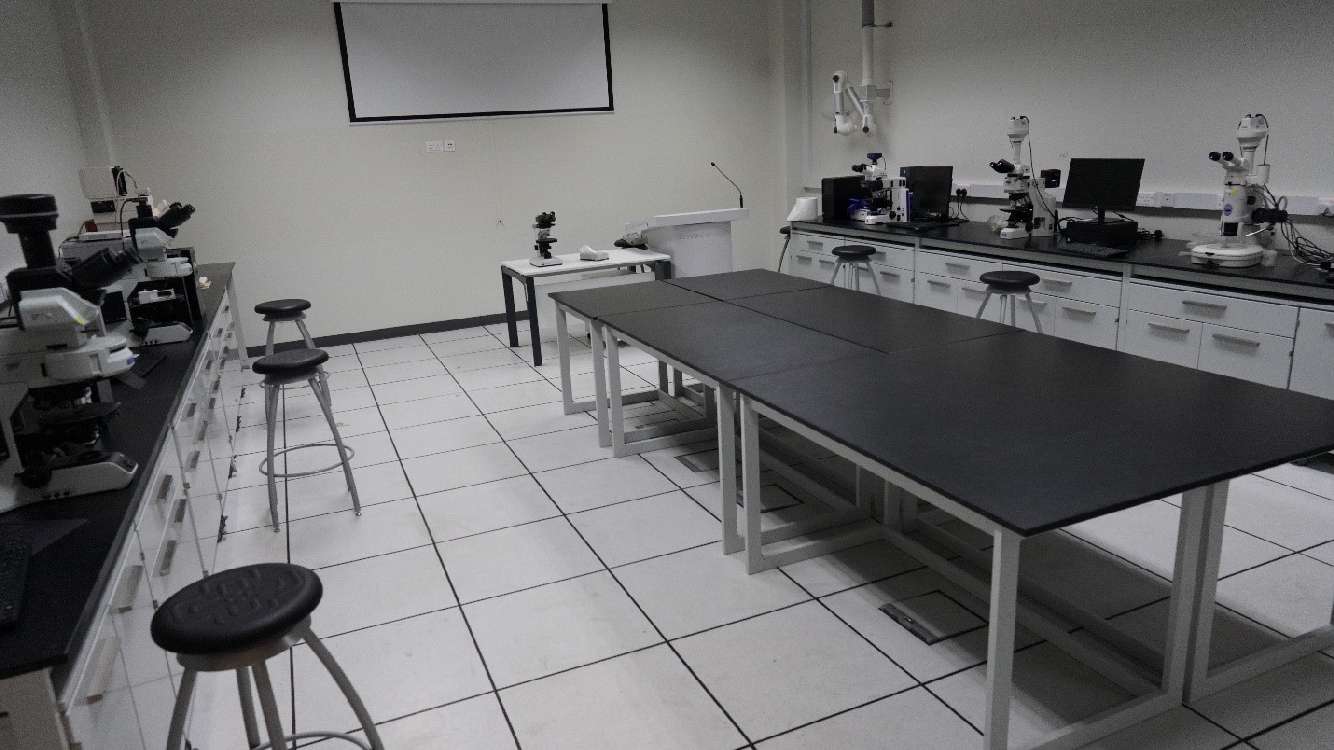
Advance Microscopy Laboratory
Location: Building 78, Room 3050
Teaching faculty and research geologists in the department of geosciences use the facility to conduct extensive and detailed studies of the pore systems, diagenetic lithofacies and reservoir properties of various carbonate and clastic reservoirs in Saudi Arabia, the new research class microscopes allows the faculty and research students to systematically and properly carry out these tasks for evaluation of hydrocarbon fluid inclusions, and identification of opaque mineral under reflected and transmitted light. In addition, the PETROG software system for petrographic data capture, management, analysis, display and reporting with integrated camera and motorized high precision stepping stage is available at this lab location.
BX53-P Olympus
Polarizing microscope with a superb performance in polarized light with fluorescence’s light attachment. Has a breakthrough combination of UIS2 infinity-corrected optics and Olympus original optical-design. With a new, extended line of compensators to make the BX53-P versatile enough to handle observation and measuring applications in virtually any field. With a Leading Digital Petrography Tool PETROG software.
Contact: Mushabbab Q. AlRaqdi & Syed Shahul Hamid for more info.
Advanced Rock Physics
Location: Building 78, Room 3077
Inductively Coupled Plasma-Mass (ICP-MS) Spectrometers
For advanced high-performance analysis with reliability and ultra-flexibility, measurements of inorganic contents (trace metals) in air, water or soil samples. In addition, this system is also used for teaching various Geology and ENVS courses in showing students how to asses environmental impact and pollution problems.
Microwave Digestion System Model Mars 6
Microwave digestion system used for sample extraction and synthesis for chemical, geological, biological and environmental samples. It is urgently required to be used with the new ICP/MS Machine as a sample preparation unit.
Contact: Adnan Mubarak & Syed Shahul Hamid for more info.
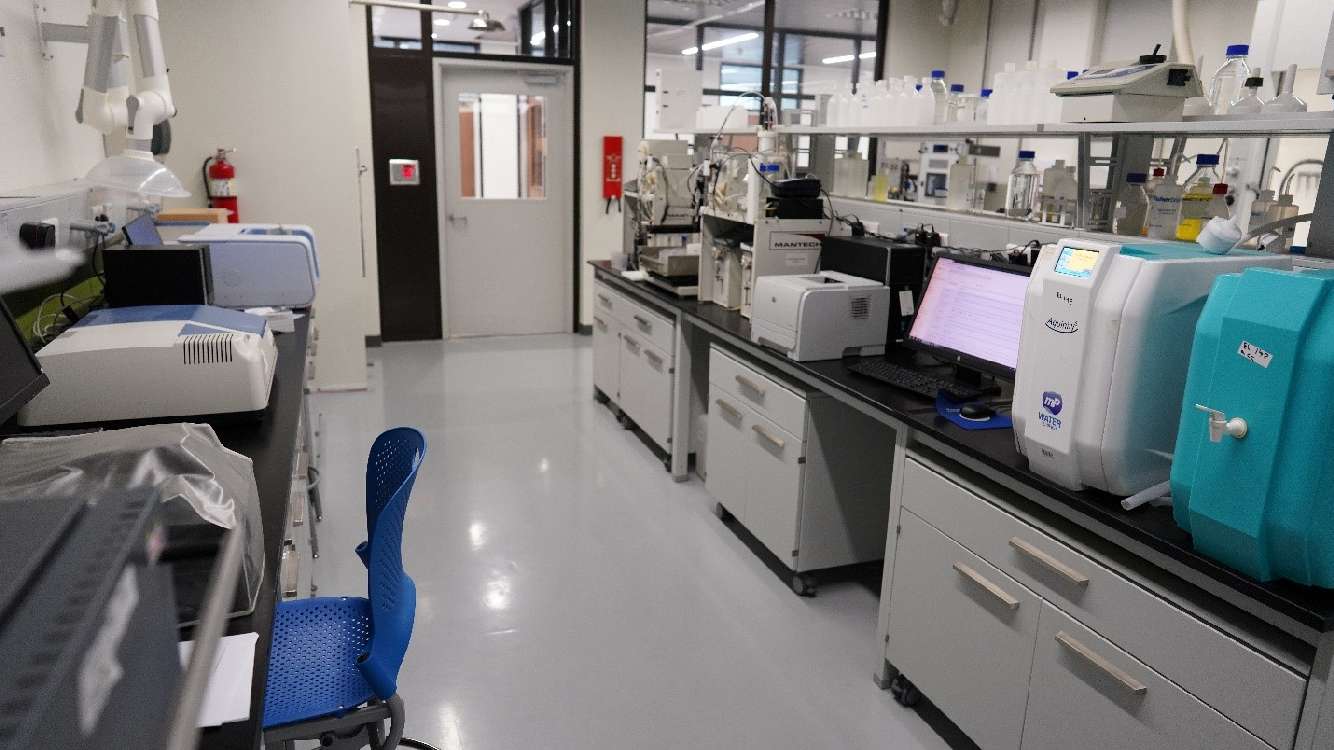
Hydrogeology & Environmental Laboratory
Location: Building 78, Room 2007-2008
This lab facility accommodates state of art research and teaching equipment, such as GC/MS, Total carbon analyzer, Photo reactors UV/SUN Media, Ion Chromatograph, Gas Chromatograph, Portable GC system supporting all faculty & Graduate Research studies.
In additional to Hydrogeology Studies and Geostatistical Modeling, Geology of Ground Water supplies and Hydrodynamics, Water analysis and groundwater.
GC/MS
This is one of the powerful state-of-the-art analytical instruments in the Environmental and Hydrology lab. It is useful for detection and quantification of volatile and semi-volatile organic compounds. It is equipped with three important sample injection units; purge-and-trap (P&T), headspace (HS) and direct liquid injection (AS). It is also configured to use solid-phase micro-extraction (SPME) injection. These make the instrument to be suitable for wide range of hydrocarbon and organic compound analyses from solid, liquid and gas matrix.
UV reactor
This is used for the treatment of contaminated water. It remediates polluted water by advanced oxidation process (AOP) method. It uses UV radiation (and sometimes) other oxidants to degrade organic contaminants, reducing all organics to carbon dioxide and water as the final product.
PC-BOD
This is a benchtop multipurpose instrument for measuring electrical conductivity, turbidity, dissolved oxygen, carbonate, hardness, ammonia content, alkalinity, and biological oxygen demand (BOD). It is a very useful instrument for analysis of the quality of groundwater, produced water and drinking water.
Portable GC/MS
This is another important, yet rare, instrument. It is designed for quick and rapid analysis of hydrocarbons and other organic compounds in all types of environmental samples (air, water, and soil). It uses SPME and needle trap (NT) for sampling from all types of matrices. It is designed for field sampling and analyses and can be used in the lab as well.
Contact: Tajudeen A. Oyehan & Eyad Safi for more info.
Petrography Laboratory
Location: Building 78, Room 2059
The Geosciences department has a fully equipped rock preparation facility to support researchers in petrographic thin section making make thin sections. The lab has advanced precession thin section preparation machines such as Logitech LP-50, a Thin section precision lapping and polishing machine, a Buhler petro thin, a thin section system, and a Geoform Thin section precision lapping and polishing machine, amongst others.
PetroThin. Thin Sectioning System
This machine used to prepare different geological thin sections
Logitech Thin Section Polishing Machine
Automated thin section machine
SimpliMet Thin Section Polishing Machine
EcoMet+AutoMet 250
Contact: Habeeb A. AlAbbas & Syed Shahul Hamid for more info.
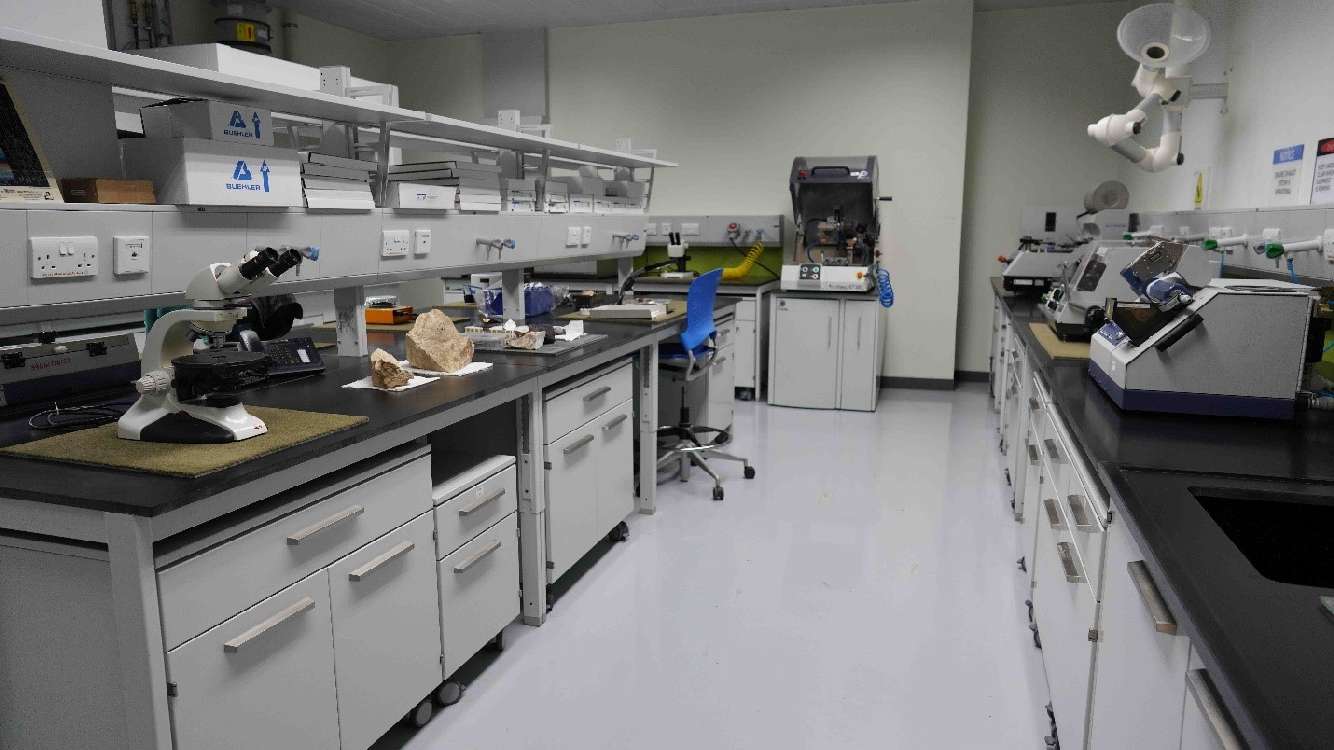
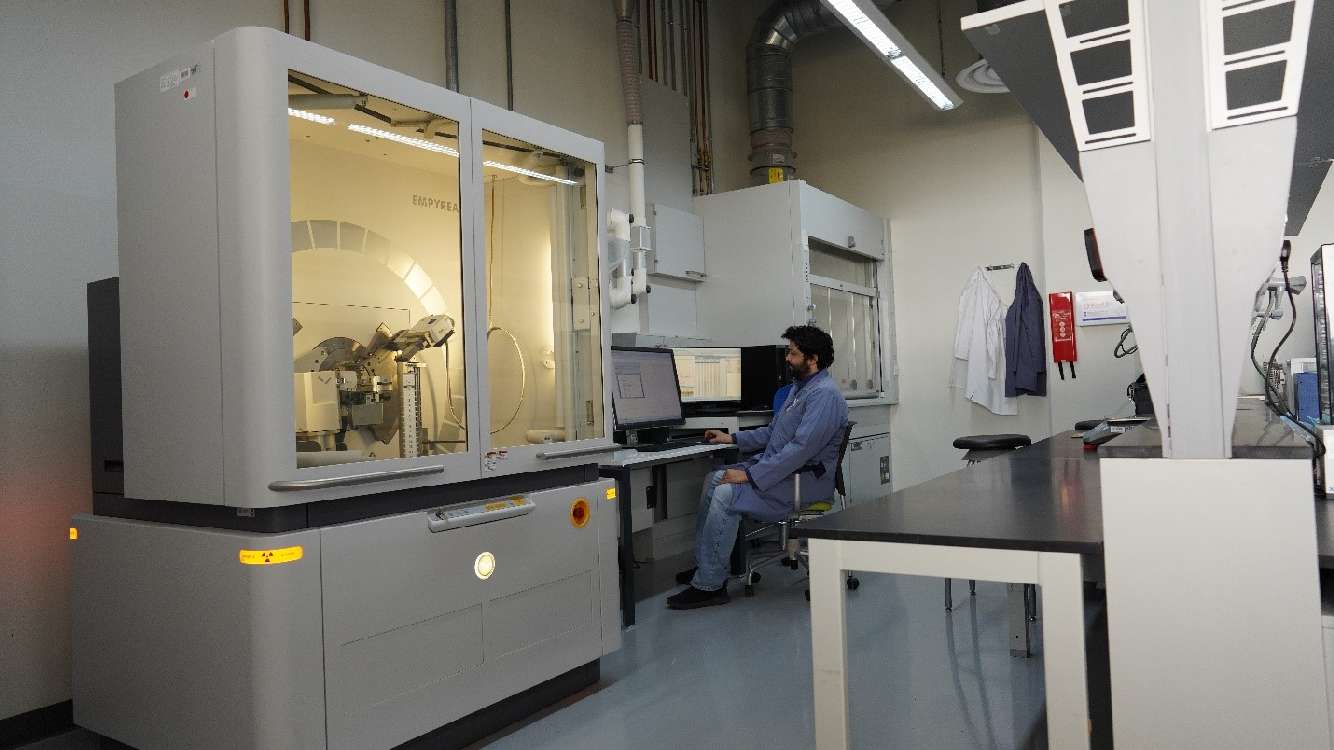
InOrganic Geochemistry Laboratory
Location: Building 78, Room 3060
X-Ray Diffraction System, model empyrean XRD system from PanAnalytical
XRD system Empyrean diffractometer includes all the optional items required. The system has all the technical requirements and provided additional features. detectors, goniometer, auto-sampler, stage, x-ray source, sample holder and software are the perfect fit for advanced XRD lab applications. The system is recent, state of the art and modular with fully functional support for our future anticipated use. The systems detectors were developed in collaboration with CERN and are used by many reputable universities around the world like MIT, Stanford etc.
NER AutoScan
NER Autoscan is a Multi-Probe Core Scanner for Petrophysical measurements with NERS Data Miner software. Used to record and calibrate sections of rock slabs or drill core and build digital library, the system includes: Auto scan PROBE FOR PERMEABILITY, THE SS PROBE Auto scan PROBE FOR VELOCITY, THE V-PROBE, Auto scan PROBE FOR RESISTIVITY, THE Z- PROBE Auto scan PROBE FOR DATA ANALYSIS, DATA MINER WITH CLUSTER ANALYSIS.
Contact: Bandar D. Al-Otaibi & Abduljamiu O. Amao for more info.
Seismic Monitoring & Research Laboratory
Location: Building 76, Room 2223
The Seismic Monitoring & Research Laboratory in Building 76 is a pivotal component of the Department of Geosciences. It is home to the state-of-the-art 120-second Trillium Broadband Seismometer system, a critical asset for the recording and monitoring of earthquakes. This advanced facility plays a vital role in the real-time interpretation of seismic events, providing immediate insights into the epicentre, magnitude, and other critical geophysical parameters of earthquakes as they occur. Through its sophisticated equipment and strategic location, the laboratory not only enhances our understanding of seismic activity but also significantly contributes to geosciences by offering invaluable data for research and analysis.
Contact: Abdul Latif Ashadi for more info.
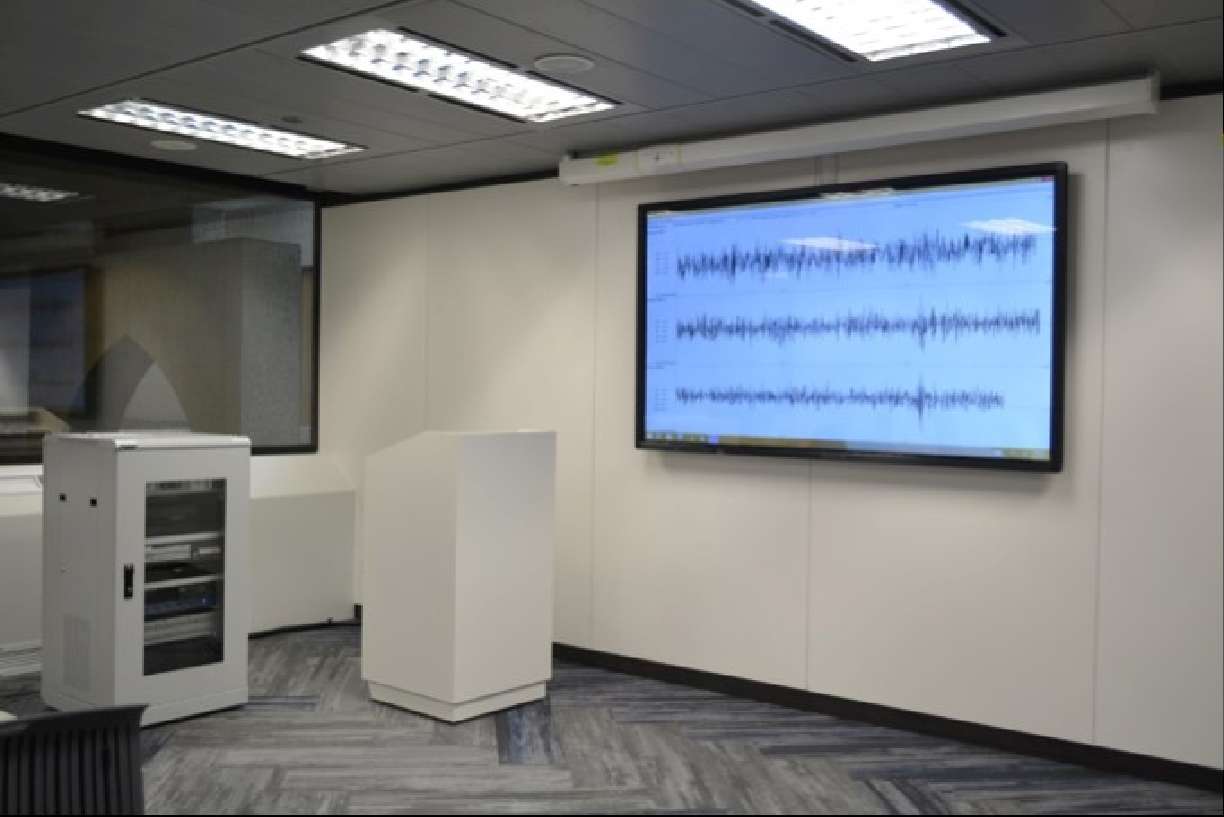
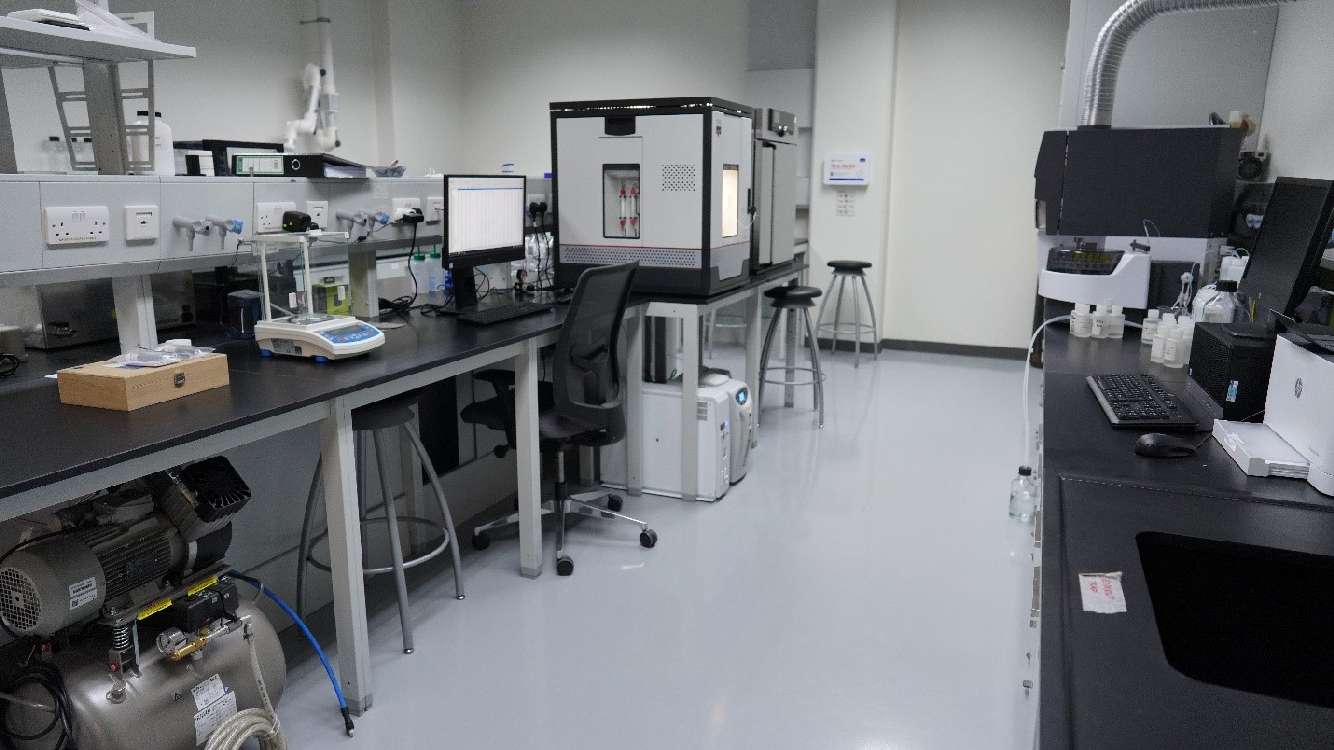
Organic Geochemistry Laboratory
Location: Building 78, Room 3059
Three principal analytical instruments are housed in the organic geochemistry laboratory. These complement other CPG lab capabilities, such as the Environmental Lab and the Stable Isotope Lab, in analyzing aspects of the geochemistry of hydrocarbon source rocks and oils. Central to that characterization is the anhydrous pyrolysis system (RockEval 7S) that provides, TOC, Tmax, OI, HI, and sulfur for kerogen typing and maturity analysis. The lab also houses mercury analysis instrumentation and elemental solution analysis by ICP-OES.
Contact: Dr. John D. Humphrey for more info.
Marine Geology Laboratory
Location: Building 78, Room 2017
The Marine Geology laboratory is available for researchers and teaching purposes in the field of sedimentology, oceanography, neoichnology, and other modern-studies. This laboratory is mainly used for conducing research in modern settings, such as tidal flats, marshes, shoreface, etc.; however, some of the equipment also compliment rock record studies, particularly in unconventional reservoirs. Several instruments are housed in this laboratory including multibeam echo sounder, portable X-ray Fluorescence, portable X-ray device (veterinary type), grab sampler, oven, micro CTD detectors, vibracorer, marine drone with simple sonar, etc. Current research that is being conducted in the Marine Geology laboratory mainly focuses on coastal areas of the Arabian Peninsula.
Contact: Dr. Korhan Ayranci & Syed Shahul Hamid for more info.
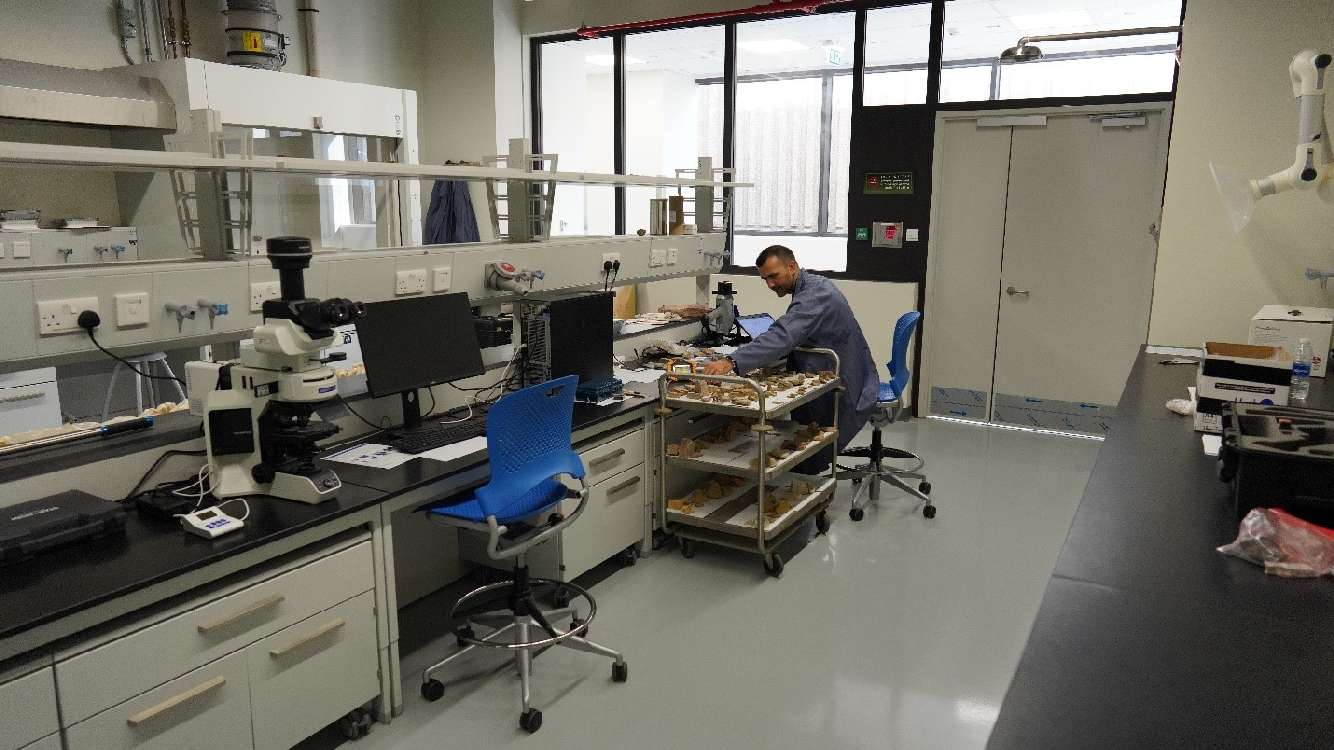
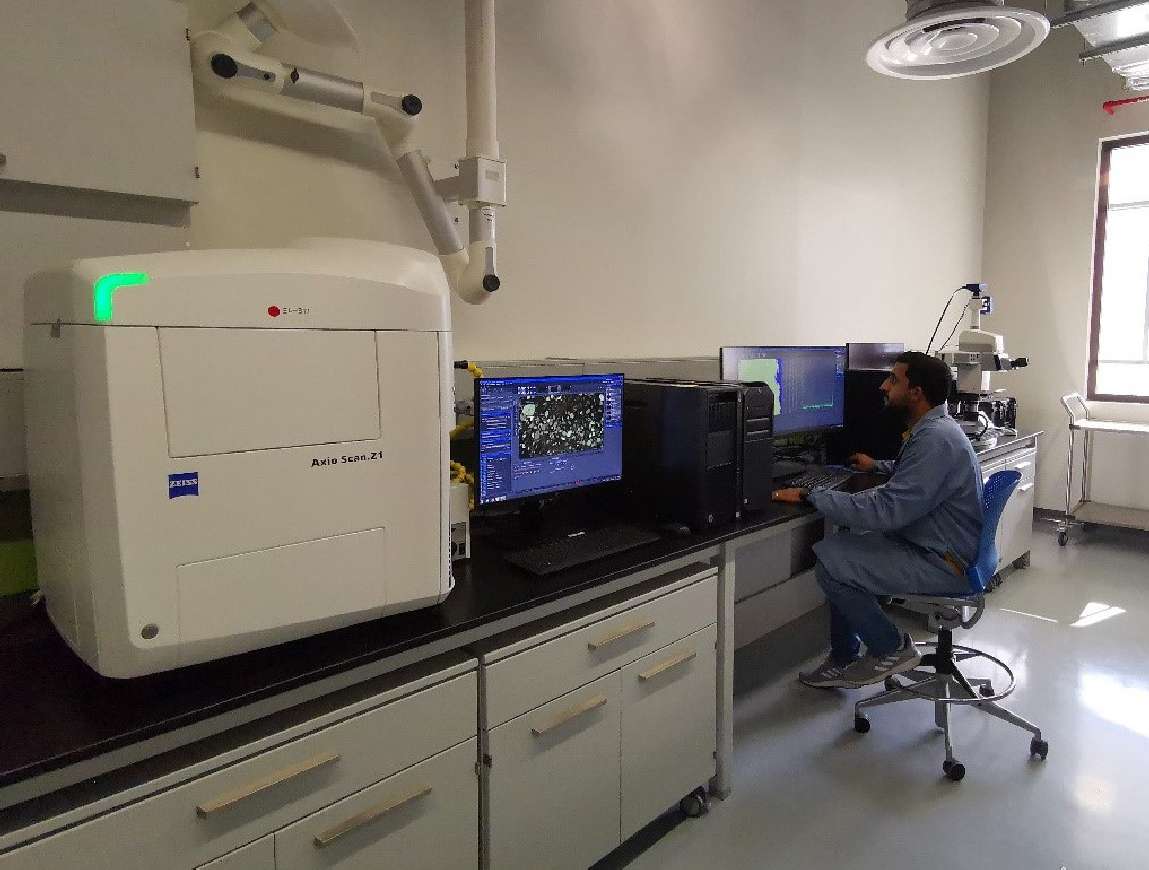
Sedementology & Stratigraphy Laboratory
Location: Building 78, Room 2012-2013
In the Sedimentology and Stratigraphy lab researchers and students can utilize state of the art instruments for petrographic scanning, trace element analysis, particle size/particle shape analysis and portable field equipment for direct outcrop measurements all to support research applications.
Axio Scan.Z1 is capable of acquiring high resolution petrographic thin-section scans in low (5x) and high (40x) magnification both in PPL and XPL along with a high-end workstation for image segmentation and data processing. S4 T-STAR is a rapid trace element analysis equipment utilizing total reflection X-ray fluorescence spectrometry method for liquid and powder samples with detection limits in ppb range. Particle size distribution and projected grain shape analysis of loose sediment using dynamic image analysis and laser diffraction with size detection range 0.1 µm – 3500 µm both in wet and dry conditions. Field equipment for direct measurement of elemental composition and permeability.
Contact: Mutada Al-Hashem & Dr. Kahlid H. Al-Ramadan for more info.
Mineralogy & Optics Laboratory
Location: Building 78, Room 2053
This is an essential teaching lab facility being used for core courses in Mineralogy and Optics, Petrology, Sedimentation, and Stratigraphy. This laboratory facility has been recently developed as a unique microscopy lab with Wi-Fi capable polarizing microscope for digital classrooms set up. With an integrated Wi-Fi router and streaming camera. To directly connect the polarizing microscopes in the lab to Labscope, and to share microscope images via Wi-Fi to HD monitors or projectors with the entire classroom.
Students laboratory work and exercises include studies of common rock-forming minerals using a polarizing microscope, morphological crystallography using crystal models, and determination of mineral specimens by physical properties and using a hand lens, and recalculations of chemical analysis. Studies of igneous, sedimentary and metamorphic rocks in hand specimens and under the microscope, exercises on types, texture, and composition of common sedimentary rocks; core description; lithofacies map; facies analyses; correlation. Computer software will be used in stratigraphic column construction and data interpretation.
Contact: Syed Shahul Hamid for more info.
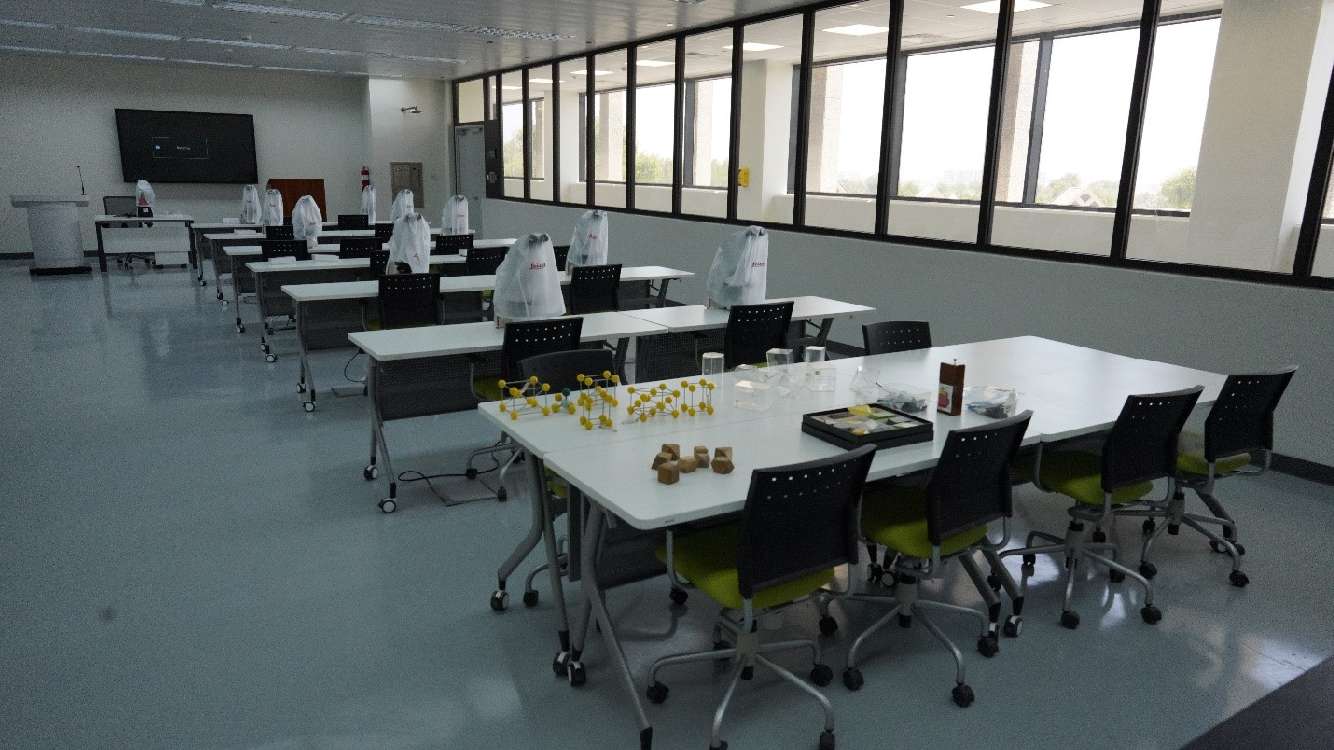
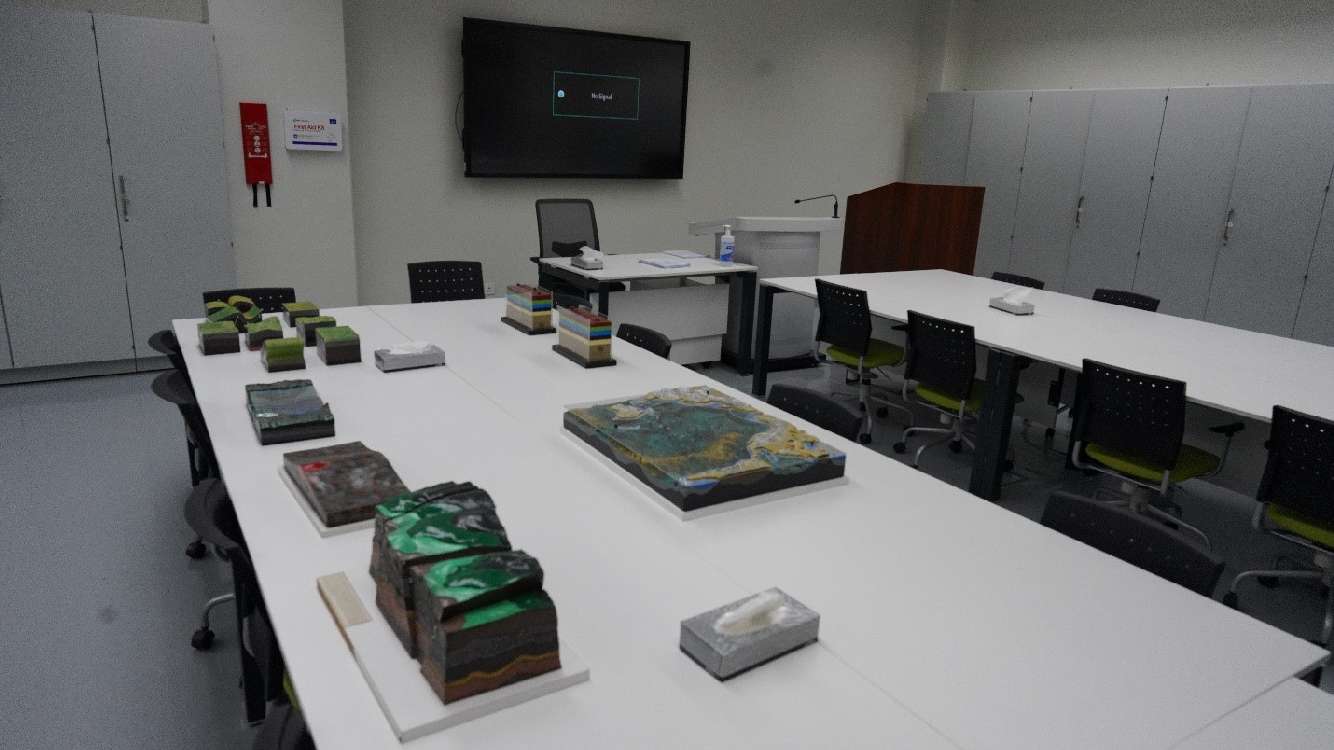
Physical and Historical Laboratory
Location: Building 78, Room 2052
This is an essential laboratory facility used for Physical Geology, Historical Geology, Paleontology and Biostratigraphy courses. Students' Laboratory work and exercises concentrate on mineral and rock identification and classifications based on physical and chemical properties, examination of stratigraphic rock samples, index fossils, and their identification, lithostratigraphic correlation, paleoenvirnoments.
Introduction to macrofossils and microfossils, including basic aspects of taxonomic theory, classification, and principles of nomenclature. Interpretation of Topographic, paleogeographic and geological maps and cross-sections are tough with Particular emphasis on the industrial application of these forms to aid palaeoenvironmental and biostratigraphic determinations as applied primarily to oil and gas exploration and production.
Contact: Syed Shahul Hamid for more info.
Geophysical Teaching Laboratory
Location: Building 78, Room 2055
The Geophysical Teaching Lab facility is being used in teaching Geophysical course like
- GEOP102 - Essentials of Geophysics
- GEOP215 - Introduction to Seismic Exploration
- GEOP304 - Gravity and Magnetic Exploration
- GEOP480 - Geophysics for Petro Engineers
- GEOL690 - Petrophysics and Well Log
During which Geophysical instruments and their field techniques are shown to students. The lab is used to display different geophysical instruments being used in the field in order to make some analysis, field investigation, and collect data in a large scale. The instruments like CG-5 Autograv Gravity Meter, Cesium and Proton Magnetometer System with Gradiometer Option and KMS-5100 Land CSEM transmitter etc. are being used.
Contact: Syed Shahul Hamid for more info.
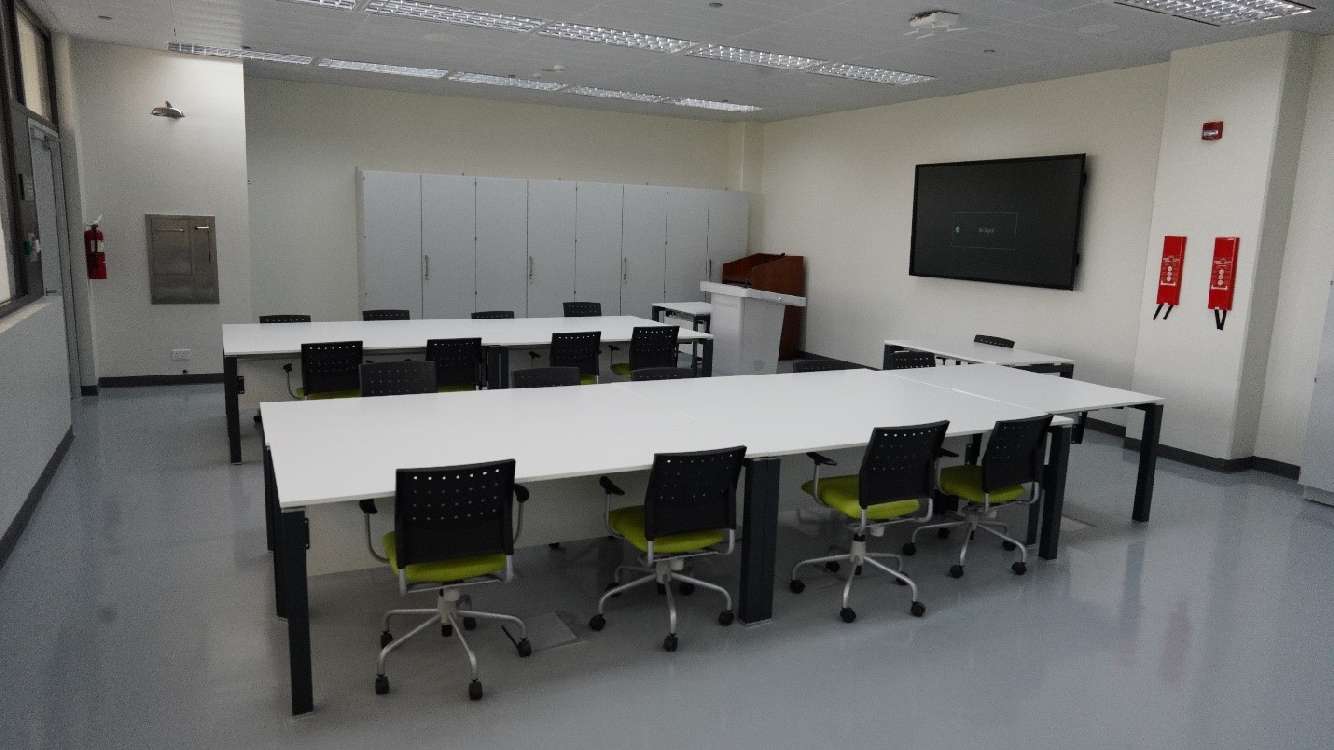
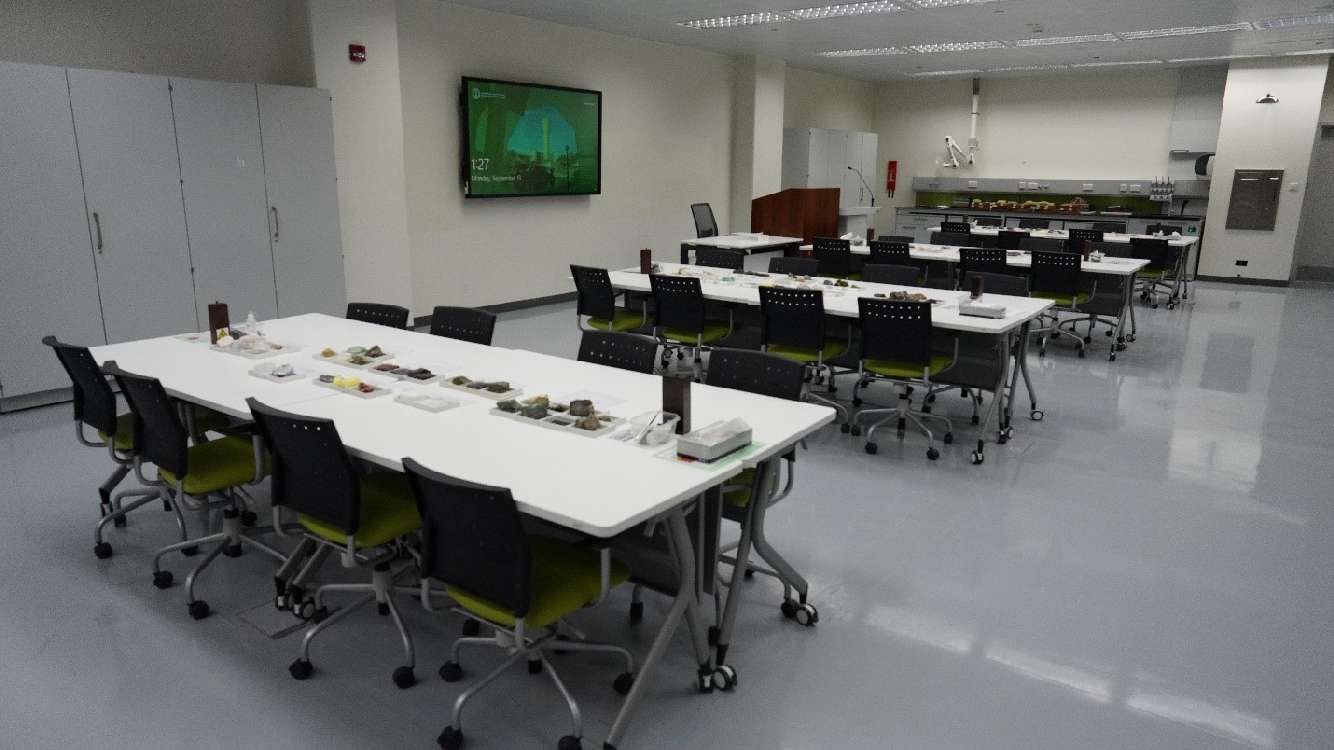
Structural Geology Laboratory
Location: Building 78, Room 2054
This lab is basically used for the teaching of structural geology, remote sensing and aerial photograph interpretation.
Laboratory studies and exercises focus on the interpretation of geological maps and cross-sections and stereographic projection using Schmidt net.
Computer software will be used in directional data interpretation, manipulation, and diagram and graph construction.
Contact: Syed Shahul Hamid for more info.
Core Cutting Laboratory
Location: Building 78, Room 0035
This laboratories is for cutting core samples from hard materials such as rock, concrete and etc. Also they used to grind and polish concrete specimens, natural stones, ceramic materials, etc.
Contact: Alberto E. Lundang for more info.
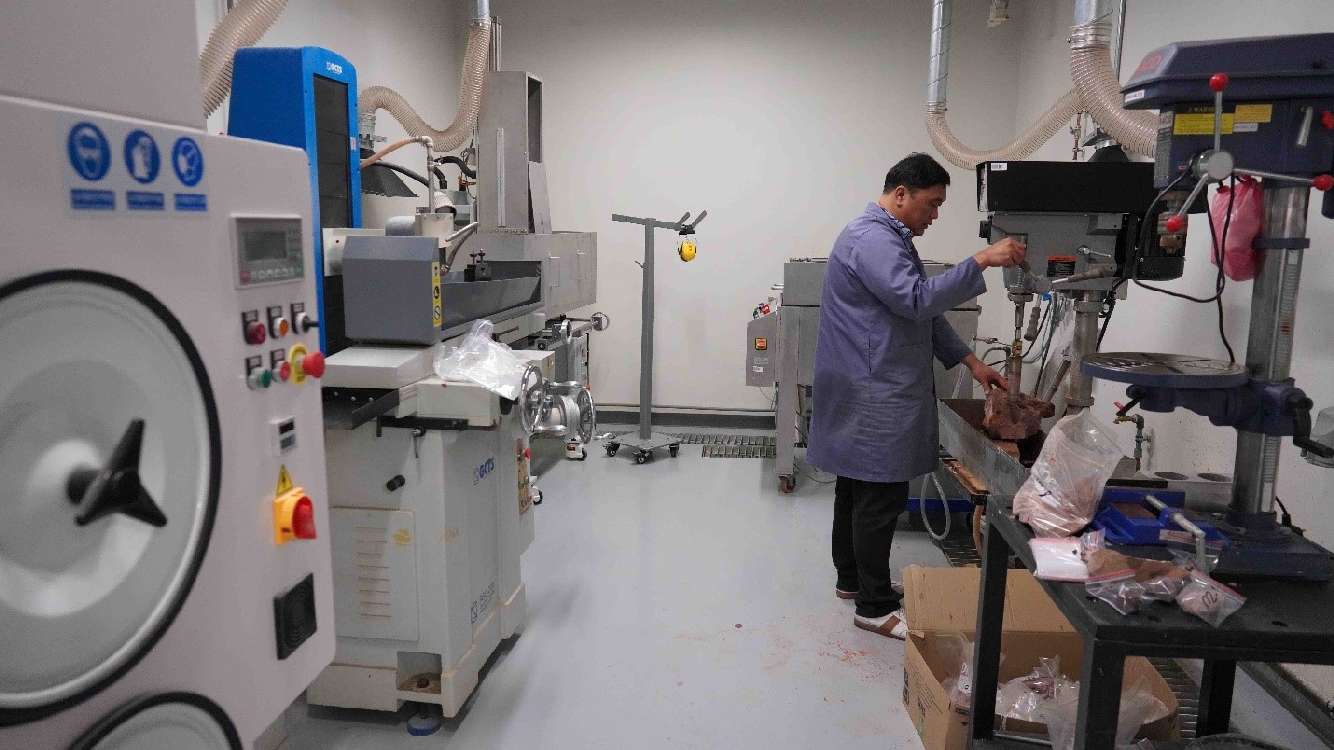
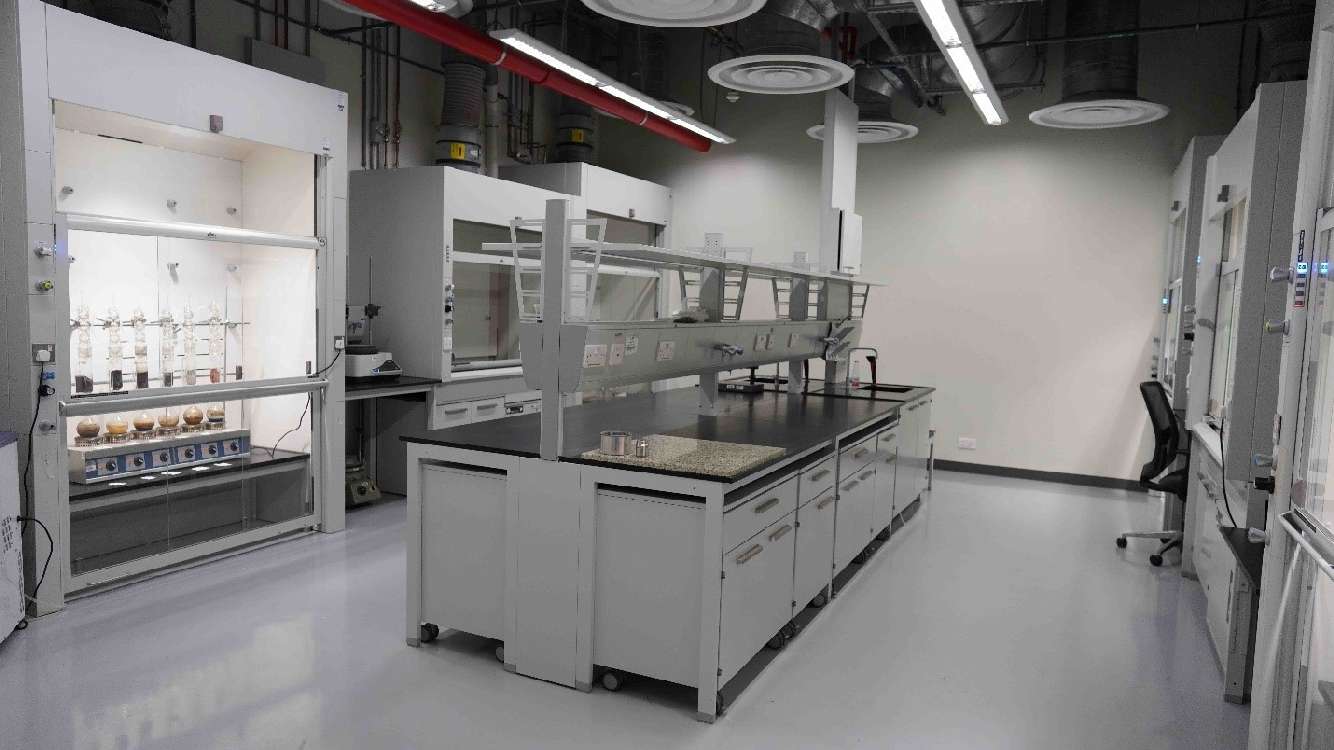
Core Cleaning Laboratory
Location: Building 78, Room 0029
Laboratory core cleaning procedures include different core cleaning solvents, establishment of initial water saturation by diverse techniques and processes of crude oil exposure that influence the final core wetting properties. In carbonate reservoirs, the acidic Polar Organic Components (POC) in crude oil are the main components dictating the wettability of the carbonate surface.
Contact: Alberto E. Lundang for more info.
Core Sampling Laboratory
Location: Building 78, Room 0036
Most core samples are obtained by drilling with special drills into the substance, such as sediment or rock, with a hollow steel tube, called a core drill. The hole made for the core sample is called the "core hole". A variety of core samplers exist to sample different media under different conditions.
Contact: Alberto E. Lundang for more info.
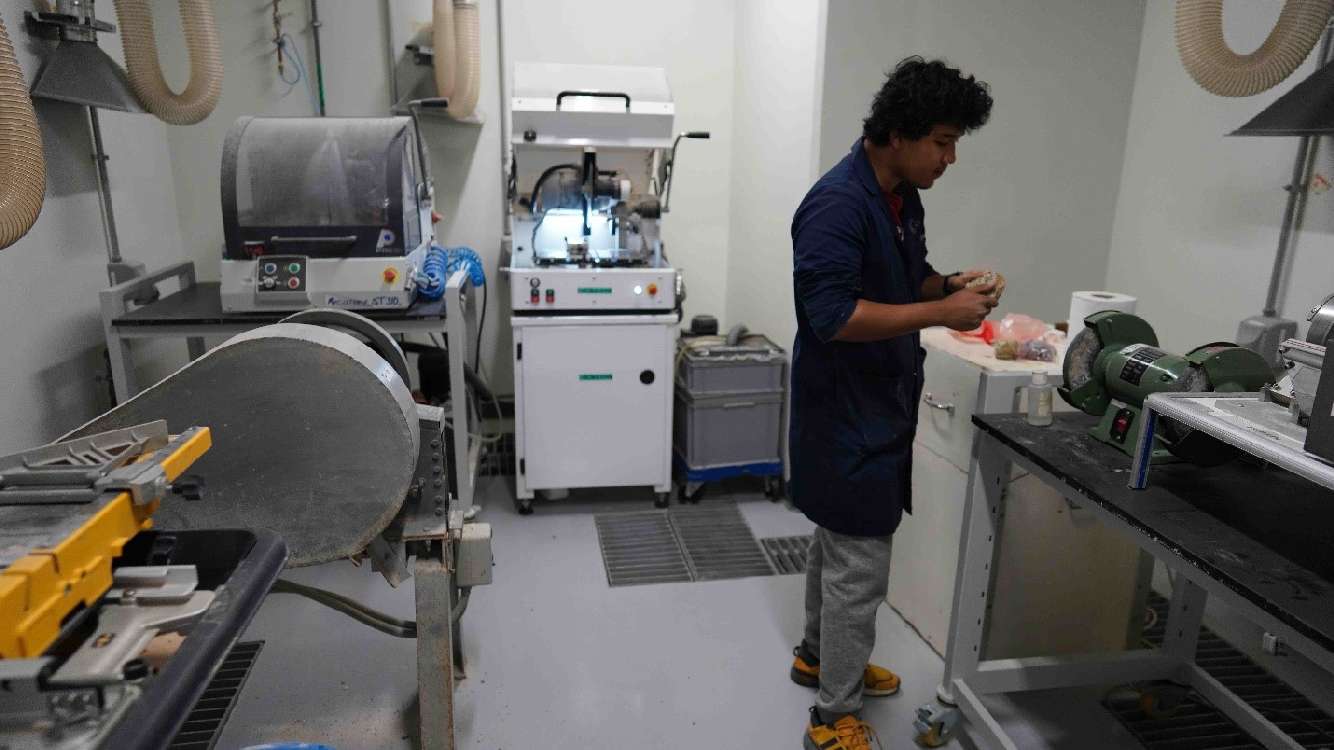
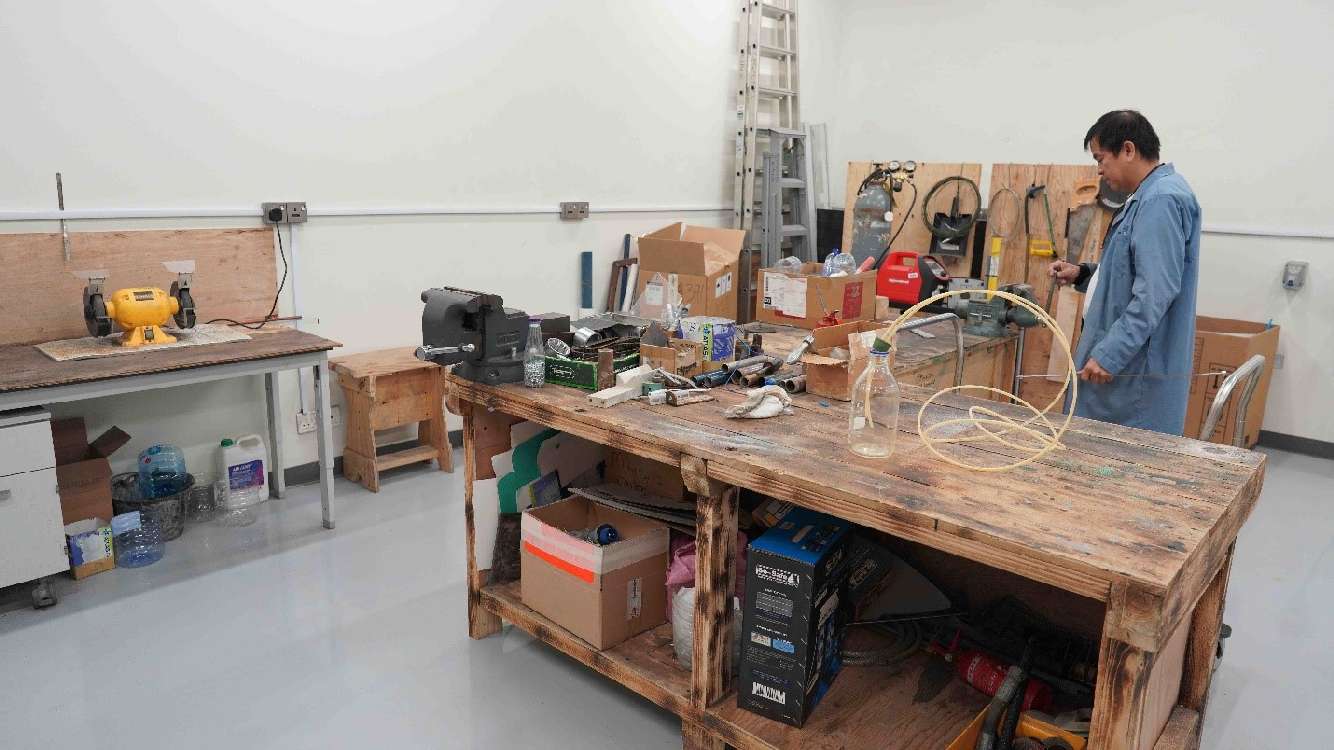
Machine Shop
Location: Building 78, Room 0027
A machine shop is a facility with equipment and supplies for machining, a process where parts are cut, fabricated, and finished to prepare them for use. Machine shops are used in the creation of new parts, as well as repairs of existing equipment and parts.
Contact: Alberto E. Lundang for more info.
Instrumentation Workshop
Location: Building 78, Room 0024
We verifies the working condition of the measuring instrument, while confirming that the laboratory is aware how much “error" there is in the measuring instrument's reading. In other words, calibration is a part of the process of confirming the validity of the results. Also we have a table top CNC machine for fabrication small parts/accessories that need by the end-user.
Contact: Alberto E. Lundang for more info.

CIPR

Automated Mineralogy Laboratory
Location: Building 15, Room 3205
The Automated Mineralogy Lab (AML) was built to map and quantify minerals for various applications. The AML has a complete set-up of instruments used in several stages. For instance, for sample preparation, Struers Accutom-50 is used to cut samples, Struers Tegramin-30 for polishing, and Q150T Quorum for carbon coating. The samples can be thin sections (typically 27 x 46 mm) or polished epoxied plugs (30 mm diameter). For the data acquisition and processing, the AML includes QEMSCAN 650F (Quantitative Evaluation of Minerals by Scanning Electron Microscopy) of FEI (Thermo Fisher Scientific) that is equipped with Quanta x50 FEG microscope, Dual Energy Dispersive X-ray Spectroscopy XFlash 6/30 Detectors of Bruker, multiple Species Identification Protocols (SIP), and several acquisitions and processing software (iMeasure, Esprit 1.9, iDiscover, iExplorer, and Maps). The SIP files are usually designed to analyze sedimentary, igneous, and metamorphic rocks for various applications. The QEMSCAN 650F is mainly operator-independent, time efficient, and generates reproducible and statistically valid results.
Contact: Abdullah M. Alqubalee for more info.
CT Scan Laboratory
Location: Building 78, Room 0015
The lab has the capability to perform scans for whole rock cores using the latest Medical CT scanner: Toshiba Alexion TSX-032A medical X-ray CT scanner (resolution > 1 mm). The scans help to identify major fracs / wormholes inside the cores to better understand the features of the rocks. Images obtained from Medical CT scanner and Micro-CT in lab 6209 can be visualized in specialized software (Avizo, PerGeos) on a devoted workstation (Dell Precision Tower 7910; Dual Intel® Xeon®; 256 GB of RAM; NVIDIA® Quadro® K6000 12GB video card) to further segment and characterize the rock samples.
Contact: Syed R. Hussaini & Hani S. AlMukainah for more info.


Petrography & Scanning Laboratory
Location: Building 78, Room 0012
The petrographic laboratory houses multiple state-of-the-art binocular stereo- and optical-petrographic microscopes (Olympus). All microscopes are equipped with high-definition cameras linked to imaging software for capturing thin-section photomicrographs. Such facilities allow geologists to study rock slabs, core plugs, and petrographic thin sections to study rock fabrics, mineralogical composition, textures, microstructures, and pore types and conduct pore visual estimates. Such information can be applied in hydrocarbon source rock, reservoir and aquifer characterization, and mineral exploration.
Contact: Dr. Lamidi O. Babalola & Abdullah M. Alqubalee for more info.
Fluid Thermo Physical Properties Laboratory
Location: Building 78, Room 2010
This is an oil and gas laboratory for the measurement and analysis of advanced fluids such as crude oil, and supercritical CO2 (scCO2) or modified supercritical CO2. Experimental studies on complex fluids in this laboratory are targeted toward characteristics of conventional and unconventional reservoir fluids and scCO2, at high temperatures and high pressure for heavy oil recovery and scCO2 storage in depleted oil reservoirs and a good understanding of the reaction kinetics and mechanism between the stimulation fluid such scCO2 and reservoir rock. The PVT and RDA systems are the two major pieces of equipment for characterizing fluid samples in this laboratory. In addition, an HTHP viscometer can be used in this Lab to measure the viscosity of crude oil, scCO2, and the mixture of crude oil and scCO2
Contact: Xianmin Joe Zhou for more info.


Analytical Laboratory
Location: Building 78, Room 1015
The Analytical Laboratory provides expert analytical testing and characterization services to the CPG-CIPR research community using a wide range of advanced analytical instruments. Available facilities include an ICP-OES, GC-MS, LC-MS, HPLC-ELSD, FT-IR, particle size analyzer, TGA, and a refractometer. These advanced techniques are employed to analyze a broad range of materials hereunder petroleum (crude oil and other hydrocarbon products), gas, oil field chemicals (polymers, surfactants), rock/clay, and petroleum fluids (brine and produced water).
Liquid Chromatography-Mass Spectrometry (LC-MS)
LC-MS is an analytical technique that combines the physical separation capabilities of High-Performance Liquid Chromatography (HPLC) with the additional capabilities of MS/MS mass spectrometry. The latter enables the determination of molecular weights and complex structures via the mass selection with one mass analyzer and mass characterization with a subsequent one (MS/MS). The chromatographic columns in place can separate multicomponent mixtures and there it is possible to provide the structural identity of the individual components on a molecular level.
HPLC-Evaporative Light Scattering Detection (HPLC-ELSD)
Another HPLC system in the laboratory is connected to an Evaporative Light Scattering Detector (ELSD) that enables all materials to be detected that can pass through the HPLC column. This setup is being used to quantify surfactants in experiments involving various forms of adsorption to rocks.
Contact: Dr. Kion Norrman for more info.
Fluid Characterization Laboratory
Location: Building 78, Room 1016
This laboratory is equipped with state-of-the-art equipment required to assess the performance of chemicals and their interactions used in enhanced oil recovery such as surfactants and polymers at reservoir conditions. Drop shape analyzers and interfacial equipment are available for the characterization of solid-liquid and liquid-liquid interfacial properties at different conditions. The lab facility is also equipped with state of art HPFA High-Pressure Foam Analyzer from Kruss. This is the world’s only measuring instrument for simultaneously analyzing the amount and structure of liquid foams under high pressure high temperature. The instrument provides various options for investigating foam behavior under the real process conditions of foam-assisted flooding methods in EOR as well as hydraulic fracturing.
Contact: Dr. Muhammad S. Kamal, Ahmed Mahboob & Mobeen Murtaza for more info.


Synthetic Chemistry Laboratory
Location: Building 78, Room 1014
This laboratory is dedicated to the synthesis of alkaline, surfactants, polymers, chelating agents etc. The synthesized products have different oil field applications including acid diversion, well stimulation, and enhanced oil recovery. The laboratory has recently been renovated with two well-ventilated fume hoods to provide personal protection against toxic vapors, fumes, and dust. The laboratory is fully equipped with the required chemicals, solvents, ordinary supplies, and glassware for the synthesis of products.
Contact: Dr. Syed M. Shakil Hussain, Dr. Muhammad S. Kamal & Mobeen Murtaza for more info.
Nano CT / Micro CT Laboratory
Location: Building 78, Room 0003
The lab has the capability of imaging and digitization of rock samples using micro-CT scanner: Zeiss VersaXRM-500 X-ray micro-CT scanner (True Spatial Resolution™ > 0.7μm). Micro-CT imaging enables assessment of the internal structure of the rock samples and their pore systems at various resolutions 1–50 micrometer. Micro-CT imaging provides us with a representation of the rock sample for reference and future use in digital rock physics studies.
Contact: Syed R. Hussaini for more info.


Advanced Petrophysics Laboratory-A
Location: Building 78, Room 3053
NMR rock analysis provides information about important properties of the rock, such as: Porosity, Effective porosity; BVI, CBW, FFI; Permeability relationship; Pore size distribution; Hydrocarbon typing; Viscosity; Total liquid volume (oil + water); Tortuosity (by way of diffusion); Wettability; and Diffusion distribution. CIPR currently hosts Oxford Instruments' Geospec2-75, operating at 2.2 MHz frequency with the capability of testing cylindrical samples of up to 2” diameter.
It is complemented by the GIT Systems Advanced software which allows simple repeatable experiments as well as a set of advanced state of the art NMR applications. An overburden cell is also being purchased to perform NMR measurements at reservoir conditions.
Contact: Dr. Abdulrauf Adebayo, Rahul S. Babu and Suaibu O. Badmus for more info.
Advanced Petrophysics Laboratory-B
Location: Building 78, Room 3054
The advanced petrophysics laboratories are equipped with state-of-the-art equipment that allow fundamental studies of rock properties and their interaction with reservoir fluids. The list of equipment includes a bench top and a high pressure-high temperature electrical resistivity and capillary pressure apparatus, gas sorption analyzer, a low field (2.2 MHz) nuclear magnetic resonance core analyzer, humidity oven, spontaneous drainage and imbibition cells, and a specially built Coreflood apparatus coupled with axially distributed electrical resistivity and pressure sensors that are used to monitor flow behavior of fluids in long core samples (3 ft long). This set of apparatus allows advanced petrophysical studies of conventional & unconventional rocks (such as tight sands and shales) and flow behavior of complex fluids (such as foam, sCO2, emulsion) in rocks. Experiments can be done at ambient and reservoir conditions.
Contact: Dr. Abdulrauf Adebayo, Rahul S. Babu and Suaibu O. Badmus for more info.




Rock Mechanics Laboratory
Location: Building 78, Room 1010
The rock mechanics lab is equipped with the state of the art facilities for testing the mechanical properties of rock samples. The following tests can be conducted at ambient and reservoir conditions: dynamic test (compressional and shear waves), unconfined compression test (UCS), triaxial test (drained, undrained, jacketed, single stage, multi-stage, hydrostatic compression), rock compressibility, and others.
- AutoLab 1500: High pressure triaxial system for measuring both static and dynamic geomechanical properties as well as resistivity at reservoir pressures up to 70 MPa (10,000 psi).
- AutoLab 500: Manually operated hydrostatic system for measurements of compressional and shear wave velocities at reservoir pressures up to 70 MPa (10,000 psi).
- Benchtop Velocity: Measurements of compressional and shear wave velocities at ambient pressure.
- BenchLab 7000: Designed to measure petrophysical rock properties at reservoir pressures in a compact modular setup. Properties measured include porosity, permeability, low permeability, and electrical resistivity at confining pressures up to 10,000 psi (70 MPa) with gas or liquid pore fluids.
- COMSOL Multiphysics simulation of rock mechanics stress strain lab experiments based on advanced numerical methods.
- Advanced Resistivity ARS-300: 4 electrode resistivity measuring system for ambient and reservoir pressure conditions.
- Proceq Pundit: Portable ultrasound pulse velocity measuring system to analyze rock sample properties using a frequency range 20 to 500 kHz.
- CAMSIZER X2: Particle size and shape analyzer with a wide measuring range for grain sizes using dynamic image analysis.
Contact: Dr. Ammar El-Husseiny or Saud Al-Dughaimi or Taqi Alzaki for more info.
Laboratory for Advanced Reservoir experimental studies
Location: Building 78, Room 1009
This laboratory is equipped with state-of-the-art equipment required to assess the performance in second and tertiary oil recoveries by seawater, carbonate water, chemical solution ( surfactants and polymer solutions), foaming, and supercritical CO2 injection at reservoir conditions. Several apparatus are located in this lab, including a dual-core core flooding apparatus, CO2/N2 foaming rheometer, X-Ray relative permeability apparatus, apparatus for Phase Behavior/Compatibility Study, Centrifuges, and modified core flooding apparatus. All apparatus in this Lab is applied to work at high temperatures and high pressure.
Dual-core core flooding apparatus: Two core holders with different lengths are installed in a controlled-temperature oven and can be placed horizontally, vertically, and 60o degrees in between. The length of the testing core sample is 45cm and 25cm, respectively. The apparatus can be used to conduct that single-phase fluid is injected simultaneously into both core samples in the core holders with the same injection flow rate or two fluids are injected individually into each core sample with different injection flow rates. The apparatus is applied to study oil recovery and its impact related to waterflooding, chemical injection, and ScCO2 miscible and immiscible displacements and scCO2 storage study. The maximum temperature is up to 150oC and confining pressure and pore pressure are 10,000psi and 6,000psi, respectively.
X-Ray relative permeability apparatus: The apparatus can be used to measure relative permeability for water/oil. Gas/oil, gas/water, and water or oil/scCO2 systems at HTHP conditions. The X-Ray core holder can be placed horizontally, or vertically and at any angle. The steady-state and unsteady-state relative permeability of the two-phase flow can be measured and the experiment regarding oil recovery and its impact by injecting any displacing agent can be conducted at HTHP conditions. The saturation profile can be measured in situ during the experiment. In addition, the experiment of scCO2 storage capacity and evaluation of caprock can be performed. The maximum temperature is up to 150oC and confining pressure and pore pressure are 10,000psi and 6,000psi, respectively.
Apparatus for Phase Behavior/Compatibility Study: APBC-300 is a first-of-its-kind equipment designed by Eng. Xianmin Zhou. This equipment consists of four independently operated, fully visual HPHT Hastelloy cells connected to four accumulators which locate fluids and a moveable high-quality zoom microscope camera with analysis software. It can be used to study: phase behavior, emulsions, foaming, and solubility between water or crude oil and scCO2 at reservoir conditions (maximum working pressure up to 10,000 psi and temperature of 150°C). In addition, the study on the modification of scCO2 with chemical solutions can be performed using this apparatus.
CO2/N2 foaming rheometer: The rheometer is used to measure the relationship between the shear rate and viscosity and evaluate the stability and bubble size of CO2/N2 foam at HTHP conditions. The shear rate is in the range of 0 to 1500 1/s. The foam generator is included in the rheometer for the Pre-generation of foam. The rheometer has an interface to connect to a core flooding apparatus for injecting qualified foam into the core plug for other research purposes. Designed to handle fluids and gases at temperatures up to 350°F, under a working pressure of up to 6,000 psi.
Contact: Redha Al-Abdrabalnahi for more info.






Routine Core Analysis Laboratory
Location: Building 78, Room 0028
This lab is dedicated to measuring the capillary pressure as well as wettability state reservoir rock by using Roc-fluid Centrifuge. In addition to that, an Automated Porosimeter/Permeameter is used to measure Ø and k at higher pressure up to 10,000 psi, and another Porosimeter to measure Ø at ambient pressure.
Contact: Redha Al-Abdrabalnahi & Sarmad Z. Khan for more info.
Thin Section Preparation Laboratory
Location: Building 78, Room 2060
This lab is dedicated for thin section preparation.
The laboratory is equipped with all kinds of equipment required for the preparation of thin sections, viz. Logitech (LP-30) polishing machine, Buehler PetroThin, Leco-MSX205 cutting machine, CS-10 cut-off saw, Microscope, and Fisher Isotemp Oven.
Contact: Fyl Louie Panoy for more info.


Stable Isotope Laboratory
Location: Building DTV-248 PEGTC, Room 131
The stable isotopes of hydrogen, carbon, nitrogen, oxygen, and sulfur are used as tracers of processes in a wide array of fields including geology, geochemistry, planetary science, archeology, ecology, biology, medicine, and pharmaceuticals. This lab uses these light stable isotopes to investigate rock-forming processes, rock-water interaction, petroleum source rocks, and environmental geochemistry.
Contact: Dr. John Humphrey for more info.
Femtosecond Laser Laboratory
Location: Building DTV-248 PEGTC, Room 132
A femtosecond is to a second roughly what a minute is to the age of the universe. In the femtosecond laser laboratory a pulsed laser is providing a time resolution of down to 90 fs with wavelengths in the range from 190 – 16000 nm. This enables the study of molecular motions on the timescale that they take place. This is relevant when it comes to the characterization of the phenomena that gives for example emulsification and effectivity of tracers.
Contact: Dr. Theis Ivan Solling for more info.


Heavy Isotope and Element Laboratory
Location: Building DTV-248 PEGTC, Room 134
The distribution of trace quantities of the elements in rocks and fluids can provide clues to their behavior through time. Heavy isotope systematics are key for constraining the age of rocks, timing of rock-forming episodes, and rates and durations of geological processes. Sensitive instrumentation in this lab can detect and measure nearly all the elements of the periodic table down to parts-per-quadrillion levels.
Contact: Dr. John D. Humphrey for more info.
Chemical Synthetic Laboratory
Location: Building DTV-248 PEGTC, Room 140
This laboratory is dedicated to nanoparticles synthesis using a variety of wet chemistry methods including microwave synthesis method (Anton Parr Monowave 450 and CEM Explorer 12), solvothermal method, sol-gel method, combustion method, solution method, etc. This lab is also equipped with some nanomaterials processing and characterization equipment including a Netzsch MicoCer Laboratory Mill (to grind microscale particles to nanoscale particles), an Eppendorf Multipurpose Centrifuge (5810R), an Anton Parr Autosorb iQ Brunauer–Emmett–Teller (BET) surface area analyzer, a Malvern Zetasizer (Nano ZS) system, a Cary 7000 UV-Vis-NIR spectrometer, and a Horiba Deutta fluorescence and absorbance spectrometer.
Contact: Dr. Zhengwei Pan or Dr. Yafei Chen for more info.


Furnace Based Material Synthetic Laboratory
Location: Building DTV-248 PEGTC, Room 139
This laboratory is dedicated to materials synthesis using high-temperature methods. The lab contains four 1700 °C muffle furnaces for solid-state reaction synthesis in air, two tube furnaces (1200 °C, 1600 °C) for thermal evaporation and condensation synthesis in controlled atmosphere, and two 1200 °C muffle furnaces for heat treatment of materials. For the tube furnace synthesis, the reaction chamber pressure (1 – 750 Torrs), the type of carrier gases (N2 or Ar) and its flow rates (1 sccm to 1000 sccm), the reaction temperature (up to 1500 °C), and the reaction duration (minutes to hours) can be preciously tuned and controlled.
Contact: Dr. Zhengwei Pan or Dr. Yafei Chen for more info.
Nanophotonics Laboratory
Location: Building DTV-248 PEGTC, Room 142
This laboratory is dedicated to spectral characterization and imaging of luminescent materials. A series of state-of-the-art spectral and imaging systems are available in this lab. The spectral systems include a Horiba Nanolog spectrofluorometer equipped with a Xenon arc lamp, a PMT detector and an InGaAs detector (excitation: 180–900 nm; emission: 200–1700 nm); a Horiba H20-UVL VUV Fluo iHR equipped with a Deuterium lamp, a PMT detector and a CCD detector (excitation: 115–400 nm; emission: 200–1700 nm); a Princeton Instruments spectrograph system equipped with an Energetiq EQ-99 laser driven light source (LDLS), two HRS-500SS SpectraPro imaging spectrographs, a BLAZE 400HR CCD camera and a PIXIS: 2KBUV CCD camera; two Ocean Optics QE series fiber spectrometers; and a Princeton Instruments FERGIE Raman spectrograph. The imaging systems include a Perkin Elmer IVIS Lumina III imaging system equipped with Si CCD camera, a home-made SWIR imaging system equipped with a Princeton Instruments NIRvana: 640 InGaAs SWIR camera, an Ofil DayCor LuminarHD corona camera for UVC imaging, and a Rongland night vision monocular for NIR imaging. In addition, this lab also houses a NewPort LCS-100 solar simulator, a series of power-tunable laser diodes (405–980 nm), a MOXTEK mini X-ray tube, NewPort power meters, and other light sources and optical components.
Contact: Dr. Zhengwei Pan or Dr. Yafei Chen for more info.


Microfluids Laboratory
Location: Building DTV-248 PEGTC, Room 235
The microfluidic lab is dedicated to visualizing the multiphase flow in porous media under conditions from ambient to high pressure and high temperature. The applications include enhanced oil recovery (e.g., gas flooding, surfactant flooding, and supercritical CO2 flooding), CO2 geological sequestration, etc. The high pressure and high temperature (HPHT) microfluidic system is rated for 20,000 psi and 150 °C and allows for the injection of three fluids. This lab is also equipped with a whole glass micromodel fabrication system for testing micromodels with various structures.
Contact: Dr. Wei Yu for more info.
Produtivity Enhancement Laboratory
Location: Building 78, Room 2011
Productivity enhancement laboratory is addressing issues of reaction kinetics, diffusion, interfacial phenomena, and phase changes associated with applications of reactive fluids (acids, emulsified acids), phase behavior (gas Hydrate, gas storage) and complex fluids (viscoelastic surfactant, gels, foam, emulsion) in real reservoir condition. The lab has good facilities that include of: High pressure Anton Paar rheometer MCR 702, High pressure and temperature drop shape analyzer, microfluidic set up, High pressure and low temperature sapphire rocking cell and Alta-HP hydrate equipment.
Contact: Jafar S. AlHamad for more info.


Fracturing Evaluation Laboratory
Location: Building 78, Room 2014
Evaluate the potential of chemicals and proppants when applied to hydraulic fracturing. The interaction between fracturing materials and rocks is measured in terms of created/retained fracture and matrix permeability, as well as fracture surface roughness. Using multiple mechanical testers to assess mechanical rock properties at both macro and nanoscale. Rheology testing of potential formulations for hydraulic fracturing.
Contact: Murtada AlJawad for more info.
Subsurface Storage & Recovery
Location: Building 78, Room 2016
Precise laboratory screening of surfactants for the ability to generate ultra-low IFT in oil/brine systems is a pre-cursor to laboratory core-flooding and field applications. Screening is judged in our lab through visualization of type III microemulsions in oil/brine systems and defining optimum salinity for surfactant slug under reservoir conditions. Higher temperature and pressure and crude composition are considered during surfactant screening using high pressure rated sapphire cells which provide useful screening methods for higher temperature reservoirs.
In addition, CO2 and H2 subsurface storage applications are also investigated in this lab, for instance 1) the rock-gas interaction with pressure and temperature effects, and 2) the initial and residual saturation of the gas via core-flooding with salinity, rock type, pressure and temperature effects.
Contact: Dr. Khalid Zidan Abdelgawad Ibrahim and Dr. Ahmed Al-Yaseri for more info.


Advanced EOR Laboratory
Location: Building 78, Room 2018 - 2019
Two core flooding apparatus are located in the labs and are used to evaluate the oil recovery factor by chemical flooding and scCO2 injection and the dynamic adsorption of chemical solution, which is a displacing agent for tertiary oil recovery. The working temperature is up to 150oC and the pore pressure is up to 6,000psi.
Contact: Xianmin J. Zhou & Redha AlAbdrabalnabi for more info.
MRI Laboratory
Location: Building 78, Room 3052
This laboratory is equipped with a multifrequency magnetic resonance imaging (MRI) equipment that allows the study of magnetic relaxation pattern of different nuclei (H, F, C, Na) that occupy the pores of geological rock samples, after they have been subjected to various sequence of nuclear magnetization. With this, 2D and 3D internal images of rocks at sub-millimeter scale and the pattern of fluid displacement in them can be visualized. The equipment comes with an inbuilt proprietary software that incorporates modern pulse sequences and allows researchers to utilize it for fundamental and applied research pertinent to the vision and mission of the college.
Contact: Dr. Abdulrauf Adebayo and Rahul Salin for more info.


FIB-SEM Advanced Correlative Microscopy Laboratory
Location: Building 78, Room 0006
The advance correlative microscopy laboratory (Building 78 Rooms 006 & 007) is currently undergoing rapid transformation with the installation of two new versatile high end microscopes for end to end high-resolution SEM imaging and material characterization at room temperature and in cryogenic conditions.
The FESEM is an ideal choice for imaging large fields of view with excellent image quality and fast-time-to-image. In addition, the presence and combinations of EDS, WDS and Micro-XRF analyzers on the FESEM offer the most comprehensive compositional and structural analysis of materials currently possible. The resolution achieved for both instrument during installation were 1.6 ± 0.3nm at 1kV and 0.9 ± 0.2nm at 10kV using gold particles on carbon high resolution SEM calibration specimen.
The Laser-FIBSEM integrates a femtosecond laser for speed, a Ga+ beam for accuracy, and a SEM for high-resolution imaging to enable the fastest workflows. The isolated laser chamber prevents contamination of the electron column and detectors, while ensuring sample integrity with easy transfer between the SEM and laser chamber under vacuum.
The combination of the two instrument offers several application possibilities from advance study and imaging of kerogen bearing rocks to any requirement for milling nanostructures onto material samples and preparation of extremely large cross-sections; millimeters in width and depth, within a few minutes (up to 15 mio. µm³/s). Also we can perform slice-and-view destructive 3D imaging, observation of samples without the need for coating, TEM lamella preparation, precise sample surface polish at room temperature and in cryogenic conditions. Dr. Amao is responsible for the daily operation of the lab.
Contact: Abduljamiu O. Amao for more info.
FIB-SEM
Location: Building 15, Room 3206
FEI's Helios Nanolab is an Ultra High Resolution Scanning Electron Microscope (SEM) equipped with Focused Ion Beam (FIB) technology, offering sub-nanometer resolution electron beam imaging over a large operating voltage range and 3D (volumetric) imaging with HR and UHR modes.
Helios is equipped with
- LMIS Ga Ion source
- Gas injection system with Platinum Deposition
- In-lens detector (TLD – SE, BSE)
- In-column SE detector (ICD)
- In-column BSE detector (MD)
- Everhart-Thornley SE detector (ETD)
- Retractable high contrast solid-state backscatter electron detector (CBS)
- High precision 5-axes Piezo stage
- On Column Plasma Cleaner
Contact: Nadeem Ahmed Syed for more info.


Nanoscopy Laboratory
Location: Building DTV-248 PEGTC, Room 133
The twin-head STED Nanoscope (Abberior Instruments) is an advanced optical microscope with a cutting-edge resolution of down to 20 nm. The super-resolution imaging is achieved by a technology known as stimulated emission depletion (STED), which led to the Noble Prize in Chemistry in 2014. When compared to other nanometer-resolution imaging methods, such as electron microscopes, STED is advantageous in studying the dynamics or reactions of wet samples. The customized twin-head design fits the challenging environment in petroleum and CO2 research.
Contact: Dr. Jack H. Y. Lo for more info.
ToF-SIM Laboratory
Location: Building 78, Room 0031
The laboratory is equipped with a state-of-the-art TOF-SIMS M6 from IONTOF GmbH. TOF-SIMS (Time-Of-Flight Secondary Ion Mass Spectrometry) provides (i) chemical surface characterization by detecting all elements and isotopes simultaneously with a detection limit range between ppm and ppb, (ii) 2D and 3D chemical imaging with a 50 nm resolution, and (iii) identifies organic materials on a molecular level. It is a surface technique for solid materials with a 1–2 nm information depth, but using FIB cutting or depth profiling the information depth increases to the micrometer range. Besides FIB the instrument is equipped with an argon cluster ion source and has MS/MS capabilities. This extremely versatile instrument has a broad range of applications. The instrument will be used for applications where it is important to identify/monitor organic materials on or in geo-related materials.
Contact: Dr. Kion Norrman for more info.


HP-HT Flow Loop
Location: Building DTV-248 PEGTC, Room 153
One of the distinguished facilities of the College to support research activities in the areas of multiphase flow/flow assurance/production technology in the upstream oil & gas industry. Equipped with state-of-the-art advanced instrument (Laser Doppler Anemometry, Particle Imaging Velocimetry, Isokinetic Sampling, Shear Stress & Corrosion Probes, and High-Speed High-Resolution Visualization). Capacity to handle gas/liquid, solid/liquid, liquid/liquid flow in a pipe diameter ranging from 1 inch to 4-inch diameter, 15 ft. to 45 ft. length, and 0o to 90o inclination. Accommodate various types of gases and liquids with flow velocity range from 0-10 ft/sec for liquid and 0-45 ft/sec for gases at high pressure up to 1500 psi and temperature of -12 to 180 oC.
Contact: Mr. Rahul Salin Babu for more info.
Incubators/Cluster 2,3,4,5,6
Location: Building DTV-248 PEGTC, Room 220, 216, 212, 208, 204
As an integral part of the college objective the aim is to take basic research discoveries to the market. Our incubator spaces are having that particular focus. Currently, three technologies are being matured to reach at least the level of a minimum viable product.
Contact: Dr. Theis Ivan Solling for more info.

Petroleum Engineering Research
Quantitative Analysis Laboratory
Location: Building 78, Room 2015
A research laboratory for graduate students where quantitative analysis of fluids is conducted. Analysis such as pH, conductivity, density, viscosity, etc. are measured. The Sapphire Rocking Cell is a laboratory instrument to research and test low-dosage hydrate inhibitors (LDHI), corrosion inhibitors (KI), AA and KHI and also multi-phases.
Contact: Dr. Abdullah Sultan & Jafar Sadeq AlHamad for more info.


Productivity Enhancement Laboratory
Location: Building 78, Room 2011
A new Faculty research Laboratory where experiments on core flooding, fracturing, acidizing, and enhanced gas recovery are investigated.
The laboratory is currently being equipped with the state-of-the-art equipment, with the objective of helping faculty funded projects, graduate thesis research work and undergraduate senior design research work.
Contact: Jafar Sadeq AlHamad for more info.
Cementing Research Laboratory
Location: Building 78, Room 3015
The oil well cementing laboratory at CPG KFUPM is research and teaching lab in which is prepared with all facilities needed by students and researchers for cement slurry preparation, conditioning, and testing. Different testing equipment are available in this lab to evaluate the properties of the cement slurry such as its rheology, filtration properties, and thickening time. The gelation properties could also be evaluated in this laboratory at room conditions or high pressure and high temperature situations. In addition to that the gas migration through the cement body could also be evaluated. This lab also incorporates facilities for cement cubes and cylinders preparation for the purpose of testing the properties of cement solidified sheath. Equipment for testing the cement compressive and tensile strength, evaluation of the cement interaction with other corrosive fluids such as CO2-saturated brines is also possible with the facilities provided in the cementing lab.
Contact: Dr. Salaheldin Elkatatny & Jabar AlJabri for more info.


Drilling Fluid Research Laboratory
Location: Building 78, Room 3014
The performance evaluation of the various drilling fluid systems is a necessity to ensure optimum drilling operations. Hence, drilling fluids testing must be conducted to evaluate their properties, achieve the desired parameters, and determine the performance limitations. The drilling fluids laboratory is designed to serve both instructional and research purposes to undergraduate and graduate students. This laboratory is equipped with the most recently developed apparatuses that can provide various measurements on various mud systems at standard and high-pressure high-temperature conditions.
Contact: Dr. Salaheldin Elkatatny & Mobeen Murtaza for more info.
Advanced Core Flooding Laboratory
Location: Building 78, Room 1007
Contact: Assad A. Barri & Ammar AlRamadhan for more info.

Petroleum Engineering Teaching
Well Control Laboratory
Location: Building 76, Room 1234
The DrillSIM 20: Five simulators of this type are available in the well control lab. DrillSIM 20 is a light interactive real-time drilling and well control simulator. This simulator is a useful tool for providing practical well control training in accordance with acknowledged certification standards like IADC and IWCF.
Contact: Dr. Salaheldin Elkatatny & Ahmed AlSabaa for more info.


Drilling Simulation Lab - DS5000
Location: Building 78, Room 3049
The DrillSIM 5000: DrillSIM 5000 is the industry benchmark for sophisticated drilling and well control simulation. It is a tactile simulator with multiple hardware that mimics a real field experience, the simulator includes a driller console, manifolds and remote panels.
The DrillSIM:5000 Classic can be utilised to develop and run exercises including, but not limited to: Oil-based mud, bubble point and gas flash out, Gas expansion and migration, Dynamic pressures during well control, Lost circulation, loss zones and leak off testing, Wellbore ballooning/breathing, Horizontal and deviated wells, Hole cleaning, turbulent, laminar flow, Drilling on junk, pipe twist-off, stuck pipe, Sloughing, differential sticking, key seating, pack-off, High pressure high temperature (HPHT) wells, and Managed pressure drilling (MPD)
Contact: Dr. Salaheldin Elkatatny & Ahmed AlSabaa for more info.
Drilling Simulation Lab - DS600 + Educator
Location: Building 78, Room 3024
The DrillSIM 600: DrillSIM 600 combines 3D surface and downhole graphical views with realistic rig equipment sounds and functionalities for a truly immersive learning experience. DrillSIM:600 can be utilized to develop and run exercises including, but not limited to: Dynamic pressures during well control, Lost circulation, loss zones and leak off testing, Horizontal deviated wells, Hole cleaning, turbulent, laminar flow, Drilling on junk, pipe twist-off, stuck pipe, Sloughing, differential sticking, key seating, pack-off, High pressure high temperature (HPHT) wells, and Managed pressure drilling (MPD).
Contact: Dr. Salaheldin Elkatatny & Ahmed AlSabaa for more info.


Fluid Properties Laboratory
Location: Building 78, Room 3017
Fluids Properties Laboratory is a teaching Laboratory where experiments about reservoir fluids properties (oil/gas) are conducted.
These properties are vital to determine the amount of crude oil and gas in the reservoir, and the amount that can be lifted to the surface.
The laboratory is equipped with state-of-the-art equipment in the petroleum industry and with the objective of helping petroleum engineering students to practically verify the theoretical aspects discussed in the classroom.
The PVT FV EDU System is the latest state of the art equipment that can perform a full range of experimentations with crude oil, volatile oil or gas condensate. These experiments include:
- Constant Compositional Expansion
- Constant Compositional Depletion
- Separator Test
- Differential Vaporization
- Fluid Envelop Phase
- Constant Volume Depletion
Contact: Jafar Sadeq Al Hamad or Eassa Abdullah for more info.
Rock Property Laboratory
Location: Building 78, Room 3016
Rock properties laboratory main role is to measure the properties of core samples, providing a physical model of reservoir characterization.The measured data are used to define storage capacity (porosity), the magnitude and distribution of flow capacity (permeability), and fluid saturation, as well as lithology and other parameters.
The URC-628 Ultra Rock Centrifuge is the newest generation of ultra high-speed rock-core centrifuges available to the core analysis laboratory for rapid determination of capillary pressure curves, sample preparation (for subsequent flow tests), relative permeability, and wettability determination using the Amott and USBM methods.
With the data analysis package, the URC-628 can also be used to determine the capillary pressure curves and the relative permeability curves for the displaced phases in both the drainage and imbibition modes.
Contact: Eassa Abdullah for more info.


Cementing Research Laboratory
Location: Building 78, Room 3015
The oil well cementing laboratory at CPG KFUPM is research and teaching lab in which is prepared with all facilities needed by students and researchers for cement slurry preparation, conditioning, and testing. Different testing equipment are available in this lab to evaluate the properties of the cement slurry such as its rheology, filtration properties, and thickening time. The gelation properties could also be evaluated in this laboratory at room conditions or high pressure and high temperature situations. In addition to that the gas migration through the cement body could also be evaluated. This lab also incorporates facilities for cement cubes and cylinders preparation for the purpose of testing the properties of cement solidified sheath. Equipment for testing the cement compressive and tensile strength, evaluation of the cement interaction with other corrosive fluids such as CO2-saturated brines is also possible with the facilities provided in the cementing lab.
Contact: Dr. Salaheldin Elkatatny & Jaber AlJabri for more info.
Drilling Fluid Research Laboratory
Location: Building 78, Room 3014
The performance evaluation of the various drilling fluid systems is a necessity to ensure optimum drilling operations. Hence, drilling fluids testing must be conducted to evaluate their properties, achieve the desired parameters, and determine the performance limitations. The drilling fluids laboratory is designed to serve both instructional and research purposes to undergraduate and graduate students. This laboratory is equipped with the most recently developed apparatuses that can provide various measurements on various mud systems at standard and high-pressure high-temperature conditions.
Contact: Dr. Salaheldin Elkatatny & Mobeen Murtaza for more info.

Drilling Fluids and Cementing
Location: Building 2, Room 104
In drilling fluids and cementing lab, petroleum engineering students are acquainted with the basic techniques of formulating, testing and analyzing the properties of drilling fluid and oil well cement.
The Cement Atmospheric Consistometer is used for conditioning cement slurries as the slurry is subjected to down-hole conditions of elevated temperature under atmospheric pressure.
From the recorded data, it also helps determine the slurry thickening time, free water content, fluid loss, viscosity, and other various rheological properties.
Compression Machine Servo-Plus
This machine is designed to perform uniaxial compression tests on cement and rock samples with high accuracy. The cement sample is crushed to get the final uniaxial compressive strength. During the application of load, the real time chart is generated for the sample. The shape of the tested samples can be in cubes or cylinders.
Contact: Mobeen Murtaza for more info.



Drop Shape Analyzer (DSA100)
Location: Building 2, Room 105
Measures the surface tension of liquids using the Pendant Drop method. The results can be used to analyze the relationship between the wetting of the solid and the liquid properties. The results help to provide a scientific picture of the interface contact. Other solutions for measuring the liquid-liquid interfacial tension, for measurements at high pressures and for surface rheology.
Contact: Jafar S. Alhamad for more info.
Thermo Gravimetric Analysis
Location: Building 2, Room 109
The TGA HP/1 is a highly versatile research instrument for measuring the thermo physical properties under pressure. The instrument continuously measures mass while the temperature of a sample is changed over time. Mass, temperature, and time are considered base measurements in thermo gravimetric analysis while many additional measures may be derived from these three base measurements.
Contact: Ammar M. Alramadhan for more info.


Fluid Properties Laboratory
Location: Building 2, Room 113
Fluids Properties Laboratory is a teaching Laboratory where experiments about reservoir fluids properties (oil/gas) are conducted.
These properties are vital to determine the amount of crude oil and gas in the reservoir, and the amount that can be lifted to the surface.
The laboratory is equipped with state-of-the-art equipment in the petroleum industry and with the objective of helping petroleum engineering students to practically verify the theoretical aspects discussed in the classroom.
The PVT FV EDU System is the latest state of the art equipment that can perform a full range of experimentations with crude oil, volatile oil or gas condensate. These experiments include:
- Constant Compositional Expansion
- Constant Compositional Depletion
- Separator Test
- Differential Vaporization
- Fluid Envelop Phase
- Constant Volume Depletion
Contact: Abdulsamed Iddris for more info.
Reservoir Rock Properties Laboratory
Location: Building 2, Room 114
Rock properties laboratory main role is to measure the properties of core samples, providing a physical model of reservoir characterization.The measured data are used to define storage capacity (porosity), the magnitude and distribution of flow capacity (permeability), and fluid saturation, as well as lithology and other parameters.
The URC-628 Ultra Rock Centrifuge is the newest generation of ultra high-speed rock-core centrifuges available to the core analysis laboratory for rapid determination of capillary pressure curves, sample preparation (for subsequent flow tests), relative permeability, and wettability determination using the Amott and USBM methods.
With the data analysis package, the URC-628 can also be used to determine the capillary pressure curves and the relative permeability curves for the displaced phases in both the drainage and imbibition modes.
Contact: Eassa Abdullah for more info.

Geosciences Research
Adv. Seismological Exploration Laboratory
Location: Building 78, Room 3010
The Advanced Seismological Exploration Laboratory is versatile with many portable geophysical instruments for electrical, electromagnetic, magnetic, gravity, and seismic surveys. The lab is dedicated to equipment preparation, fieldwork support, and advanced geophysical research, including controlled tank experiments to simulate and analyze subsurface phenomena in detail. As a dynamic learning and demonstration space, the laboratory enables hands-on interaction with cutting-edge tools for students and visitors, showcasing the group's technical expertise and research capabilities.
Key Equipment in Lab 3010:
- Electrical Resistivity: Syscal R1, Syscal Pro, Syscal Deep Marine, and ZZ Resistivity systems for subsurface resistivity imaging, essential for characterizing reservoir properties and fluid distribution.
- Electromagnetic Tools: ABEM WalkTEM, Structure Scan Mini XT, and KMS systems for investigating geological structures, detecting hydrocarbon-bearing zones, and mapping groundwater or contamination plumes.
- DGPS: Trimble R10 DGPS and Leika systems for precise geolocation during field surveys.
- Gravity: CG-5 Gravitometers for identifying density variations in subsurface formations, aiding in resource exploration and void detection.
- Magnetic: Cesium and Proton Magnetometers for identifying magnetic anomalies caused by ferromagnetic minerals or buried metallic objects.
- Ambient Vibration Monitoring: Recorders for analyzing natural ground vibrations.
- Borehole Logging Systems: MountSopris Scout hardware with sonic, resistivity-IP, and natural gamma-ray probes for in-depth subsurface investigation.
Contact: Abdul Latif Ashadi & Ahmed A Shaibani for more info.


Scanning Electron Microscope Laboratory
Location: Building 78, Room 0006
The Scan Electron Microscopy lab is one of the most important teachings and research facility for all undergraduate and graduate courses in Geosciences and Petroleum Engineering Department in College of Petroleum Engineering & Geosciences. All basic and applied research of most of the faculty members specifically in the College of Petroleum Engineering &Geosciences depends on advanced research in quantitative characterization of minerals and elements and hydrocarbons which can only be accomplished with the help of scanning electron microscopy.
M4 TORNADO Micro X-ray Fluorescence (µXRF) Bruker AXS
The lab system is one of the High quality imaging and easy measurements, with large samples and high speed mapping with high resolution, and high throughput signal processing, Versatility and convenience by variable pressure and automatic chamber door higher speed by parallel processing and large SDDs with most advanced Esprit M4 TORNADO and X-Method software and Advanced mineral analysis with AMICS.
Contact: Mashaer A. Alfaraj & Abduljamiu O. Amao for more info.
Advanced Geophysics Laboratory
Location: Building 78, Room 3013
In addition to educational activities, the Advanced Geophysics Laboratory serves as a critical workspace for preparing, calibrating, and testing data acquisition equipment before deployment in the field. The lab plays a vital role in equipping geophysics students with practical skills by allowing them to interact with the latest data acquisition systems and geophysical tools used in industry and research.
Key Equipment in Lab 3013:
- Geospace Seismic Recorder (GSR): wireless data acquisition system capable of high-resolution seismic data collection for reflection, refraction, and passive seismic applications.
- Multi-component borehole acquisition system (Geotomographie): advanced equipment for borehole geophysics.
- Electromagnetic Induction Tools (EM31, EM38): portable systems for mapping soil conductivity, groundwater salinity and subsurface structures.
- Seismic and Geoelectrical Tools: Instruments supporting both active and passive seismic methods and resistivity measurements for comprehensive subsurface analysis.
Contact: Abdul Latif Ashadi & Ahmed A Shaibani for more info.


Siesmic Physical Modelling Laboratory
Location: Building 78, Room 3076
The Seismic Physical Modeling Laboratory is a specialized facility dedicated to advancing seismic and electrical geophysical research. The lab is responsible for maintaining and preparing wireless seismic sensors for optimal field deployment while conducting detailed microscale and mesoscale experiments. A primary focus is on advanced electrical methods, including Induced Polarization (IP) and Spectral Induced Polarization (SIP), with applications in subsurface characterization and resource exploration. Research conducted in this lab includes investigations into SIP responses in low resistivity pay zones, analysis of pyrite content, differentiation between laminated and dispersed clays, and characterization of water saturation in brine-filled micropores or freshwater formation fluids. These studies are critical for enhancing subsurface imaging and understanding reservoir properties.
Key Equipment in Lab 3076:
- Portable Spectral Induced Polarization (PSIP) Field/Lab Unit: multi-channel instrument optimized for laboratory and near surface SIP, resistivity, time-domain IP, and self-potential measurements
- KT-10R Magnetic Susceptibility and Conductivity Meter for evaluating magnetic and electrical properties of subsurface materials
- IGU-BD3C-5 3C Broadband Sensor: high-resolution sensors for advanced seismic data acquisition
- Sample Core IP Tester (SCIP): portable, battery-operated instrument for measuring electrical properties of drill cores, samples, and outcrops
- Oscilloscopes: Tektronix 212 and MDo3014 models for monitoring and analyzing signals during experiments.
- Seismic sensors: IGU-16HR 3C Sensors IGU-16HR 1C Sensor for high-density seismic acquisition and modelling.
Contact: Abdul Latif Ashadi & Ahmed A Shaibani for more info.
Micro Paleontology Laboratory
Location: Building 78, Room 3051
This lab is used by graduate students and faculty for research in the field of micropaleontology with reference to historical development and investigating micropaleontological and biostratigraphic analysis; survey of the major microfossil groups, their morphology, taxonomy, ecology, geologic distribution, evolutionary trends, and stratigraphic use, with selected problems from Arabia and nearby regions.
We also have the most comprehensive library of micropaleontological literature in the Middle-east.
Contact: Prof. Michael A. Kaminski & Syed Shahul Hamid for more info.


Advance Microscopy Laboratory
Location: Building 78, Room 3050
Teaching faculty and research geologists in the department of geosciences use the facility to conduct extensive and detailed studies of the pore systems, diagenetic lithofacies and reservoir properties of various carbonate and clastic reservoirs in Saudi Arabia, the new research class microscopes allows the faculty and research students to systematically and properly carry out these tasks for evaluation of hydrocarbon fluid inclusions, and identification of opaque mineral under reflected and transmitted light. In addition, the PETROG software system for petrographic data capture, management, analysis, display and reporting with integrated camera and motorized high precision stepping stage is available at this lab location.
BX53-P Olympus
Polarizing microscope with a superb performance in polarized light with fluorescence’s light attachment. Has a breakthrough combination of UIS2 infinity-corrected optics and Olympus original optical-design. With a new, extended line of compensators to make the BX53-P versatile enough to handle observation and measuring applications in virtually any field. With a Leading Digital Petrography Tool PETROG software.
Contact: Mushabbab Q. AlRaqdi & Syed Shahul Hamid for more info.
Advanced Rock Physics
Location: Building 78, Room 3077
Inductively Coupled Plasma-Mass (ICP-MS) Spectrometers
For advanced high-performance analysis with reliability and ultra-flexibility, measurements of inorganic contents (trace metals) in air, water or soil samples. In addition, this system is also used for teaching various Geology and ENVS courses in showing students how to asses environmental impact and pollution problems.
Microwave Digestion System Model Mars 6
Microwave digestion system used for sample extraction and synthesis for chemical, geological, biological and environmental samples. It is urgently required to be used with the new ICP/MS Machine as a sample preparation unit.
Contact: Adnan Mubarak & Syed Shahul Hamid for more info.

Hydrogeology & Environmental Laboratory
Location: Building 78, Room 2007-2008
This lab facility accommodates state of art research and teaching equipment, such as GC/MS, Total carbon analyzer, Photo reactors UV/SUN Media, Ion Chromatograph, Gas Chromatograph, Portable GC system supporting all faculty & Graduate Research studies.
In additional to Hydrogeology Studies and Geostatistical Modeling, Geology of Ground Water supplies and Hydrodynamics, Water analysis and groundwater.
GC/MS
This is one of the powerful state-of-the-art analytical instruments in the Environmental and Hydrology lab. It is useful for detection and quantification of volatile and semi-volatile organic compounds. It is equipped with three important sample injection units; purge-and-trap (P&T), headspace (HS) and direct liquid injection (AS). It is also configured to use solid-phase micro-extraction (SPME) injection. These make the instrument to be suitable for wide range of hydrocarbon and organic compound analyses from solid, liquid and gas matrix.
UV reactor
This is used for the treatment of contaminated water. It remediates polluted water by advanced oxidation process (AOP) method. It uses UV radiation (and sometimes) other oxidants to degrade organic contaminants, reducing all organics to carbon dioxide and water as the final product.
PC-BOD
This is a benchtop multipurpose instrument for measuring electrical conductivity, turbidity, dissolved oxygen, carbonate, hardness, ammonia content, alkalinity, and biological oxygen demand (BOD). It is a very useful instrument for analysis of the quality of groundwater, produced water and drinking water.
Portable GC/MS
This is another important, yet rare, instrument. It is designed for quick and rapid analysis of hydrocarbons and other organic compounds in all types of environmental samples (air, water, and soil). It uses SPME and needle trap (NT) for sampling from all types of matrices. It is designed for field sampling and analyses and can be used in the lab as well.
Contact: Tajudeen A. Oyehan & Eyad Safi for more info.
Petrography Laboratory
Location: Building 78, Room 2059
The Geosciences department has a fully equipped rock preparation facility to support researchers in petrographic thin section making make thin sections. The lab has advanced precession thin section preparation machines such as Logitech LP-50, a Thin section precision lapping and polishing machine, a Buhler petro thin, a thin section system, and a Geoform Thin section precision lapping and polishing machine, amongst others.
PetroThin. Thin Sectioning System
This machine used to prepare different geological thin sections
Logitech Thin Section Polishing Machine
Automated thin section machine
SimpliMet Thin Section Polishing Machine
EcoMet+AutoMet 250
Contact: Habeeb A. AlAbbas & Syed Shahul Hamid for more info.


InOrganic Geochemistry Laboratory
Location: Building 78, Room 3060
X-Ray Diffraction System, model empyrean XRD system from PanAnalytical
XRD system Empyrean diffractometer includes all the optional items required. The system has all the technical requirements and provided additional features. detectors, goniometer, auto-sampler, stage, x-ray source, sample holder and software are the perfect fit for advanced XRD lab applications. The system is recent, state of the art and modular with fully functional support for our future anticipated use. The systems detectors were developed in collaboration with CERN and are used by many reputable universities around the world like MIT, Stanford etc.
NER AutoScan
NER Autoscan is a Multi-Probe Core Scanner for Petrophysical measurements with NERS Data Miner software. Used to record and calibrate sections of rock slabs or drill core and build digital library, the system includes: Auto scan PROBE FOR PERMEABILITY, THE SS PROBE Auto scan PROBE FOR VELOCITY, THE V-PROBE, Auto scan PROBE FOR RESISTIVITY, THE Z- PROBE Auto scan PROBE FOR DATA ANALYSIS, DATA MINER WITH CLUSTER ANALYSIS.
Contact: Bandar D. Al-Otaibi & Abduljamiu O. Amao for more info.
Seismic Monitoring & Research Laboratory
Location: Building 76, Room 2223
The Seismic Monitoring & Research Laboratory in Building 76 is a pivotal component of the Department of Geosciences. It is home to the state-of-the-art 120-second Trillium Broadband Seismometer system, a critical asset for the recording and monitoring of earthquakes. This advanced facility plays a vital role in the real-time interpretation of seismic events, providing immediate insights into the epicentre, magnitude, and other critical geophysical parameters of earthquakes as they occur. Through its sophisticated equipment and strategic location, the laboratory not only enhances our understanding of seismic activity but also significantly contributes to geosciences by offering invaluable data for research and analysis.
Contact: Abdul Latif Ashadi for more info.


Organic Geochemistry Laboratory
Location: Building 78, Room 3059
Three principal analytical instruments are housed in the organic geochemistry laboratory. These complement other CPG lab capabilities, such as the Environmental Lab and the Stable Isotope Lab, in analyzing aspects of the geochemistry of hydrocarbon source rocks and oils. Central to that characterization is the anhydrous pyrolysis system (RockEval 7S) that provides, TOC, Tmax, OI, HI, and sulfur for kerogen typing and maturity analysis. The lab also houses mercury analysis instrumentation and elemental solution analysis by ICP-OES.
Contact: Dr. John D. Humphrey for more info.
Marine Geology Laboratory
Location: Building 78, Room 2017
The Marine Geology laboratory is available for researchers and teaching purposes in the field of sedimentology, oceanography, neoichnology, and other modern-studies. This laboratory is mainly used for conducing research in modern settings, such as tidal flats, marshes, shoreface, etc.; however, some of the equipment also compliment rock record studies, particularly in unconventional reservoirs. Several instruments are housed in this laboratory including multibeam echo sounder, portable X-ray Fluorescence, portable X-ray device (veterinary type), grab sampler, oven, micro CTD detectors, vibracorer, marine drone with simple sonar, etc. Current research that is being conducted in the Marine Geology laboratory mainly focuses on coastal areas of the Arabian Peninsula.
Contact: Dr. Korhan Ayranci & Syed Shahul Hamid for more info.


Sedementology & Stratigraphy Laboratory
Location: Building 78, Room 2012-2013
In the Sedimentology and Stratigraphy lab researchers and students can utilize state of the art instruments for petrographic scanning, trace element analysis, particle size/particle shape analysis and portable field equipment for direct outcrop measurements all to support research applications.
Axio Scan.Z1 is capable of acquiring high resolution petrographic thin-section scans in low (5x) and high (40x) magnification both in PPL and XPL along with a high-end workstation for image segmentation and data processing. S4 T-STAR is a rapid trace element analysis equipment utilizing total reflection X-ray fluorescence spectrometry method for liquid and powder samples with detection limits in ppb range. Particle size distribution and projected grain shape analysis of loose sediment using dynamic image analysis and laser diffraction with size detection range 0.1 µm – 3500 µm both in wet and dry conditions. Field equipment for direct measurement of elemental composition and permeability.
Contact: Mutada Al-Hashem & Dr. Kahlid H. Al-Ramadan for more info.
Geosciences Teaching
Mineralogy & Optics Laboratory
Location: Building 78, Room 2053
This is an essential teaching lab facility being used for core courses in Mineralogy and Optics, Petrology, Sedimentation, and Stratigraphy. This laboratory facility has been recently developed as a unique microscopy lab with Wi-Fi capable polarizing microscope for digital classrooms set up. With an integrated Wi-Fi router and streaming camera. To directly connect the polarizing microscopes in the lab to Labscope, and to share microscope images via Wi-Fi to HD monitors or projectors with the entire classroom.
Students laboratory work and exercises include studies of common rock-forming minerals using a polarizing microscope, morphological crystallography using crystal models, and determination of mineral specimens by physical properties and using a hand lens, and recalculations of chemical analysis. Studies of igneous, sedimentary and metamorphic rocks in hand specimens and under the microscope, exercises on types, texture, and composition of common sedimentary rocks; core description; lithofacies map; facies analyses; correlation. Computer software will be used in stratigraphic column construction and data interpretation.
Contact: Syed Shahul Hamid for more info.


Physical and Historical Laboratory
Location: Building 78, Room 2052
This is an essential laboratory facility used for Physical Geology, Historical Geology, Paleontology and Biostratigraphy courses. Students' Laboratory work and exercises concentrate on mineral and rock identification and classifications based on physical and chemical properties, examination of stratigraphic rock samples, index fossils, and their identification, lithostratigraphic correlation, paleoenvirnoments.
Introduction to macrofossils and microfossils, including basic aspects of taxonomic theory, classification, and principles of nomenclature. Interpretation of Topographic, paleogeographic and geological maps and cross-sections are tough with Particular emphasis on the industrial application of these forms to aid palaeoenvironmental and biostratigraphic determinations as applied primarily to oil and gas exploration and production.
Contact: Syed Shahul Hamid for more info.
Geophysical Teaching Laboratory
Location: Building 78, Room 2055
The Geophysical Teaching Lab facility is being used in teaching Geophysical course like
- GEOP102 - Essentials of Geophysics
- GEOP215 - Introduction to Seismic Exploration
- GEOP304 - Gravity and Magnetic Exploration
- GEOP480 - Geophysics for Petro Engineers
- GEOL690 - Petrophysics and Well Log
During which Geophysical instruments and their field techniques are shown to students. The lab is used to display different geophysical instruments being used in the field in order to make some analysis, field investigation, and collect data in a large scale. The instruments like CG-5 Autograv Gravity Meter, Cesium and Proton Magnetometer System with Gradiometer Option and KMS-5100 Land CSEM transmitter etc. are being used.
Contact: Syed Shahul Hamid for more info.


Structural Geology Laboratory
Location: Building 78, Room 2054
This lab is basically used for the teaching of structural geology, remote sensing and aerial photograph interpretation.
Laboratory studies and exercises focus on the interpretation of geological maps and cross-sections and stereographic projection using Schmidt net.
Computer software will be used in directional data interpretation, manipulation, and diagram and graph construction.
Contact: Syed Shahul Hamid for more info.
Support Laboratories
Core Cutting Laboratory
Location: Building 78, Room 0035
This laboratories is for cutting core samples from hard materials such as rock, concrete and etc. Also they used to grind and polish concrete specimens, natural stones, ceramic materials, etc.
Contact: Alberto E. Lundang for more info.


Core Cleaning Laboratory
Location: Building 78, Room 0029
Laboratory core cleaning procedures include different core cleaning solvents, establishment of initial water saturation by diverse techniques and processes of crude oil exposure that influence the final core wetting properties. In carbonate reservoirs, the acidic Polar Organic Components (POC) in crude oil are the main components dictating the wettability of the carbonate surface.
Contact: Alberto E. Lundang for more info.
Core Sampling Laboratory
Location: Building 78, Room 0036
Most core samples are obtained by drilling with special drills into the substance, such as sediment or rock, with a hollow steel tube, called a core drill. The hole made for the core sample is called the "core hole". A variety of core samplers exist to sample different media under different conditions.
Contact: Alberto E. Lundang for more info.


Machine Shop
Location: Building 78, Room 0027
A machine shop is a facility with equipment and supplies for machining, a process where parts are cut, fabricated, and finished to prepare them for use. Machine shops are used in the creation of new parts, as well as repairs of existing equipment and parts.
Contact: Alberto E. Lundang for more info.
Instrumentation Workshop
Location: Building 78, Room 0024
We verifies the working condition of the measuring instrument, while confirming that the laboratory is aware how much “error" there is in the measuring instrument's reading. In other words, calibration is a part of the process of confirming the validity of the results. Also we have a table top CNC machine for fabrication small parts/accessories that need by the end-user.
Contact: Alberto E. Lundang for more info.

